
Leadership by Algorithm: Who Leads and Who Follows in the AI Era?
by
David de Cremer
Published 25 May 2020
Not every company is in business for the same reason, so they are not necessarily focused on creating the same kind of value. Algorithms lacking the emotional connection with what brings value to people’s lives do not engage in this kind of analysis. Finally, critical thinking skills are not only necessary for leaders to use, but also to install in the company’s work culture. Leaders build work cultures by setting examples and instilling values for which the company wants to be recognised. In this sense, a leader who practices critical thinking will also equip their followers with the same skill. After all, as we will see later, employees will work with algorithms to optimize efficiency in the operations and execution of tasks, so they need to be able to manage these processes in the same way that the leader manages the direction and purpose of the company.
…
Empower algorithms in non-biased ways With an inclusive mindset in place, algorithms will be more easily seen as co-workers. They will be recognized as being part of the same team as you are! To achieve this level of inclusion it is necessary to create a sense of connection with the algorithm rather than a sense of distance. An inclusive work culture helps with this ambition. Inclusive leaders foster this work culture by helping employees to understand the value of the algorithm. They can do this by creating continuous education opportunities to understand advancements in technology. Be humble, and work on being tech savvy The presence of algorithms may create discrepancies in technological knowledge between different departments.
…
It seems to have even reached the point that managing the maintenance of peace and stability is the only focus left, simply because the corresponding and ever-increasing bureaucracy has left no room to do anything else! Today, the major complaint is that people have too much paperwork to do and too many boxes to tick. For those who fear change, this may be good news because the system ensures that there is very little risk that work culture will become disrupted and turn into chaos. For those who are averse to maintaining the status quo, and want to encourage change for the sake of growth, this completely overwhelming administrative approach is nothing short of a nightmare. Why your mindset matters Most of you will know that it is not only individuals who see this problem, organizations themselves have also reached this conclusion.

How to Work Without Losing Your Mind
by
Cate Sevilla
Published 14 Jan 2021
She then listened to a podcast interview with the CEO of the Happiness Institute, Meik Wiking, who said that, while that statistic about people in the US is true, actually, people who live in Denmark and have children are happier than those without, simply because their work culture allows for it. ‘That was mind-blowing for me,’ she said, ‘because there are work cultures that allow people to be more than just workers, and I started to get a bit angry that we’re crap at this. We’re allowing this work culture to be as it is. I also write emails at night and set deadlines without asking if that deadline is appropriate. We’re all part of it, and we need to create work cultures where it’s OK to have other lives without repercussions.’ It’s the question of how we’re all negatively contributing to this inhospitable working environment for parents that has to be brought to the forefront.
…
Here’s my shortlist of reasons why work is so shit for us – an actual shit list: no.1 We work for under-qualified, poorly trained managers who have negative impacts on our career trajectory and development, our ability to work effectively and our mental health. no.2 Toxic work cultures that are lacking in boundaries – allowing egos, envy, mental health problems and drama to run rampant – and also promote unhealthy working habits that normalize burnout and extreme amounts of stress. no.3 Employees are lulled into a false sense of security by being told their company is ‘family’ and encouraged to ‘bring their whole self to work’ – and then punished for it. no.4 Women are still paid less than their male colleagues, and our overall working culture puts parents at a disadvantage and is particularly unsupportive of working mothers.
…
It’s hilarious and helpful with so many on-point insights that you’ll wonder if she’s been reading your Slack messages (she hasn’t)’ Lauren Bravo, author of How to Break Up with Fast Fashion ‘It’s funny and smart and incisive and smashes every narrative we’re fed as workers (and women). And it’s way beyond being an essential book on work culture; it’s an essential feminist text. The women who read this – employees, managers, wherever they are in the structure – will be changed by it. It’s nothing short of radical’ Terri White, editor, Empire ‘Fearless and funny! If you feel like work is getting or letting you down Cate is here to give you a hug and offer you practical advice.

The Unusual Billionaires
by
Saurabh Mukherjea
Published 16 Aug 2016
Through the above exhibit we are trying to convey the fact that since separate market share was reported for premium edible oils, Saffola has been a dominant player in this segment. Architecture Multinational FMCG companies in India are known for their professional management and a positive, pro-employee work culture. Over the years, Marico has matched and perhaps beaten these MNCs on this aspect of work culture which is critical to attract good talent. It has used its powerful board of directors for effective guidance. Let’s look at these aspects in detail: Work Culture—Marico’s key competitive advantage: The role of culture in building a sustainable profitable business is underappreciated by investors, particularly in the case of promoter-led businesses.
…
Rama told me, ‘I have known Asian Paints for thirty years and all through this period, they have been obsessed about hiring the best people, about having the best IT and the smartest technology-driven process. They started obsessing about talent and technology way before anybody else in India.’ There are three critical aspects to Asian Paints’s architecture: a) creating a unique working culture that nurtures talent; b) using IT to improve competitive advantages; and c) creating a truly independent board of directors to help shape evolution of the firm. Asian Paints does not offer the highest pay packages to business school graduates. Then how does the firm manage to achieve one of the lowest attrition rates in its junior and middle management team across the consumer sector in India?
…
Reminiscing in his office in Nungambakkam, one of Chennai’s oldest neighbourhoods, Kurien told us that he and Madhukar inherited a company that made paints for marine and rail applications. He estimated that 60 per cent of the colours that Berger produced in the 1970s were not even on the shade cards of distributors. As Kurien says, the biggest challenge was to change the work culture within Berger. This, along with a shift in focus towards decorative paints, was the transformation that Kurien led through the 1980s. Kurien hired high-quality talent and worked on building a culture that encouraged and retained such talent by giving full autonomy to employees. This improvement in culture gave the employees a sense of togetherness.
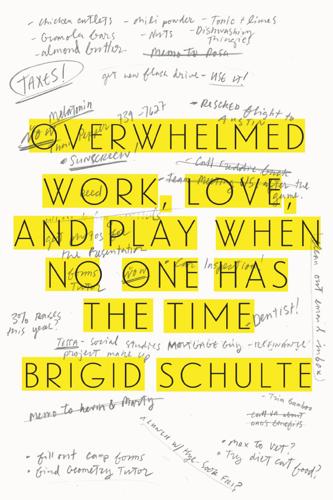
Overwhelmed: Work, Love, and Play When No One Has the Time
by
Brigid Schulte
Published 11 Mar 2014
Markus Dettmer and Janko Tietz, “Germany’s Massive Job-Saving Program Could Still Fail,” Spiegel online, December 30, 2009, www.spiegel.de/international/business/betting-on-an-upswing-in-2010-germany-s-massive-job-saving-program-could-still-fail-a-669502.html. 7. “Guide: Maximum Weekly Working Hours,” Gov.uk website, December 3, 2012, www.gov.uk/maximum-weekly-working-hours/overview. 8. “The Danish Work Culture,” Copenhagen Capacity website, www.copcap.com/content/us/living_working/working_in_copenhagen/the_danish_work_culture. 9. Janet C. Gornick and Marcia K. Meyers, “Institutions That Support Gender Equality in Parenthood and Employment,” in Gender Equality, ed. Gornick and Meyers, 3–64. 10. “Public Holidays,” Visit Copenhagen website, www.visitcopenhagen.com/good-to-know/practical-stuff/public-holidays. 11.
…
As I sought to get to the root of how work contributes to the overwhelm, it became clear complicated factors are at play: extreme work hours,12 rapidly evolving technology, information overload, globalization, changing demographics, shifting gender roles, the high status of busyness, economic anxiety, and cutbacks that “offload” more work onto the fewer remaining employees, not to mention the increased cost of living, stagnant wages, growing household debt, and the steep cost of child care followed by eye-popping college tuition bills—increasing 893 percent since 1980—that perpetuate the work-and-spend spin cycle.13 But as I read case after case of workers, both men and women, claiming they’d been discriminated against because of caregiving responsibilities, as I read studies on human performance and motivation that show our work culture is completely at odds with how we produce our best work, I came to understand that something deeper, and more insidious, drives us. I was about to meet the Ideal Worker. * * * The ideal worker doesn’t take parental leave when a child is born. He doesn’t need a place or time to pump breast milk.
…
“There’s a lot of … He’s a real man; he works 90-hour weeks. He’s a slacker, he works 50 hours a week,” engineers told Cooper.64 It’s the kind of culture that applauded when pregnant Marissa Mayer announced she wouldn’t take maternity leave after being appointed CEO and president of Yahoo! Catherine Keefer, forty-two, reveled in the all-hours work culture when she first moved to the Bay Area and got a job where most women end up in high-tech: the “pink ghetto” of marketing. Work felt like the center of a very exciting universe. It was fun. There were Ping-Pong tables, upscale cafés serving specialty coffees, and valet dry-cleaning services so you’d never have to leave.
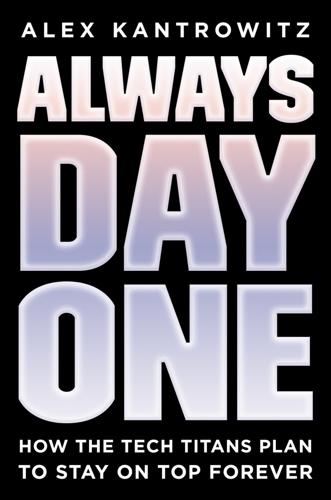
Always Day One: How the Tech Titans Plan to Stay on Top Forever
by
Alex Kantrowitz
Published 6 Apr 2020
“Apple Just Dismissed More than 200 Employees from Project Titan, Its Autonomous Vehicle Group.” CNBC. CNBC, January 24, 2019. https://www.cnbc.com/2019/01/24/apple-lays-off-over-200-from-project-titan-autonomous-vehicle-group.html. “How is the work culture”: “How Is the Work Culture at the IS&T Division of Apple?” Quora. https://www.quora.com/How-is-the-work-culture-at-the-IS-T-division-of-Apple. fifteen-dollar-per-hour wage floor: Salinas, Sara. “Amazon Raises Minimum Wage to $15 for All US Employees.” CNBC. CNBC, October 2, 2018. https://www.cnbc.com/2018/10/02/amazon-raises-minimum-wage-to-15-for-all-us-employees.html
…
When IS&T’s projects are finally completed, they can cause even more headaches for Apple employees, who are left with a mess to clean up. Multiple people told me their Apple colleagues were forced to rewrite code after IS&T-built products showed up broken. On Quora, a popular question-and-answer site among Silicon Valley types, the question “How is the work culture at the IS&T division of Apple?” has elicited some unbelievable responses. “The engineering quality is extremely lackluster,” says the top answer, written by an anonymous user who says they worked at IS&T. “When I first joined, I was absolutely SHOCKED to see how projects were designed and developed.
…
See also Google Alter Girl (Syverson), 201 Amazon, 21–53 abuses of power by, 196 and Amazon Web Services (AWS), 45, 169, 171, 175 and artificial intelligence/machine learning, 42, 43, 109, 145–46, 219–20, 221 automation program at (Hands off the Wheel), 37–40, 41–44 and community support, 217 daily surveys at, 49–50 Day One culture of, 5–7 dominance of, 3 and Echo, 109, 111, 145–46, 147 employees of, 33–34, 41–46 employee training offered by, 35 Engineer’s Mindset at, 16 Go grocery store of, 21–22, 25, 53 headquarters of, 21, 53, 217 invention culture at, 16, 22–26, 45, 51 invention system at, 26–30, 36, 101 inventory management at, 37–40, 42–43 leadership principles at, 23–25, 47–48, 50 New York Times article on, 48–51 recruitment AI issues of, 219–20, 221 reinvention embraced by, 8 robot employees of, 30–35 tax breaks sought by, 217–18 technical creativity cultivated at, 51–52 work culture at, 48–51 written proposals at, 26–29 See also Bezos, Jeff Apple, 129–61 and AirPods, 133 and Apple Car, 148–51, 161 and Apple Watch, 133 collaboration absent from, 17, 131, 137–38, 142–43, 146–47, 150–51, 159 design imperative at, 134–36, 144, 149–50 dominance of, 3 and Engineer’s Mindset, 17, 131, 143, 151, 161 environment of, 136–37 hierarchies and top-down organization at, 131, 136, 143, 150, 151, 161 and HomePod, 129–31, 146–48, 151, 161 invention at, 131, 136–37, 160–61 and iPhone, 108, 133, 140–42, 149, 155–59, 160–61 and IS&T issues, 152–55 leadership of, 134 and Macs, 133 and privacy face-off with FBI, 155–59 products developed by, 7–8 refinement culture of, 132–33, 142–43 and revenue declines, 140–41 secrecy and silos enforced at, 137–40, 142–44, 146–47, 149, 151 and Siri, 142–46, 161 and user feedback, 144 values of, 159 visionary culture at, 17 See also Cook, Tim aQuantive, 163–65, 187, 196 artificial intelligence and machine learning advances in, 109 at Amazon, 42, 43, 109, 145–46, 219–20, 221 at Apple, 145, 150–51 automation technology’s integration of, 13, 14 bias potential in, 219–21 Bostrom on, 203–5 and dystopian scenarios, 195, 197 at Facebook, 75–81, 88 and face-recognition technology, 75–76 at Google, 109, 111–12, 114, 119–23 impact on employment, 36, 201–2, 204–5 and inventive cultures, 9–10 at Microsoft, 13, 164, 166, 170, 175–80 and Pentagon’s Maven project, 119–23 in predictive stocking, 38–40 recruitment of professors to private sector, 197 Athey, Susan, 166–71 automation and erosion of meaning, 198–202 impact on employment, 35–36, 216, 223–24 in inventory management, 37–40, 41–44 and predictability of humans, 37–38, 44 widespread application of, 11–14 Automation Anywhere, 13 Bach, Robbie, 164 Baldwin, Micah, 29, 49, 52 Ballmer, Steve at annual meetings, 181–82 leadership of Microsoft, 7, 18, 164–65, 167, 169–70, 171 Nadella’s succession of, 7, 18, 165, 171 Baquet, Dean, 49 Bauer, Ken, 139–40 Bezos, Jeff and Amazon Echo, 109 on careers in tech industry, 35 on Day Two, 5–6 drive of, 46–47 and Engineer’s Mindset, 15, 16, 18 fourteen leadership principles of, 23–25, 47 and invention culture of Amazon, 16, 22–23, 25, 53, 101 leadership style of, 3 and New York Times article, 49 and PowerPoint ban, 26 technical creativity cultivated by, 52 and Washington Post, 61–62 and written proposals, 26–29 Zuckerberg’s request to shadow, 61–62 See also Amazon “bias for action” principle, 24 bias in technology, potential for, 219–20 Birch, Rosa, 86–88 Black Mirror series, 191–92, 193–94 Bloodworth, James, 33 Bostrom, Nick, 203 Bosworth, Andrew, 84–85 Breisacher, Tyler, 119–20, 122 Brin, Sergey, 98, 106, 107, 110, 110n, 113 Brooker, Charlie, 192 Brownlee, Marques, 129–31, 147, 158 Cambridge Analytica, 83, 84, 158 Cameron, David, 192 Candela, Joaquin, 76–80 Carney, Jay, 49 Case, Anne, 201 Chan Zuckerberg Initiative, 218 Chew, Chee, 103–4, 105 China, 74, 135, 141, 142, 157, 192 Christensen, Clayton, 9 Claire, Craig Le, 14 cloud computing, 10, 166, 167–71, 175 collaboration Apple’s lack of, 17, 131, 137–38, 142–43, 146–47, 150–51, 159 communication tools enabling, 96–99, 115–16, 123, 125, 128 and Dweck’s “growth mindset” model, 185 and Engineer’s Mindset, 16–17, 17 at Google, 95, 96–99, 101, 105, 112, 114–16, 118–19, 128 at Microsoft, 166, 183–89, 190 at Square, 212 technology for, 10, 212, 225 transparency in support of, 96, 115–16 community, sense of, 200–201 compensation models, algorithmic, 81–82 conformity, teaching, 214–15 Cong, Jose, 98, 99 Conger, Kate, 94 Cook, Tim and Apple Car, 148–49 and Engineer’s Mindset, 17, 131 and hierarchies at Apple, 131, 136 and iPhone sales, 140–41 leadership style of, 134, 136–37 and privacy face-off with FBI, 156–57 and revenue declines, 140–41 and Siri, 143 and visionary culture of Apple, 17 See also Apple copying other products, 70–74 Cornell’s School of Industrial and Labor Relations, 207–8, 210 Cowie, Jefferson, 201–2 Cox, Chris, 71 creativity, value of, 215 Cuban, Mark, 7, 58 Cue, Eddy, 134 “customer obsession” principle, 25 Damore, James, 93–95, 127 DataRobot, 13 Day One culture, 5–7 Dean, Jeff, 109, 111–12, 120 deaths of despair, 201 Deaton, Angus, 201, 202 democratic invention.
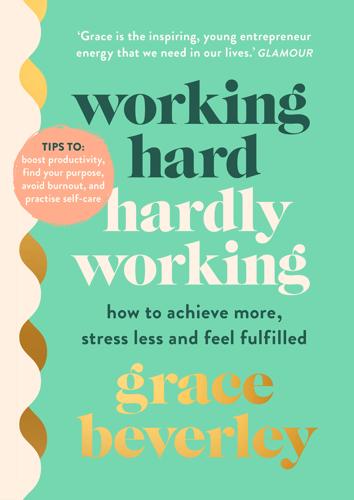
Working Hard, Hardly Working
by
Grace Beverley
The fact that I agree with Petersen, and yet am not a millennial, does not negate her argument in the slightest. In fact, it shows just how epochal these issues stand to be – perhaps it’s not just a single burnout generation we’re looking at, but an entire new burnout culture created by our new working world. Work culture used to be about ‘earning stripes’, but we don’t want that any more. Generally, we no longer think it’s necessary to sit through fifteen years of corporate work in order to know the field and move up the rankings, paying respect to the culture in return for a pension we’re not even guaranteed to receive.
…
Alongside late nights at the office with no overtime, unpaid internships and work experience are the norm in many industries. While the UK is by no means the worst when it comes to labour protection, it does become all the more shocking when we learn that other EU countries are proactively fighting this change in work culture by putting further laws in place to protect their citizens as the issue develops. I’m not sure how to ‘productively’ combat this – after all, we want to be able to work hard and benefit from the fruits of going ‘above and beyond’, but it certainly casts doubts on the incentive to work hours and hours unpaid in the name of winning a gold productivity star and raises a variety of valid, and very serious, questions..
…
The thought of taking a day off due to being on the verge of a cold sits right next to ‘taking a day off because your dog ate your report’ in the things-you-just-don’t-do-at-work pile.) Yet it stands to reason that if you spend just one day in bed resting, you’ll be fine for the rest of the week. Instead, as is typical of our stoical twenty-first-century working culture, you end up waiting until you are actually quite sick and have infected the rest of your office with both a cold and your own glowing reputation of someone who just does not take days off. And when someone finally pleads with you to just go home (if you’re lucky), you end up taking more days off while you recover than you would have needed had you fought it early.
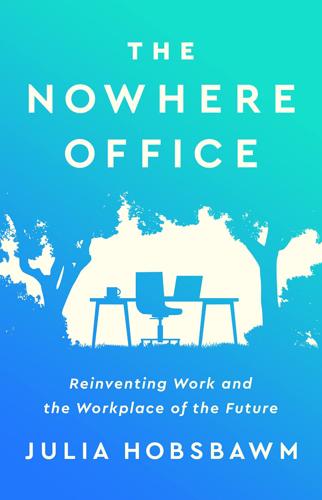
The Nowhere Office: Reinventing Work and the Workplace of the Future
by
Julia Hobsbawm
Published 11 Apr 2022
It is important to price in time for failure – to notice what does not work as well as what does. The datasets on what works with hybrid time management need time to accrue. And what about the 80,000 workers of Fujitsu in Japan who are now, thanks to a programme called Work Life Shift, largely remote-based?58 Will they dislodge centuries of a working culture which used to be so onerous that pre-pandemic workers took just over half the annual leave they were entitled to?59 In 2015 a survey by the Japan Institute for Labour Policy and Training showed that over a third of women and men were anxious about ‘the ambiguity of work and time off’ which teleworking and remote working represented.
…
The focus the Fourth Industrial Revolution has placed on reskilling and trying to outpace automation has often added to the feeling that we humans are bit-part players, acting our roles, wearing our costumes, with little or no agency. But this is now changing. By dressing in a more casual way, we are showing that the rigidity and formality of work no longer suits us. Rather than power dressing, which dominated working culture for so many years, athleisurewear is about comfort and freedom. The hoodies and leggings that can accommodate a school run or a jog plus a Zoom call are emblematic of a new holistic identity which allows you to be your complete self. The Stocktake and the Solopreneur This new freedom in how we work and what we wear to work may appeal to employees but is not popular with everyone.
…
It can actually be alienating for some people who do not regard themselves as political but who do want to feel they gain something from belonging to a network. Unions could address this gap. If they were to position themselves as brokers of social capital or vital knowledge between organisations and their workers, they might reverse their decline in the Nowhere Office. The Long Lunch The shift from a place and task-based working culture to one focused around people will require both new networks and new confidence to go out and network. An IBM survey famously found that high performing organisations were 57 per cent more likely to invest in collaboration and social networking.18 Organisations wishing to equip their hybrid workforces for the new working environment would be wise to increase the investment they make in allowing their employees time and budget to develop contacts.
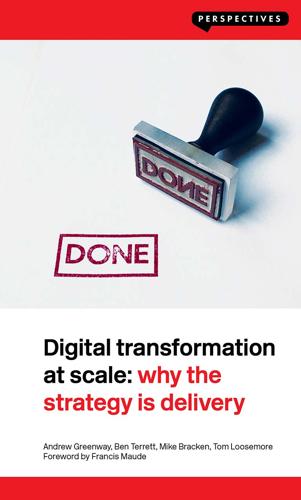
Digital Transformation at Scale: Why the Strategy Is Delivery
by
Andrew Greenway,Ben Terrett,Mike Bracken,Tom Loosemore
Published 18 Jun 2018
So one of the first things your new digital institution needs to prove is that you can not only make agile teams work, but that they can deliver things that have eluded equally talented public servants that are organised in the traditional way. Minimum viable team Your first digital products will define the trajectory of your digital institution and what it does. Your first digital team will define the working culture and how things are done. There are a handful of hires you need to start with. Product manager The product manager is the first among equals in the team, and the public face of the project. They define and articulate the vision for what is being built, explaining that to the team and the wider organisation they operate in.
…
However, as a general rule ‘innovation’ is something to be cautious about. Innovation units are an increasingly common sight in governments and large corporates. They set up with a remit to be disruptive, in much the same way that a digital unit should be. Many innovation units are full of good people and smart ideas. They often take on a similar working culture and practices those described in previous chapters: agile, multidisciplinary and open. However, the risk of bracketing disruption under the banner of innovation is that it can ultimately remain peripheral to the business, something to be held at arm’s length from whatever the ‘real work’ is. Many innovation teams find themselves trapped in the purgatory of being an add-on to the day to day rather than a force charged with fundamentally reshaping the organisation.
…
Without the recognising the crisis the organisation faced, the DVLA would not have got close to this position. The chances of it delivering artful machine-learning-led services without fundamentally changing the institution itself are slim to none too. One indicator of an organisation’s maturity and readiness for this next wave of technologies – assuming that it already has a digital working culture in place – is how it looks after its data. If an institution knows what data it owns, makes it machine readable, and has considered the data protection and privacy issues that come with the responsibility of looking after it, it might have a fighting chance. Without those things, forget it. Whatever the hype may be, new technologies like machine learning are forcing the right questions into the open.

How to Be Idle
by
Tom Hodgkinson
Published 1 Jan 2004
. : Sex and Idleness 2 a.m. : The Art of Conversation 3 a.m. : Time 4 a.m. : Meditation 5 a.m. : 6 a.m. : On 7 a.m. : A Dream Readers ' Section St Simeon 's Further .. . ' Preface It ' s good to be idle. The purpose of this book is both to celebrate laziness and to attack the work culture of the western world, which has enslaved, demoralized and depressed so many of us. Doing nothing, however, is hard work, as Oscar Wilde pointed out. There are always so many people around trying to make you do things. This is why I have tried to create a kind of canon of idle writing, from the philosophy, fiction, poetry and history of the last three thousand years, to give us idlers the mental ammunition we need to fight the fight against work.
…
Workshops became ' manufactories ' ; the self-employed became the employed; families began to live on wages alone and to buy in the groceries that perhaps they had grown themselves in previous generations. They might have been earning more money, but a terrific blow was dealt to their quality of life. Joyful chaos , working in tune with the seasons, telling the time by the sun, variety, change, selfdirection; all this was replaced with a brutal, standardized work culture, the effects of which we are still suffering from today. In other words, the job was invented in order to make things easier for those at the top. The people were stripped of their independence in order to service the grand dreams of a socially aspir-ational mill-owner who believed in hard work - for other people.
…
The newspapers create a climate of guilt around it because of the time it takes away from useful, productive work. As we saw in our chapter on skiving, headlines reading ' days lost to British industry due to sickness ' are a regular sight. The stories make one feel that when ill you are somehow letting the side down, losing the nation money. Being ill is unpatriotic and terribly inconvenient to the work culture. It results in days off and expense for employers. It makes us feel guilty. Society today simply does not allow us to be ill or, at least, it would prefer us to be uncomplaining automatons. Suffering is swept under the carpet, denied, ignored, made war upon. When we are struck down with illness, we should be thinking not, ' Oh no, my boss will get annoyed, ' but, ' Oh great, I can lie in bed, watch old movies, stare at the ceiling, read books -in short, do all those things that I am always complaining that I don ' t have the time to do. ' We can ' t take laudanum any more but I understand that Collis Browne ' s cough mixture has a similar effect.

What Should I Do With My Life?
by
Po Bronson
Published 2 Jan 2001
He worked in a county office alongside a food inspector, a building permit inspector, a septic system inspector, and a hazardous materials emergency response coordinator. The pay was less than half what he earned at Big & Oily, which clearly bothered him. He was wary of government bureaucracies, the turtle’s pace of their work culture. I had a sense that his commitment to this job would last only as long as his need to get revenge. And Big & Oily was doing everything it could to weaken his resolve. He whipped out his cell phone and played a message his answering machine recorded that afternoon. The call was from an old compatriot at Big & Oily: “Hey, Bryce, what’s going on, man?
…
They’d stretched a huge net across the water, dragging each end with a tractor. Two men in chest waders walked along the pond bottom, one foot on the net to keep it from floating to the surface. Don doesn’t have to say too much. His presence is a motivator. If his hires don’t think they’re being monitored, they’ll slack off. That’s the work culture here, so that’s the essential nature of his role, and it’s hard for that not to have its erosive effect—he has to be slightly watchful, just about all the time. Don didn’t learn this lesson quickly, and it’s not in his basic nature. On Wall Street everybody’s income was tied to their performance, and that was all the motivation anyone needed.
…
“I always loved engineering,” she said. “You’ve met my friends. I was one of them.” She’s also learned, from a seminar at UT, that feeling like an unqualified imposter at work is common. So common that it has a name: Imposter syndrome. It’s particularly common among women thrust into lots of responsibility in a male-dominated work culture, where the men make it taboo to ask questions because they don’t want to appear uninformed or unintelligent. In other words, Julia learned that feeling like an imposter wasn’t a sign that she didn’t belong there. It was a sign that she had to ask more questions. Most of all, she feels in retrospect that she fled engineering, more out of fear than out of wisdom.
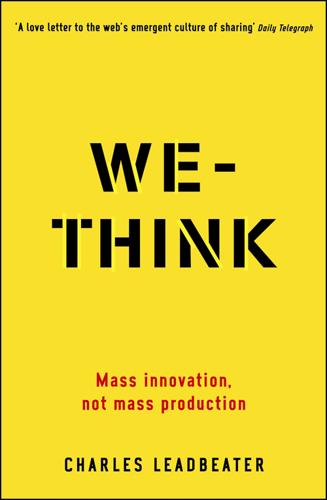
We-Think: Mass Innovation, Not Mass Production
by
Charles Leadbeater
Published 9 Dec 2010
Once their project has reached that stage they have to take the idea to a company council, which will make a decision about whether it should go ahead. This all needs a hefty pinch of salt. Work cultures are rarely as open and democratic as people at the top of an organisation claim, even at a company as funky as Google. Yet if only half of Sacca’s account is accurate, the company’s work culture poses a huge challenge for traditional, top-down companies. An organisation that wants to match Google’s capacity for innovation needs to match its work culture. Google is the most striking example of a company that has taken elements of We-Think-style work into the corporate world and created an extremely potent mutant: a money-making machine that espouses open-source values.
…
The principle of doing things with people rather than to or for them will breed very different organisations, services and experiences in virtually every field. With is about how we work. I dropped out of working for large organisations because I wanted to be able to work alongside people, without hierarchies and job titles getting in the way. The working culture of open source communities, such as Wikipedia, and the web more generally, is a culture in which ideas are shared with like-minded people. In the world of the web you can freely communicate with anyone you need to regardless of title or hierarchy. And this principle is at the heart of great social enterprises such as the Grameen Bank and the Barefoot College, who identify people’s problems and devise solutions with them, thereby building capabilities that allow people to go on and sustain themselves.
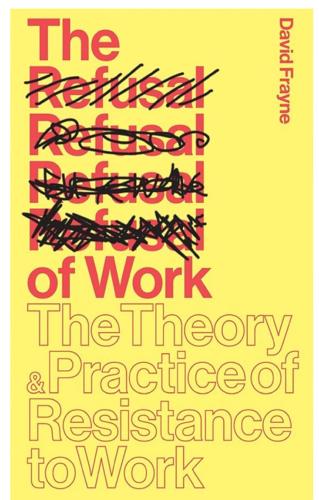
The Refusal of Work: The Theory and Practice of Resistance to Work
by
David Frayne
Published 15 Nov 2015
The author of a popular management guide writes that ‘when people are happy and free to be themselves, they are more productive and give more of themselves’ (Bains, 2007). This new ethos sees aspects of workers’ personalities that were previously barred or ignored by their employers being dragged into the workplace. ‘Being yourself’ and ‘having fun’ are emphasised, and organisations’ earlier attempts to create uniform work cultures and a high level of identification with company values are written off as crude and passé. This new ethos is sometimes referred to as the ‘Californian ideology’, owing to its prevalence in America’s Silicon Valley. In the UK, it is perhaps epitomised by the (albeit extreme) example of London’s coveted Google offices, which comprise a sort of playground featuring beanbags, allotments, chill-out zones and an old-fashioned sitting room, designed to allow employees to ‘work from home’ whilst remaining in the office.
…
In the UK, it is perhaps epitomised by the (albeit extreme) example of London’s coveted Google offices, which comprise a sort of playground featuring beanbags, allotments, chill-out zones and an old-fashioned sitting room, designed to allow employees to ‘work from home’ whilst remaining in the office. Peter Fleming and Andrew Sturdy explored this new fun-at-work ethos in their study of the Sunray (a pseudonym) call centre (Fleming and Sturdy, 2011). Sunray’s work culture was governed by the cringeworthy principle of the ‘3Fs’: ‘Focus, Fun, Fulfilment’ – a slogan repeated in team meetings, recruitment literature, and staff appraisal sessions. Attempts to inject fun into the office gave rise to a range of activities, from quizzes, themed fancy dress events and away-days to Friday afternoon drinking games and decorating the office to look like a jungle.
…
As we saw back in Chapter 2, in relation to Catherine Casey’s study of Hephaestus, managerial attempts to engineer identification with work sometimes produce the opposite feeling in the worker (Casey, 1995). Workers try to preserve their individuality with a sense of disbelief, cynically dis-identifying with the work culture. A study by David Collinson records manual workers referring to the push to build a culture of excellence as ‘Yankee propaganda’. The company newsletter became known as the ‘Goebells Gazette’ (Collinson, 1992). These cultures of cynicism can undoubtedly act as important weapons in labour struggles, though they will only be effective if workers are also committed to the idea that an alternative is really possible.

Cashing Out: Win the Wealth Game by Walking Away
by
Julien Saunders
and
Kiersten Saunders
Published 13 Jun 2022
People in the Middle often have enough income and are even saving for retirement, but they have no idea what they’re saving for, how close to or how far they are from achieving that goal, or why they’re even doing it. They’re often just going through the motions with no clear plan for their life and as a result, no purpose for their income. And when your income lacks purpose, you’re vulnerable—vulnerable to being sucked into the system of consumerism and the endless work culture of jobs. The vast majority of people in the Middle have adopted an approach to thinking about money that gets them only halfway to their anticipated destination. They’re doing well, but they can’t help but feel haunted by the sense they could or should be doing better. And the way they’ve defined doing better sets the tone for how they think about their current and future income.
…
Instead, they continue working, telling themselves, Just another year or I’m waiting to get fired to collect a fat severance package. If nothing else, their responses illustrate a profound truth: financial freedom isn’t a number; it’s a feeling. We sensed our version of freedom on our honeymoon, even though it was for only two weeks. During our honeymoon, the feeling we had after spending time away from the office, work culture, and the American media machine intoxicated us. During our time in South Africa, we were also free from the self-induced pressure we’d placed on ourselves to uphold the image of Black excellence. While we certainly had luxury experiences, most of our treasured moments were not expensive at all.
…
You might even be drawn to the idea of earning a higher hourly wage through working overtime or shift pay. But there are physical limitations to the total hours that can be worked. While “the grind” may be admirable and worthy of accolades by your peers on social media, it should be seen as a short-term and unsustainable solution to earning more money. Work culture in America has made most workers one-trick ponies. Most of us only know how to exchange our time for money, and as a result we’ve become overly reliant on jobs as the single source of income and benefits to support our lives. This income myopia makes us vulnerable and can have devastating consequences.

Belgium - Culture Smart!: The Essential Guide to Customs & Culture
by
Bernadett Varga
Published 14 Aug 2022
After work people without responsibility for children may have a drink before going home, especially in the summer when it is so pleasant to spend half an hour at a sunny sidewalk café, but this isn’t a daily fixture. A charming custom in Belgian workplaces is the reception. All kinds of opportunities, such as a birthday, are taken for staff to gather together in the office around lunchtime and indulge in drinks and snacks. This is all part of building a harmonious work culture and good relationships between colleagues, and is very civilized. The school day is from 8.30 a.m. to 4.30 or 5.00 p.m., though it is possible to drop children off any time after 7.30 a.m. and collect them up to 6:00 p.m. Parents spend much of the afternoon ferrying children between school, home, and after-school activities—sports, hobbies, visiting friends.
…
There are twelve public holidays, and Belgians do not allow their work and home lives to overlap much; taking work home on the weekend, for instance, is a sign of desperation. It appears, too, that Belgians are extremely loyal to their jobs, if they are happy in them, and job turnover is not high, even if the economy is favorable. While this might signal a lack of dynamism in the work culture, it also means greater institutional continuity than in situations of constant staff turnover. The public sector is large because of the language-based duplications. At higher levels in particular, political affiliations have historically been influential in appointments, and politically awarded sinecures in ministries were common.

To Serve God and Wal-Mart: The Making of Christian Free Enterprise
by
Bethany Moreton
Published 15 May 2009
This€ historical trajectory ultimately produced the paradigmatic hightech workplace, where entrepreneurial free agents rented out their expertise to near-virtual companies, played foosball, and counted their stock options.34 Thus one in�flu�en�tial work culture of postindustrial society was definitively shaped by the networked Bay Area baby boomers. But their contemporaneous counterparts in the Ozarks had a similar in�flu�ence on the other work culture of the ser�vice economy, the one comprising far more Americans than the free-wheeling, no-collar corporate campuses that dominate our imagination of postindustrial work.35 Unlike the restless communards around Berkeley and Stanford, growing up absurd, the future managers of Wal-Mart were growing up rather strapped for cash.
…
Pricey new chemical, mechanical, and biological inputs—herbicides, automatic tomato-Â�pickers, hybrid corn—took up the temporary slack in the labor market and made farming so capÂ�ital-Â�intensive that only increased acreage could support the great leap forward in mechanized production.19 For those who did not need to wrest a living out of their acreage, though, farming could still anchor a way of life distinct from national patterns. The small-Â�farm allegiances that shaped local work culture were hinted at by the Tyson poultry proÂ�cessing plants scenting the air around Northwest Arkansas. This Ozarks Fortune 500 company relied upon an agribusiness revolution: contract chicken-Â�raising. Farmers received tens of thousands of day-Â�old chicks, raised them in a computer-Â� controlled climate according to a rigidly standardized schedule, and then returned the broilers and fryers to Tyson Foods for proÂ�cessing by a new work force of Spanish-Â�speaking immigrants—a kind of factory farming for the outsourced era.20 As one such grower put it, “‘This Â�isn’t farming.
…
To make the factory system, artisans’ skill was studied, codified, then built into machines and proÂ�cesses. To raise the serÂ� vice sector, a company like Wal-Â�Mart likewise metabolized the knowledge and skill of its initial work force. This very late moment in the history of capÂ�italism saw the enclosure of a rural, ProtÂ�esÂ�tant family ideology and a female work culture based on “people skills.” The Â�women in the stores—customers as well as waged employees—made their priorities known, and management responded accordingly. Not surprisingly, these priorities were distinct from those of men in industrial or professional workplaces as well as from those of Â�women seeking access to such “men’s jobs.”

Deep Work: Rules for Focused Success in a Distracted World
by
Cal Newport
Published 5 Jan 2016
Google, for example, might reduce our memory, but we no longer need good memories, as in the moment we can now search for anything we need to know. I have no stance in this philosophical debate. My interest in this matter instead veers toward a thesis of much more pragmatic and individualized interest: Our work culture’s shift toward the shallow (whether you think it’s philosophically good or bad) is exposing a massive economic and personal opportunity for the few who recognize the potential of resisting this trend and prioritizing depth—an opportunity that, not too long ago, was leveraged by a bored young consultant from Virginia named Jason Benn.
…
So why are these easily avoidable and time-sucking e-mails so common? From the sender’s perspective, they’re easier. It’s a way to clear something out of their inbox—at least, temporarily—with a minimum amount of energy invested. The Principle of Least Resistance, protected from scrutiny by the metric black hole, supports work cultures that save us from the short-term discomfort of concentration and planning, at the expense of long-term satisfaction and the production of real value. By doing so, this principle drives us toward shallow work in an economy that increasingly rewards depth. It’s not, however, the only trend that leverages the metric black hole to reduce depth.
…
Suddenly any obligation beyond your deepest efforts is suspect and seen as potentially disruptive. Your default answer becomes no, the bar for gaining access to your time and attention rises precipitously, and you begin to organize the efforts that pass these obstacles with a ruthless efficiency. It might also lead you to test assumptions about your company’s work culture that you thought were ironclad but turn out to be malleable. It’s common, for example, to receive e-mails from your boss after hours. Fixed-schedule productivity would have you ignore these messages until the next morning. Many suspect that this would cause problems, as such responses are expected, but in many cases, the fact that your boss happens to be clearing her inbox at night doesn’t mean that she expects an immediate response—a lesson this strategy would soon help you discover.
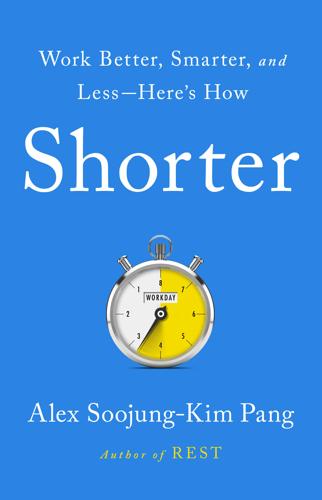
Shorter: Work Better, Smarter, and Less Here's How
by
Alex Soojung-Kim Pang
Published 10 Mar 2020
The Proposal of a Four-Day Weekday Stirs Up a Lot of Debate,” Beijing Review, August 2, 2018, www.bjreview.com/Lifestyle/201807/t20180730_800136855.html; Alex Soojung-Kim Pang, “Why Companies Should Say Goodbye to the 996 Work Culture, and Hello to 4-Day Weeks,” South China Morning Post, April 20, 2019, www.scmp.com/comment/insight-opinion/article/3006873/why-companies-should-say-goodbye-996-work-culture-and-hello. Anna Ross is quoted in Kura Antonello, “Anna Ross: Founder & Director, Kester Black,” The Cool Career, at www.thecoolcareer.com/anna-ross. Previous Books by Alex Soojung-Kim Pang: Rest The Distraction Addiction PublicAffairs is a publishing house founded in 1997.
…
Everyone, from the newest to the most senior employees, would go through onboarding again, to guarantee that everyone was familiar with the most valuable tools and practices. “There are some things we need to require that everyone knows how to do,” he says, “because it is really important for the company and the working culture.” AT THIS STAGE… Making a four-day week work isn’t just about finding ways to work faster, as Henrik says. Of course, whether you’re the boss or a team member, you have to think about how to be more effective, how to be politely ruthless with your time, and how you can get your work done by Thursday.
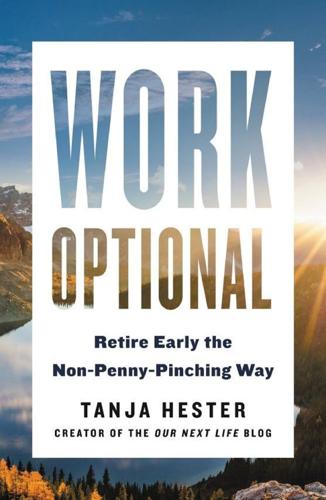
Work Optional: Retire Early the Non-Penny-Pinching Way
by
Tanja Hester
Published 12 Feb 2019
Work can give us a sense of purpose, a sense of contributing to society, and a sense of usefulness. The problem isn’t work itself, but our current societal work culture. The culture in which too many of us wear our busyness and the bags under our eyes as status symbols. The culture that says you must hustle around the clock to be worthy. The culture that says our employers or clients own not just our work hours but every waking moment. We aren’t wired to handle that. That’s why we see study after study confirming what most of us already know: Today’s work culture is crushing us. Workplace burnout is at epidemic proportions,1 and workers feel stressed and exhausted.2 Large numbers of us work 50, 60, or even more hours every week.3 While our parents or grandparents rarely had to take work home with them, and certainly weren’t reachable after leaving the office each day, we’re now expected to be connected at all times.
…
So it’s no wonder that so many of us are craving freedom from this fast-paced, high-pressure work world. We want to work on our own terms. We want to do something slower, something healthier, something more secure—or maybe just something different, something that makes our lives feel more meaningful. That’s what Work Optional is all about: reclaiming your life from our nonstop work culture so that you decide what role work will play in your life, instead of society deciding for you. It can take any form you imagine, from full early retirement with no paid work ever again, to a life with part-time or periodic work on your own terms. Maybe it’s a life in which you escape traditional employment and go to work for yourself with a big financial safety net in place to keep the work fun instead of stressful.

Artificial Unintelligence: How Computers Misunderstand the World
by
Meredith Broussard
Published 19 Apr 2018
Guardian (US edition), August 15, 2016. https://www.theguardian.com/technology/2016/aug/15/roomba-robot-vacuum-poopocalypse-facebook-post. Somerville, Heather, and Patrick May. “Use of Illicit Drugs Becomes Part of Silicon Valley’s Work Culture.” San Jose Mercury News, July 25, 2014. http://www.mercurynews.com/2014/07/25/use-of-illicit-drugs-becomes-part-of-silicon-valleys-work-culture/. Sorrel, Charlie. “Self-Driving Mercedes Will Be Programmed to Sacrifice Pedestrians to Save the Driver.” October 13, 2016. https://www.fastcompany.com/3064539/self-driving-mercedes-will-be-programmed-to-sacrifice-pedestrians-to-save-the-driver.
…
Angwin and Larson, “Bias in Criminal Risk Scores Is Mathematically Inevitable, Researchers Say”; Kleinberg, Mullainathan, and Raghavan, “Inherent Trade-Offs in the Fair Determination of Risk Scores.” 7. Bogost, “Why Nothing Works Anymore”; Brown and Duguid, The Social Life of Information. 8. Hempel, “Melinda Gates Has a New Mission.” 9. Somerville and May, “Use of Illicit Drugs Becomes Part of Silicon Valley’s Work Culture.” 10. Alexander and West, The New Jim Crow. 11. Hern, “Silk Road Successor DarkMarket Rebrands as OpenBazaar.” 12. Brown, “Nearly a Third of Millennials Have Used Venmo to Pay for Drugs.” 13. Newman, “Who’s Buying Drugs, Sex, and Booze on Venmo? This Site Will Tell You.” III Working Together 10 On the Startup Bus Technochauvinists love disruptive innovation.

The Thinking Machine: Jensen Huang, Nvidia, and the World's Most Coveted Microchip
by
Stephen Witt
Published 8 Apr 2025
Priem had seen the potential in the video game market, he had given the company its name, and he had sheltered the fledgling start-up in the bedrooms of his home. But from 1998 onward, he had little to do with Nvidia’s success. * * * • • • David Kirk became Huang’s consigliere. Kirk had an academic background and didn’t enjoy the high-pressure work culture of Silicon Valley; the first time I spoke with him, he called me from Hawaii, where he was wearing a shirt that read “Procrastination University” and drinking a glass of wine. He seemed like a popular professor whose course had a wait list, not an entrepreneur. But Kirk’s gentle manner cloaked a pitiless attitude toward the competition—his absent father was an alcoholic, and he’d been a sickly child whose physical development had been limited by chronic bouts with strep throat.
…
TSMC didn’t design its own chips; it simply manufactured chips for merchants like Nvidia. The rise of such independent “foundry” services was responsible for a surge in computing innovation, permitting upstarts to experiment with radical designs. TSMC filled orders with incomparable precision and efficiency, the product of an extraordinarily demanding work culture. Workers there described the hierarchical corporate structure as “militarized,” and they followed a “996” shift schedule, working from nine a.m. to nine p.m. six days a week. Huang had repeatedly failed to get TSMC’s attention. After leaving a series of voicemails, he’d written a personal letter to Morris Chang, the company’s CEO, and put it in the mail, not expecting to hear back.
…
Drone footage showed six gigantic fabrication buildings, arranged north to south and connected by industrial capillaries to a parallel line of support structures to the west. The dueling Arizona plants, and others under construction around the world, suggested the possibility of a forthcoming glut in supply. Chang, retired and out of the decision loop, saw the Arizona investment as foolish—he believed that US work culture would never match the productivity of Asia and that the facility would lag global rivals. (When Nancy Pelosi visited Taiwan in 2022, Chang told her the US projects were “doomed to fail.”) Chang also argued that TSMC’s concentration in Taiwan was actually preventing a Chinese invasion, for no national economy would suffer as much as China’s if TSMC went offline.

Bootstrapping: Douglas Engelbart, Coevolution, and the Origins of Personal Computing (Writing Science)
by
Thierry Bardini
Published 1 Dec 2000
The report con- cl uded that: There is a largely unacknowledged clash of personal values systems in ARC. . . . There is considerably more formality in the ARC work culture than appears at first glance. . . . There is a tendency in ARC to sometimes be unduly tied down to the past, to be preoccupied with evaluating past decisions and events, to be car- rYIng a load of yesterday's "unfinished business". . . . The relationships between Doug and ARC as a whole, and between Doug and various individuals and sub- groups in ARC, set much of the tone and pace of the work culture and provIde the immediate setting or background for the maJor issues and problems in the culture.
…
The relationships between Doug and ARC as a whole, and between Doug and various individuals and sub- groups in ARC, set much of the tone and pace of the work culture and provIde the immediate setting or background for the maJor issues and problems in the culture. This dominance of the leader/others relationshIps is stronger here than In most work cultures. No other PODAC-related Journal entries were submitted after this point. Both professional organizational consultants concluded that specific issues plagued the ARC work culture, issues that needed more than nice bull sessions to move toward a resolution. Most of these related to the specific kind of leadership that Engelbart exercised on ARC and appeared finally as built-in problems in an organization set up around one man's crusade. It is no wonder, then, that the last episode of this social experiment led toward "personal" rather than "organizational development," and to still more conflict between Engelbart and the participants in his crusade.

The Lonely Century: How Isolation Imperils Our Future
by
Noreena Hertz
Published 13 May 2020
Digital technology has collapsed the boundaries between our working and personal lives, with many workers feeling that they have to go along with these new rules of engagement or risk the disappointment or disapproval of their bosses. Yet many of us must also ask questions of ourselves when it comes to how complicit we are in this always-on, always-working culture that the digital age has enabled. Is it our demanding boss that’s ‘making us’ open that email at the dinner table, or our digital addiction and dopamine craving? And could it be that sometimes we do have a choice, it’s just that we are wary of exercising it? Perhaps we mistakenly think we would look less than committed if we didn’t answer that email out of hours; or maybe in an age in which slogans such as ‘hustle harder’ and ‘rise and grind’ are not ironic but aspirational, it’s that many of us have come to see our own worth as being so fundamentally intertwined with our productivity and how much we earn, that we put the demands of our workplace before everything else.82 Whatever the reason, the upshot is that many of us find ourselves responding to bosses, clients and colleagues during family time, school plays and even in bed late at night when in reality our reply could wait until we were back at work the following day – and despite the fact that this disruption of our precious time with family and friends renders us more disconnected, not only at work but in our private lives too.
…
And those of us – mea culpa – for whom work and our emails have the habit of taking over all God-given hours, but do have a meaningful choice as to whether we allow them to, need to at least acknowledge that by doing so we’re making a trade-off – and ask ourselves whether it’s a trade-off really worth making. At times it may be, but always? We need to become more acutely aware of the high cost of our digital addictions, just as our employers need to see the consequences of an always-on work culture: for employees’ mental health, for productivity, for decision-making and for creativity.83 At some innovative companies, management and workers are trying to draw some lines at least. As early as 2011, Volkswagen employees’ work council (similar to union reps) successfully campaigned for the company to program its BlackBerry servers to stop routing emails half an hour after work-shift end times.84 In 2014, Daimler, another German car company, instituted a policy whereby emails sent to employees on holiday would be automatically deleted.85 And in 2018, the European bargain supermarket chain Lidl banned work emails from 6 p.m. until 7 a.m. and over the weekend in some of its markets in a bid to improve its employees’ work-life balance.
…
Note that whilst Schawbel doesn’t explicitly state that his survey questioned only office workers, it’s clear from reading the book that the focus of his surveys is overwhelmingly white-collar office workers. See also David Vallance, ‘The workplace is a lonely place, but it doesn’t have to be’, Dropbox, 15 July 2019, https://blog.dropbox.com/topics/work-culture/tips-for-fixing-workplace-loneliness. 2 Emma Mamo, ‘How to combat the rise of workplace loneliness’, TotalJobs, 30 July 2018, https://www.totaljobs.com/insidejob/how-to-combat-the-rise-of-workplace-loneliness/; Jo Carnegie, ‘The rising epidemic of workplace loneliness and why we have no office friends’, Telegraph, 18 June 2018, https://www.telegraph.co.uk/education-and-careers/0/rising-epidemic-workplace-loneliness-have-no-office-friends/; as of 2014, 42% of Brits reported not having a single friend at the office. 3 ‘Most white-collar workers in China anxious and lonely: survey’, China Daily, 23 May 2018, https://www.chinadaily.com.cn/a/201805/23/WS5b04ca17a3103f6866eea0e9.html. 4 ‘Research on friends at work’, Olivet Nazarene University, https://online.olivet.edu/news/research-friends-work; ‘Loneliness and the Workplace’, Cigna, January 2020, https://www.cigna.com/static/www-cigna-com/docs/about-us/newsroom/studies-and-reports/combatting-loneliness/cigna-2020-loneliness-report.pdf, p.7. 5 ‘Loneliness during coronavirus’, Mental Health Foundation, 3 June 2020, https://www.mentalhealth.org.uk/coronavirus/coping-with-loneliness. 6 ‘State of the Global Workplace’, Gallup, https://www.gallup.com/workplace/238079/state-global-workplace-2017.aspx. 7 Jane Ammeson, ‘Storytelling with Studs Terkel’, Chicago Life, 28 May 2007, http://chicagolife.net/content/interview/Storytelling_with_Studs_Terkel; Teenage Telephone Operator Reveals Loneliness In Terkel’s ‘Working’’, NPR, 27 September 2016, https://www.npr.org/templates/transcript/transcript.php?

Uberland: How Algorithms Are Rewriting the Rules of Work
by
Alex Rosenblat
Published 22 Oct 2018
For example, during the recessions of 1982–1983, 1990–1991, and 2007–2009, the loss of stable employment for male breadwinners resulted in more wives entering the workforce or increasing their hours, which economists term the “added worker effect.” According to one prominent study, the 2007–2009 Great Recession produced the strongest such effect: perhaps the “need” for extra work has been reframed by the gig economy as a positive opportunity for “extra” income. In effect, the work culture that promotes the idea that everyone should get a side hustle puts a positive sheen on the declining economic prospects of male (and female) breadwinners. The sharing economy draws on these histories, delegitimizing and feminizing work by pigeonholing sharing-economy jobs as mere side hustles.
…
Turning off WhatsApp in Brazil would destabilize communications nationwide; likewise, when Waze erroneously advised drivers in Israel to avoid a major roadway, mad traffic jams ensued.14 The idea of Uber and the logic of its business model have already surpassed Uber itself. Both as workers and consumers, we have integrated the algorithms of Silicon Valley into our daily lives. The case of Uber shows us that technology has changed work in ways that are unexpected and potentially irreversible. The sharing economy popularized wider changes to work culture by conflating work with altruistic contributions, bringing into question the identity of workers and devaluing work itself. Meanwhile, Uber advanced its own vision of the legal status of its workers, emphasizing that they were closer to technology consumers than workers. This seemingly legalistic nuance is in reality a cultural sea change in how we categorize work.
…
Plays with Fire,” New York Times, April 23, 2017, www.nytimes.com/2017/04/23/technology/travis-kalanick-pushes-uber-and-himself-to-the-precipice.html. 85. Julia Carrie Wong, “Uber’s ‘Hustle-Oriented’ Culture Becomes a Black Mark on Employees’ Résumés,” The Guardian, March 7, 2017, www.theguardian.com/technology/2017/mar/07/uber-work-culture-travis-kalanick-susan-fowler-controversy. 86. Susan J. Fowler, “Reflecting on One Very, Very Strange Year at Uber,” February 19, 2017, Susan Fowler (blog), www.susanjfowler.com/blog/2017/2/19/reflecting-on-one-very-strange-year-at-uber. 87. Kara Swisher, “With Her Blog Post about Toxic Bro-Culture at Uber, Susan Fowler Proved That One Person Can Make a Difference,” ReCode, June 21, 2017, www.recode.net/2017/6/21/15844852/uber-toxic-bro-company-culture-susan-fowler-blog-post. 88.

A World Without Email: Reimagining Work in an Age of Communication Overload
by
Cal Newport
Published 2 Mar 2021
Whether you’re a computer programmer, marketing consultant, manager, newspaper editor, or professor, your day is now largely structured around tending your organization’s ongoing hive mind conversation. It’s this workflow that causes us to spend over a third of our working hours in our inbox, checking for new messages every six minutes. We’re used to this now, but when viewed in the context of even recent history, it represents a shift in our work culture that’s so radical it would be absurd to allow it to escape closer scrutiny. To be fair, the hyperactive hive mind is not obviously a bad idea. Among the benefits of this workflow is the fact that it’s simple and incredibly adaptive. As one researcher explained to me, part of email’s appeal was that this one easy tool could be applied to almost every type of knowledge work—a much smaller learning curve than needing to master a separate bespoke digital system for each type of work.
…
Another source of productivity in the XP method is its intensity. When you’re working with a partner, you’re locked into your work. There’s no tactful way to disrupt your focus to check email or idly surf the web, as doing so would leave your partner just sitting there, annoyed, waiting for your attention to return.6 Furthermore, given a work culture in which you’re expected to give your full attention to the problem at hand, with a project manager shielding you from distractions, you end up spending most of your day actually accomplishing hard things. XP is as close to a pure deep work environment as I’ve ever seen deployed successfully. Given this intensity, another core tenet of XP is “sustainable pace.”
…
This makes it possible for her to vastly increase her value to her company, which, in a virtuous cycle, can gain her even more autonomy. The danger, of course, is that now she has to produce. Her note about the comfort of “showing up” to demonstrate value is more than just a casual dismissal of normal work culture. For many people, this strategy provides a professional safety net. Busyness is controllable: if you decide to be visibly busy, you know with certainty that you can accomplish this goal. Producing high-value results under scrutiny, as Amanda is now committed to doing, is much more demanding! Just deciding to produce valuable things is not enough to ensure that you’ll pull it off.

The End of Men: And the Rise of Women
by
Hanna Rosin
Published 31 Aug 2012
(White came up with this term after she finally managed a night out alone with her husband, and they spent half the dinner staring at their iPhones.) But the work culture was still a revelation. Without a lot of official committees and HR red tape, Silicon Valley is figuring out the single most vexing problem for ambitious working women, a problem everyone thought was unsolvable: how to let them spend time with their children without ruining their careers. The industry has by no means solved the ultimate problem, meaning that there are just as few female heads of companies as there are in any other elite sector. But it gives us a glimpse of the work culture of the future, where face time isn’t so relevant and people take it for granted that women—and men—can be really ambitious and manage a life, too.
…
Homogenous, social welfare–minded Nordic countries may be the global equivalents of Portland, but the effort to reengineer masculinity is cropping up in some surprising places—even more surprising than the average American high school. Over the last few decades, the company that controls a couple of offshore oil platforms nicknamed “Rex” and “Comus” in the Gulf of Mexico has made a systematic effort to transform their work culture. The goal was to reduce the unusually high number of workplace accidents, but the method they chose involved basically leaching the macho out of the workplace culture. In the old system, “the field foremen were kind of like a pack of lions. The guy that was in charge was the one who could basically out-perform and out-shout and out-intimidate all the others,” one of the workers explained to two researchers from Stanford and Harvard who did an anthropological study of the worksites.

House of Huawei: The Secret History of China's Most Powerful Company
by
Eva Dou
Published 14 Jan 2025
He suggested that employees spend more time relaxing outside of work, drinking tea together or strolling through a park. “As long as these activities do not involve discussing politics, violating the law, or violating ethics, we will not interfere.” But some external critics thought it was clear that Ren himself had created this crisis through Huawei’s pressure-cooker work culture. Huawei had long cultivated a Wall Street–esque ethos that saw employees pitted against one another, the winners showered with riches and the losers weeded out. “Humanistic concern for individual employees is not part of this corporate culture,” one Shanghai sociologist, Zhang Youde, told a domestic magazine.
…
April 2005: Huawei lands its first major contract in the West when the UK operator BT picks the company as a supplier for its major network upgrade from dial-up internet to broadband. 2006: Huawei’s chip unit, HiSilicon, launches its first surveillance-camera chip. January 2006: North Korea’s leader, Kim Jong Il, visits Huawei. April 2006: A twenty-five-year-old Huawei engineer named Hu Xinyu dies from a brain infection after weeks of overtime work, sparking public backlash against Huawei’s work culture. November 2006: Huawei strikes a deal to sell its stake in H3C, its joint venture with 3Com, back to the US company. Huawei agrees not to compete directly with 3Com’s enterprise networking business for eighteen months. 2007: Huawei begins selling “managed services,” whereby it helps run customers’ networks for a fee.
…
Huawei’s World [华为的世界], by Wu Jianguo and Ji Yongqing, is a vivid narrative of Huawei’s early rise based partly on the personal experiences of Wu, who served as a deputy to chief engineer Zheng Baoyong at Huawei. Liu Ping’s [刘平] memoir, Bygone Times at Huawei [华为往事], and Cao Yi’an’s [曹贻安] Miscellaneous Notes on Striving at Huawei [在华为打拼杂记], which both appear to be published only online, provide insights into the personalities and work culture at Huawei. Penned by former Huawei executives, they are well worth reading in their entirety for those interested in the company. Zhang Lihua’s [张利华] Huawei R&D [华为研发] provides a detailed account of Huawei’s early switches and other products and how they were developed. Other Works on the Telecommunications Industry The essay “Who Lost Lucent?

The Purpose Economy: How Your Desire for Impact, Personal Growth and Community Is Changing the World
by
Aaron Hurst
Published 31 Aug 2013
She remains “100 percent convinced that a big part of Josie Maran Cosmetics’ success is that everyone is encouraged to bring their whole selves to work, and we’re unified by our passion for taking care of the world as one way to take care of our company and ourselves.” Josie integrated all three purpose approaches into her company. She enabled her customers to gain purpose by caring for themselves and the planet. She created a work culture that celebrated work and seeks to maximize purpose for everyone on the team. Finally, she has invested in creating a supply chain for her company that supports women in Morocco. Purpose is fully part of the company’s DNA. Josie, like other leaders in the new economy, understands the incredible power of purpose in business.
…
Post-Human Resources Debbie Cohen, a veteran of the Information Economy, joined the Mozilla team in 2011 as their Head of People. From the start, it was clear that Mozilla had a different culture and leadership style that would require her to design a new approach. It was an exciting opportunity to really push the limits of management and work culture. How do you develop leaders who succeed by following rather than directing? How do you build a community in which the line between volunteers and employees is razor-thin? These kinds of questions starkly contrast the approach to human resources at most Information Economy companies like Microsoft and Amazon.com, managing people through competition, top-down hierarchy, and intellectual jousting.
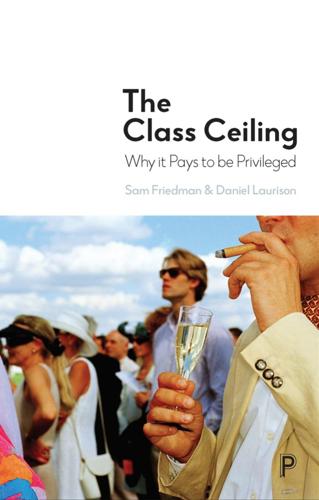
The Class Ceiling: Why It Pays to Be Privileged
by
Sam Friedman
and
Daniel Laurison
Published 28 Jan 2019
Indeed, examined through the lens of emotional wellbeing rather than simply economic and occupational achievement, the ‘success’ of mobility is much more uncertain – even when it involves successfully breaking the class ceiling. 183 TEN Class ceilings: A new approach to social mobility We hope that over the course of this book we have made our key findings eminently clear: that people from working-class backgrounds earn less in top jobs than their privileged colleagues; that this can only be partially attributed to conventional measures of ‘merit’; and that more powerful drivers are rooted in the misrecognition of classed self-presentation as ‘talent’, work cultures historically shaped by the privileged, the affordances of the ‘Bank of Mum and Dad’, and sponsored mobility premised on class-cultural homophily. But we also want to stake out what we think is important and innovative about our approach, not only our findings. We should say from the outset that a discussion of this kind necessitates a sustained engagement with sociological theory and literature, and therefore a somewhat different writing style.
…
This will clearly vary by firm, but in much of our research, and the wider studies conducted by The Bridge Group, it is often middle and senior managers (that is, those below the senior executive team, but on the trajectory to those positions) who are most responsible for enacting and ‘socialising’ dominant work cultures, and who make routine decisions about how talent is defined and identified. It is also the case that it is often those in these middle and lower senior positions that perceive themselves as having most to lose in efforts to drive forward inclusion and equality. Based on The Bridge Group’s experience, engaging this audience usually requires a compelling case for change built on both advancing business performance and social equality; collation and presentation of internal and benchmark data to highlight the nature of the challenge; and the collation of voices from within the organisation (most usefully sourced through independent research) that animate the issues at stake in a way that resonates. 8.
…
Yet it is also important for employers to recognise that coming from a working-class background is not always an ‘identity’ that people want to wear or own in the workplace in this kind of public way. For many, then, less public support mechanisms may be more appropriate, such as mentoring or buddying, or it may simply be that induction processes need to recognise better that candidates from different backgrounds can have markedly different levels of familiarity with working cultures and behavioural norms on arrival. Either way, it is important that organisations consult with staff from disadvantaged backgrounds about how to best support them, and prevent them from self-eliminating. 10. Lobby for legal protection The Equality Act 2010 ensured legal protections for a range of minority groups but, as mentioned, did not include class or socio-economic background.
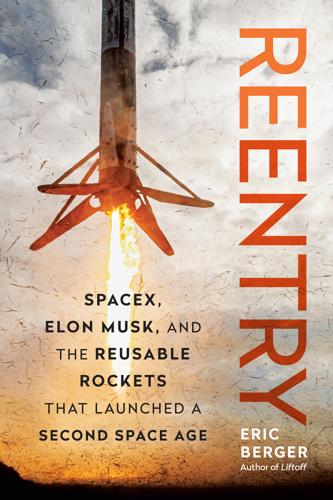
Reentry: SpaceX, Elon Musk, and the Reusable Rockets That Launched a Second Space Age
by
Eric Berger
Published 23 Sep 2024
As for directors and VPs, he agreed that to succeed one had to be willing to accept that firing was inevitable. “The way to success as a manager was to not rely on your job, in my opinion,” Koenigsmann said. “That makes you much more valuable as a manager for the company, because you aren’t trying to save yourself constantly.” What are we to make of the SpaceX work culture? The cost of Mars is high. For employees, it is a choice as to whether they’re willing to pay it. Taking a job at SpaceX means working “hard core” on some of the most challenging engineering problems in the world—and beyond. After Musk bought the social networking site Twitter in October 2022 for $44 billion, he similarly asked the staff there to work hard core on cutting costs and improving the product.
…
Griffin, Mike Grinnell, Tyler Grissom Gus guidance, navigation, and control system Halliwell, Martin Hansen, Chris Harriss, Trip Hartin, Bryan Healey, Deirdre Helms, Susan Heltsley, Will Hicks, Neil Hollman, Jeremy Homer, Peter Horkachuck, Mike Howard, Andrew Hultgren, Eric Hurley, Doug Hutchison, Kay Bailey hypergols Inder, Gabrielle Insprucker, John Intelsat mission International Space Station Commercial Crew for Crew Dragon missions to Helms’ time on launch spaceports for requirements for private vehicle visits to research conducted on resupply of Sabatier process on International Space Station Advisory Committee internet satellites Iridium Isaacman, Jared James Webb Space Telescope JetBlue Juncosa, Mark Jung, Josh Just Read the Instructions, Kellie, Benjamin Kelly, Brian Kennedy Space Center kerosene, densifying Kislyak, Sergey Knight, Norm Koenigsmann, Hans Kononenko, Oleg Kuipers, André Kuiper satellites Kulin, Robb Kwajalein Atoll Landing Zone land landings Launch Complex Launch Complex 39A launch sites/pads. see also individual sites Lee, Cassie Li, Florence lidars Lim, Ricky Lindauer, John Lindenmoyer, Alan liquid hydrogen liquid oxygen densified and helium COPVs load-and-go fueling Lockheed/Lockheed Martin Loverro, Doug LOX ball Lucas, Kenton Lucid, Shannon Lueders, Kathy Lunar Lander Challenge Lyons, Lauren Maezawa, Yusaku “Magic Dragon,” Mann, Nicole Marino, Dan Markusic, Tom Marmac 300 barge Mars settlement Martin Marietta Massey, Eric Masten Space Systems McAleenan, Mike McAlister, Phil McAuliffe, Christa McDivitt, Jim McDonnell Douglas McDonough Marine Service McGregor test site McKeown, Matt McNally, Bill Mercury spacecraft Merlin 1C engines Merlin 1D engines Merlin engines Merritt Island methane fuel Miller, Kevin Mir space station Mock, Kevin Monteith, Wayne Moon, Scott Morgan, Kathy Mosdell, Brian Motorola Mueller, Tom Muratore, John Murray, Eric Musk, Elon Reeve and Altan and AMOS-6 on annual rocket launches on Block 5 rocket on Blue Origin and Buzza and Cape Canaveral launch site and Commercial Crew program and Couluris and Crew Dragon critics of decision-making time for demands made by Dnepr launches sought by and Dragon and drone ship design earliest employees of and Falcon 1 and Falcon 9 and Falcon Heavy financial problems for and first NASA contract and flight termination system on full, rapid reusability and future of SpaceX government critics of and Grasshopper Helms on and in-house building of fairings and Intelsat aborts and Iridium’s launch deal Koenigsmann on and landings and Launch Complex 39A lobbyists’ distrust of and Merlin engines and Mosdell and NEXT launch politics of and propellant densification public perceptions of and resupply missions on reusable rockets on reusable spacecraft on rockets’ horizontal velocity and Rose on rules and regulations and SES-9 launch and Shotwell and SLC-40 site and spacesuits SpaceX founded by and SpaceX philosophy and Starlink and Starship success of at Tesla on test tripod and Thompson and transporter erector Twitter acquisition by and ULA creation vision of and webcasts work culture under NASA and AMOS-6 mission Artemis Program of cargo delivery contract from (see also Commercial Resupply Services) Chilton at Commercial Crew program of cost approvals for cost of parts approved by crew losses for Curiosity rover of and Dragon exploration as goal of Falcon Heavy used by female flight directors at Helms at International Space Station built by investment in SpaceX by Launch Complex 39A of Lunar Lander Challenge of Merritt Island site of Moon mission of private vehicle requirements of and propellant densification reusable rocket attempts by safety reviews by Saturn V rocket and scrap metal deals spacecraft recovery by space shuttle program of (see also space shuttles) SpaceX’s relationship with and SpaceX’s unorthodox philosophy and supersonic retropropulsion transport of large boosters by National Reconnaissance Office national security satellites Nedelin, Mitrofan Nelson, Bill New Glenn rocket Newton, Chris NEXT constellation Northrop Grumman Nyberg, Karen Obama, Barack Obrocto, Brad Octaweb design Of Course I Still Love You, ORBCOMM satellites Orbital Sciences Orion spacecraft Pagel, Lee Palitsch, Erik parachutes Parmitano, Luca Pentecost, Douglas Petit, Gavin Pettit, Don pintle injectors Point Nemo polar satellites Policht, Kary Pomerantz, Will Pournelle, Jerry Progress spacecraft propulsive landings Proton Putin, Vladimir Python, Monty Quayle, Dan Ramamurthy, Bala Reisman, Garrett Relativity Space Rench, Phillip reusable rockets. see also Starship Delta Clipper densification needed for Falcon 9 (see Falcon 9) as goal of SpaceX hydraulic systems for maintenance on NASA’s attempts at recovery of Russia’s view of Richeson, Justin Ridings, Holly Rocketdyne rocket engines. see also specific engines Rocket Lab rockets. see also specific types of rockets critical design reviews for flight software for fuel needs for horizontal speed for launch noise levels for liquid oxygen from pressure in reentry of reusable (see reusable rockets) spacecraft vs.
…
of SpaceX static fire tests of transport of Rockette (dog) rod ends Rogozin, Dmitry Rose, Robert Rosen, Lee Rossoni, Mike RS-68 engine RUAG “run” tank Russia Russian space program Sabatier process Sager, Alyssa Santa Susana Field Laboratory Saturn V rocket Schindzielorz, Howard SES SES satellites Shelby, Richard Shepard, Alan Shotwell, Gwynne Sierra Nevada Corporation Sloan, Chris Smith, Bob Smith, Scott Soyuz spacecraft. see also specific spacecraft critical design reviews for “Magic Dragon” mock-up of reusable space industry Space Launch Complex Space Launch Complex 4 East Space Launch Complex Space Launch Initiative space policy space shuttles. see also specific shuttles spacesuits SpaceX. see also individual projects and people American-made rockets of budgets and costs at competing priorities at critics of as destination for young engineers earthquake contingency plans of financial problems of first launch site of founding of goal of Helm’s accommodations for launch sites for Mars settlement as mission of as military and NASA contractor NASA investment in NASA’s relationship with new launch tradition for “normal” life after major events at others’ disparagement of potential future for satellites launched and operated by space industry transformed by success of United Launch Alliance rivalry with unorthodox philosophy of work culture of SR-71 “Blackbird,” Stafford, Thomas stage separation system stage telemetry Starhopper Starliner Starlink Starship Star Wars program Stewart, Cory Stoke Space Strategic Defense Initiative Stults, Sam Suffredini, Mike SuperDraco thrusters Taylor, Mike TEA-TEB flow Tenenbaum, Jason Tesla Thales Alenia Space thermal imaging cameras Thaicom Thompson, Chris thrust chamber thrusters thrust structure thrust vector control (TVC) actuators Titan rockets Tooley, Jeff transporter erector (TE) Tripathi, Abhi Trump, Donald Twitter (X) United Launch Alliance (ULA) United Steel Building Universal Documentation System Vandenberg launches Van Pelt, Darin vertical landing challenge Virgin Orbit von Holzhausen, Franz Wagner, Chuck Wales Crane & Rigging Service Wallden, Chris Ward, Jeff water deluge system Werner, Vincent White, Bryan Williams, Suni Wilmore, Butch Wilson, Ed Wooster, Paul X-33 space plane Xombie vehicle Zuckerberg, Mark ABOUT THE AUTHOR Photo Credit: Amy Carson Photography ERIC BERGER is the senior space editor at Ars Technica, covering everything from private space to NASA policy, and author of the book Liftoff (William Morrow, 2021), about the rise of SpaceX.

Paper Machines: About Cards & Catalogs, 1548-1929
by
Markus Krajewski
and
Peter Krapp
Published 18 Aug 2011
Munich: Wilhelm Fink Verlag. Kittler, Friedrich. 1997. Memories Are Made of You. In Schrift, Medien, Kognition: Über die Exteriorität des Geistes, ed. Peter Koch and Sybille Krämer, 187–203. Vol. 19 of Probleme der Semiotik. Tübingen: Stauffenburg Verlag. Kittler, Friedrich. 1998. Die Herrschaft der Schreibtische. In Work@Culture: Büro. Inszenierung von Arbeit, ed. Herbert Lachmeyer and Eleonora Louis, 39–42. Klagenfurt: Ritter Verlag. von Kleist, Heinrich. 1805/1997. On the Gradual Production of Thoughts Whilst Speaking. In Selected Writings, ed. and trans. David Constantine, 405–409. Indianapolis, Ind.: Hackett Publishing.
…
Meyers Großes Konversations=Lexikon. 1906. Article “Buchdruckerkunst.” Vol. 3, 6th newly revised edition, 528–532. Leipzig: Bibliographisches Institut. Meynen, Gloria. 1997. Bürokratien von Imperien, Bibliotheken und Maschinen. M.A. thesis, Humboldt Universität Berlin. Meynen, Gloria. 1998. Büroformate: Von DIN A 4 zu Apollo 11. In Work@Culture: Büro. Inszenierung von Arbeit, ed. Herbert Lachmeyer and Eleonora Louis, 81–88. Klagenfurt: Ritter Verlag. Michel, Paul. 2002. Ordnungen des Wissens: Darbietungsweisen des Materials in Enzyklopädien. In Populäre Enzyklopädien: Von der Auswahl, Ordnung und Vermittlung des Wissens, ed. Ingrid Tomkowiak, 35–83.
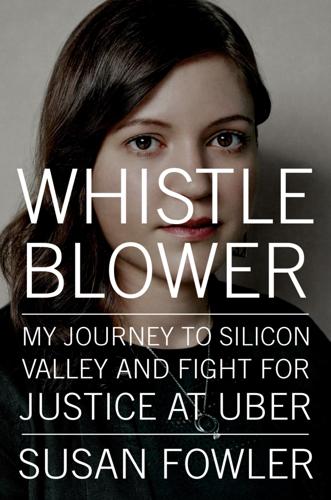
Whistleblower: My Journey to Silicon Valley and Fight for Justice at Uber
by
Susan Fowler
Published 18 Feb 2020
At the end of our call, he asked me to come into the office for an in-person, on-site interview. Before my interview with Eamon, I’d spent a lot of time searching online for things like “Uber sexual harassment,” “Uber discrimination,” and “Uber work culture,” determined to avoid a repeat of my past experiences. But nothing bad came up: from the Google search results, it looked like Uber had never been sued by its employees. I was relieved, taking this to mean that it had a good work culture. It made sense, I thought; a company as big as Uber probably couldn’t get away with what happened at smaller companies, because the story would eventually get out. What I didn’t know at the time was that the mere fact that there was no public record of wrongdoing wasn’t because Uber had a spotless record, but because all Uber employees were bound by forced arbitration.

Invisible Women
by
Caroline Criado Perez
Published 12 Mar 2019
Given that women need to recover from pregnancy and giving birth, and may be breastfeeding, they are most likely to take leave first, leaving the higher earner (Japanese men earn on average 27% more than Japanese women) to take the biggest salary hit.100 It is unsurprising, therefore, that only 2% of Japanese men take the months they are entitled to.101 Japan’s extreme work culture likely also plays a part here – in a country where even holidays are frowned on, fathers report being shamed and penalised at work for taking parental leave. It is worth persevering, however, because the benefits of policies that enshrine in law equal parental responsibility for a child that, after all, two people have created, are long-lasting.
…
When Apple announced its US HQ in 2017 as the ‘best office building in the world’, this state-of-the-art office was slated to include medical and dental treatment, luxury wellness spas – but not a child daycare centre.109 Best office in the world for men, then? The truth is that around the world, women continue to be disadvantaged by a working culture that is based on the ideological belief that male needs are universal. The vast majority of American homemakers (97% of whom are women) in a recent poll110 indicated that they would go back to work if they could work from home (76%) or if the job offered flexible hours (74%) – rather suggesting that while the majority of US companies claim to offer flexible working,111 the reality is somewhat different.
…
Japanese women spend an average of five hours a day on unpaid labour compared to men who spend about an hour: it’s clear who will be free to impress the boss by staying in the office till late, followed by back-slapping drinks at a local strip club.121 Women’s unpaid workload is compounded in Japan by the two-track career options available in most big Japanese firms: career-track and non-career-track. The non-career-track option is mainly administrative, offers few opportunities for advancement, and is known informally as the ‘mommy’ track – because ‘mommies’ don’t fit into the kind of work-culture that is required for someone on the career-track.122 Combined with the impact having children has on a woman’s chances of promotion (dependent on her ability to demonstrate loyalty through consecutive years worked at a single company), it is unsurprising that 70% of Japanese women stop working for a decade or more after they have their first child, compared to 30% of American women, with many remaining out of the workforce forever.123 It is also unsurprising that Japan has the sixth-largest gender gap in employment and the third-largest gender pay gap in the OECD.124 Long-hours culture is also a problem in academia – and it is exacerbated by career-progression systems designed around typically male life patterns.

Uncanny Valley: A Memoir
by
Anna Wiener
Published 14 Jan 2020
It wasn’t just about leisure, the easy access to nice food and private transportation and abundant personal entertainment. It was the work culture, too: what Silicon Valley got right, how it felt to be there. The energy of being surrounded by people who so easily articulated, and satisfied, their desires. The feeling that everything was just within reach. Was I trying too hard to make this mean something? I asked Leah. Was that just buying into the industry’s own narratives about itself? I tried to summarize the frantic, self-important work culture in Silicon Valley, how everyone was optimizing their bodies for longer lives, which could then be spent productively; how it was frowned upon to acknowledge that a tech job was a transaction rather than a noble mission or a seat on a rocket ship.

Creative Selection: Inside Apple's Design Process During the Golden Age of Steve Jobs
by
Ken Kocienda
Published 3 Sep 2018
So, here’s my take on the Apple Way, our recipe for making software for products like Safari, WebKit, iPhone, and iPad, my explanation for how we made great products: A small group of people built a work culture based on applying the seven essential elements through an ongoing process of creative selection. Expanded out, it reads like this: A small group of passionate, talented, imaginative, ingenious, ever-curious people built a work culture based on applying their inspiration and collaboration with diligence, craft, decisiveness, taste, and empathy and, through a lengthy progression of demo-feedback sessions, repeatedly tuned and optimized heuristics and algorithms, persisted through doubts and setbacks, selected the most promising bits of progress at every step, all with the goal of creating the best products possible.
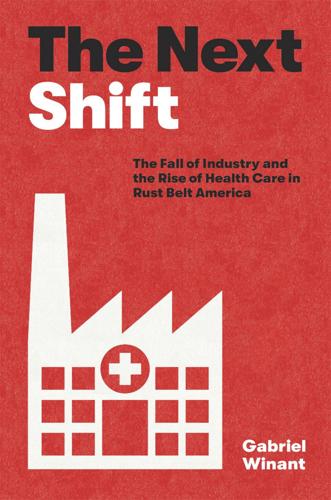
The Next Shift: The Fall of Industry and the Rise of Health Care in Rust Belt America
by
Gabriel Winant
Published 23 Mar 2021
.… Insurance companies did what they needed to do, doctors did what they needed to do, and the cost wasn’t so bad.”76 Providers were almost universally voluntary, nonprofit institutions—and often religious ones. “Mission trumped margin,” as Georgine Scarpino described Catholic health care in the postwar period. “It was like a family,” recalled Georgeanne Koehler of the Catholic work culture at St. Francis Hospital, where she worked as a psychiatric aide. “We loved working with the poor. Just loved it.… If you were poor, you might not get the best bed in the hospital, but you got the best care. And probably a little bit more in the way of compassion.” Inhibiting the infiltration of market logic, the state government penalized hospitals that dumped Medicaid patients on lower-grade facilities.77 Just as this inclusion rested upon disenfranchisement of care workers, however, it was also accompanied by the exclusion of the increasingly insecure Black fraction of the working class.
…
While adjustment of the system in the 1980s was designed to diminish consumption, in this way, the baseline need persisted: institutional health care had become too central to the survival and social reproduction of the population. The workforce that produced it, too, proved collectively indispensable—even if internally stratified and individually precarious. Care and Work Culture Pittsburgh’s health care system in the late 1970s and early 1980s remained the institutional product of the postwar welfare state, stamped by the social power and communitarian values of the organized industrial working class. The system had been swollen by the inflow of income in the 1970s, extending the logic of postwar liberalism into the 1980s virtually unaltered.
…
In a labor dispute at Monsour Medical Center, a nurse “testified after 11 years of employment that until very recently she was unaware that she was exceeding the purview of her responsibilities.” As observed by no less than Senator Richard Schweiker, many who worked in health care “would do voluntarily what we could not ask them to do otherwise.”4 By weakening the boundary between home and work, this work culture tended to generate everyday tensions between the two spheres and chaos in the lives of women workers. Gale Ridenour, for example, began work as a nurse in spring 1976. While management initially thought she was a slow learner, by midsummer her performance had improved. “Although Gale displayed some hesitance about assuming 3-11 charge, she has done well and has not needed to rely on Ms Hall,” wrote a supervisor in late summer.
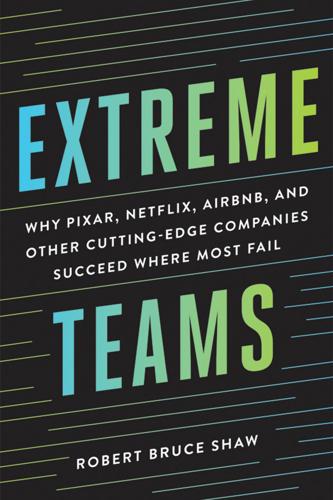
Extreme Teams: Why Pixar, Netflix, AirBnB, and Other Cutting-Edge Companies Succeed Where Most Fail
by
Robert Bruce Shaw
,
James Foster
and
Brilliance Audio
Published 14 Oct 2017
This is a profound difference that influences its policies, practices, and, most importantly, the way people think and behave within the company—including their interactions with customers. An executive of Whole Foods suggests that the firm’s success is based on the experience of customers when they shop at its stores: “Customers experience the food and the space, but what they really experience is the work culture. The true hidden secret of the company is the work culture. That’s what delivers the stores to the customers.”8 A second management principle shapes how teams operate at Whole Foods. The company believes teams function best when they embrace a set of company-wide practices. Teams at Whole Foods have a great deal of autonomy to make decisions that benefit customers, team members, and the company.

The Buddha and the Badass: The Secret Spiritual Art of Succeeding at Work
by
Vishen Lakhiani
Published 14 Sep 2020
In the ensuing ten years, a lot has changed: Mindvalley’s office is on Inc. magazine’s 2019 list of Top 10 Most Beautiful Offices in the World. As you’ll learn soon, it started in the backroom of a warehouse in Kuala Lumpur, Malaysia. We’ve reinvented the office and today it’s a case study for workplace interior designers. Our work culture at Mindvalley is so attractive that people from around the world relocate to Malaysia to work from our headquarters. Mindvalley employs brilliant minds from sixty different countries. Walking into our office is like walking into the United Nations with all its diversity. Our team dynamic is vibrant and thriving.
…
I couldn’t get my inner voice to shut up. It was telling me: Inner voice: You’re here for a reason. Quit feeling bad for yourself and start building up this company you call Mindvalley. Me: Piss off. I’m not in the mood. Inner voice: Be honest, you don’t have much of a choice. The work culture here is horrendous. It’s decades behind New York and Silicon Valley. You can’t find a job here that will keep you happy. So create your own world. Me: You make a good point. Inner voice: What makes you think you can’t attract talent in Malaysia? Sure, the country suffers from brain drain and there might not be much talent around, but think outside the box.
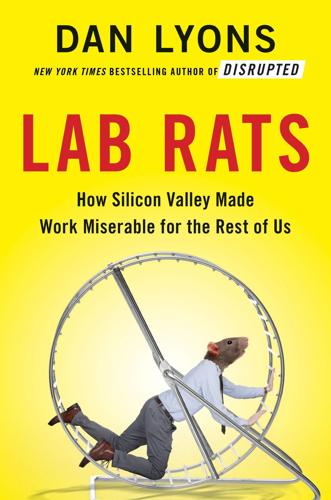
Lab Rats: How Silicon Valley Made Work Miserable for the Rest of Us
by
Dan Lyons
Published 22 Oct 2018
The answer, Robertson says, is self-organization. “Think about the human body. The human body has hundreds of trillions of cells. But there is no boss cell,” he says. This makes no sense, but anyway, we move on. Robertson tells us he began his quest to reinvent work because he was once a regular employee and found the traditional work culture to be stultifying. As he speaks he clicks on a remote, driving a PowerPoint presentation on a screen behind him. “I like to talk about my purpose in life,” Robertson says. “My purpose is to show people a radical new way to organize power.” As he says this he waves his hand—and the remote flies out of his fingers and skids across the floor.
…
Kooky management ideas are just part of the change roaring at us. We have a new compact with our employers, which involves jumping to a new job every two years and for many people means having to take charge of finding health benefits and figure out a way to save for retirement—things that our employers used to handle for us. We have a new work culture that celebrates overwork, exhaustion, and stress. Many of us are relocating to new offices, as companies abandon suburban office parks and move into urban locations. People who used to work remotely from home now must report for duty at an office, like those thousands of workers at IBM who have started schlepping into the company’s new “Agile hubs.”
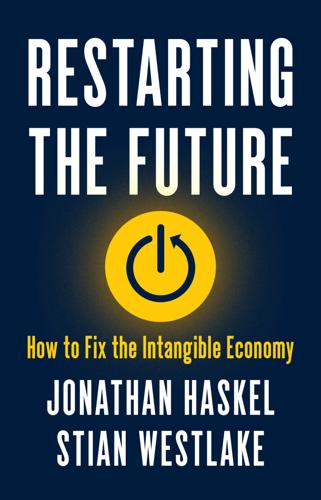
Restarting the Future: How to Fix the Intangible Economy
by
Jonathan Haskel
and
Stian Westlake
Published 4 Apr 2022
For example, Luis Garicano and Thomas Hubbard showed how better systems for monitoring performance and hours billed allowed law firms to differentiate between their highest performers and the rest.10 The stars ended up being paid more, while the laggards got left behind or were fired. Intangible investment allows professional services employers to replace egalitarian work cultures, where pay is often based on seniority, with sharply incentivised ones, where workers “eat what they kill.” The rise of intangible investment also has an indirect but powerful effect on wealth inequality. Following the publication of Thomas Piketty’s landmark Capital in the Twenty-First Century, it became clear that a significant proportion of the increased wealth inequality that Piketty observed (almost all of it, according to Matt Rognlie)11 derived from the dizzying increase in property prices in the late twentieth and early twenty-first centuries.
…
Donald Trump’s government paid little regard to technocracy, but the support he received from accelerationist technology investor Peter Thiel perhaps comes from the same place. It is not clear which, if any, of these political gambits to gain the legitimacy needed to drive institutional change will work. But it is notable that they are being tried—and that politicians are willing to risk reputational damage to see if they work. Culture, Trust, and Cognitive Load Institutional design and politics are important to fixing the mess we are in, but on their own they can go only so far. If we are to develop and deploy better institutions for a new type of economy, we will also need cultural change. Economic historians such as Joel Mokyr and Avner Greif have shown how the prosperity of the modern age depended not just on institutions, technologies, and resources but also on underlying cultural change.

Breaking Twitter: Elon Musk and the Most Controversial Corporate Takeover in History
by
Ben Mezrich
Published 6 Nov 2023
Some people were even more productive in the comfort of their home offices, not having to deal with commutes, unnecessary face-to-face meetings, wasted time in elevators, cafeterias, smoothie bars. But on the whole, Mark had found the shift to “distributed work” a gateway drug toward the weakened work culture at Twitter, which had made it harder and harder to get things done. From remote work, Leslie moved right into a question that was central to her audience’s concerns: “Can you speak to how you’re thinking about layoffs at Twitter?” Mark doubted Elon’s response put anyone listening at ease: “Well, I think it depends, the company does need to get healthy.
…
Apparently the kid had been playing the video game League of Legends through the entire meeting, securing $150 million from Sequoia without ever breaking game play. Elon could respect a little Zuckerbergian disassociation when it came to dealing with VCs, but other stories he’d heard about SBF and the work culture at FTC and Alameda had a darker tinge. Crypto exchanges, especially those with headquarters overseas, were notoriously sketchy. Though FTX had a US component and engaged in massive mainstream marketing—Super Bowl ads! Stadium naming rights! Celebrity endorsements as varied as Tom Brady and Larry David!
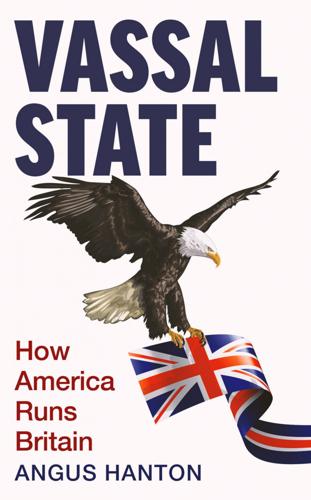
Vassal State
by
Angus Hanton
Published 25 Mar 2024
Don’t ever take a lunch break or go to the bathroom, you keep working.’4 In the same vein, Jeff Bezos of Amazon used to tell new employees: ‘You can work long, hard or smart, but at Amazon you can’t choose two out of three.’5 Elon Musk demands commitment and inspires by example, sleeping in his factories and often working a 120-hour week, explaining: ‘However hard it was for them, I would make it worse for me.’6 Musk goes further. In 2022, he talked admiringly of the even more demanding work culture in China: ‘There is just a lot of super talented hardworking people in China who strongly believe in manufacturing,’ he said. ‘They won’t just be burning the midnight oil, they will be burning the 3am oil, they won’t even leave the factory type of thing, whereas in America people are trying to avoid going to work at all.’7 Not that it is necessary for all workers to travel to work any more.
…
See ‘Baroness Morgan speaking on how we can make technology work for everyone’ [transcript of speech delivered at the Talent Charter Annual Event held at the Gherkin in the City of London on 15 January 2020], Gov.uk [website] (15 January 2020), https://www.gov.uk/government/speeches/baroness-morgan-speaking-on-how-we-can-make-technology-work-for-everyone. 4 Quoted in ‘Mayor Bloomberg: “Make sure you are the first one in there every day & the last one to leave”’, TechCrunch [website] (30 November 2011), https://techcrunch.com/2011/11/30/founder-stories-mayor-bloomberg-make-sure-you-are-the-first-one-in-there-every-day-the-last-one-to-leave/. 5 Quoted in ‘Why Jeff Bezos should care more for Amazon’s employees’, New York Times (21 August 2015), https://www.nytimes.com/2015/08/22/business/dealbook/why-jeff-bezos-should-care-more-for-amazons-employees.html. 6 Quoted in Catherine Clifford, ‘Elon Musk on working 120 hours in a week: “However hard it was for [the team], I would make it worse for me”’, CNBC Make It [website] (10 December 2018), https://www.cnbc.com/2018/12/10/elon-musk-says-working-120-hours-in-a-week-was-a-show-of-leadership.html. 7 Quoted in Wilfred Chan, ‘Elon Musk praises Chinese workers for “burning the 3am oil” – here’s what that really looks like’, Guardian (12 May 2022), https://www.theguardian.com/technology/2022/may/12/elon-musk-praises-chinese-workers-for-extreme-work-culture. 8 ‘Hours worked’, OECD [website], https://data.oecd.org/emp/hours-worked.htm. 9 Sarah Green Carmichael, ‘The research is clear: long hours backfire for people and for companies’, Harvard Business Review (19 August 2015), https://hbr.org/2015/08/the-research-is-clear-long-hours-backfire-for-people-and-for-companies. 10 Alexis de Tocqueville, Democracy in America, trans.
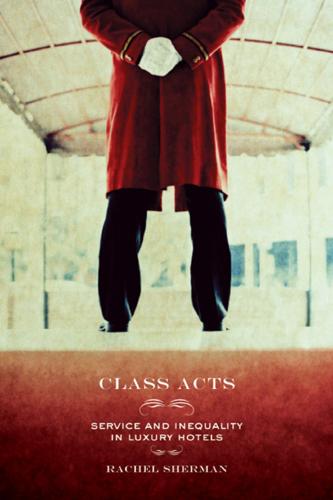
Class Acts: Service and Inequality in Luxury Hotels
by
Rachel Sherman
Published 18 Dec 2006
The production of dispositions in the hotel is presumably analogous to what happens in many other social institutions in which workers and clients also participate, including schools, families, clubs, and political organizations. Their experience in the hotel is unlikely to seem much different to them from their experiences in these other sites. I suggest that it should not seem so different to sociologists either and, thus, that dichotomies between inside and outside work, culture and production, are overstated. In the luxury hotel, this combination facilitates social reproduction. Guests’ sense of entitlement to the labor of others is solidified, as is their sense of reciprocal obligation to the individuals providing that labor. Workers’ interests are constituted in such a way that providing their subordinated labor to others benefits them.
…
Room service was very similar, because lack of supervision allowed workers to snack on various goodies and clown around. The restaurant servers played all kinds of games and practical jokes as well. 33. Susan Porter Benson makes a similar point when she shows that fragmented, inconsistent managerial authority in department stores and managers’ dependence on workers facilitate the development of a work culture among saleswomen (1986: 230). 34. I realized a few weeks into my work at the Royal Court that I had not tried to converse with any of the Spanish-speaking workers even though I speak Spanish; I felt that I had ended up on the front office side of some invisible barrier until I made a conscious effort to communicate with those workers. 35.
…
“The Politics of Service Production: Route Sales Work in the Potato-Chip Industry.” In Working in the Service Society, ed. Cameron Lynne Macdonald and Carmen Sirianni. Philadelphia: Temple University Press. Lundgren, Rebecka, and Carole Browner. 1990. “Caring for the Institutionalized Mentally Retarded: Work Culture and Work-Based Social Support.” In Circles of Care: Work and Identity in Women’s Lives, ed. Emily Abel and Margaret Nelson. Albany: State University of New York Press. Lynn, Michael, and Michael McCall. 2000. “Gratitude and Gratuity: A Metaanalysis of Research on the Service-Tipping Relationship.”
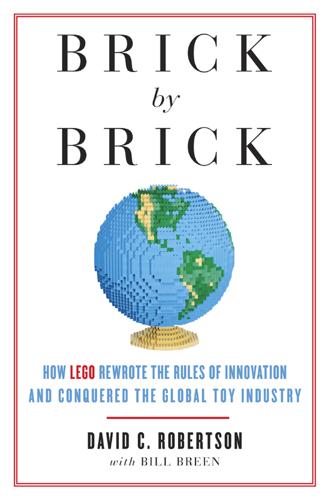
Brick by Brick: How LEGO Rewrote the Rules of Innovation and Conquered the Global Toy Industry
by
David Robertson
and
Bill Breen
Published 24 Jun 2013
Nicholas Negroponte, founder of the MIT Media Lab, has gone even further, declaring that the surest way to tap into a wellspring of new ideas “is to make sure that each person in your organization is as different as possible from the others. Under these conditions, and only these conditions, will people maintain varied perspectives and demonstrate their knowledge in different ways.”9 When Plougmann joined LEGO, he found a work culture that was isolated and calcifying—its mostly male, very veteran Danish executives and designers were hamstrung by a lack of urgency and by homogenized thinking. “Product development was in the hands of people who’d been at LEGO for twenty or thirty years,” he recalled. “They were so inward looking, they expected that whatever they created would be right for the market.”
…
LEGO was beset with so many challenges that for more than a year, a turnaround strategy eluded Knudstorp. Even so, he knew from the outset that unless they quickly learned to master at least two of the seven truths—“build an innovation culture” and “be customer driven”—LEGO wouldn’t stand a chance of getting back in the black. The company’s anything-goes work culture, where developers were encouraged to think far beyond the brick and managers were expected to pursue market opportunities that were only remotely connected with the brand, had very nearly sunk LEGO. As a result, Knudstorp and other leaders would have to shape a performance-based culture where people’s passion and creativity were balanced with discipline and focus.
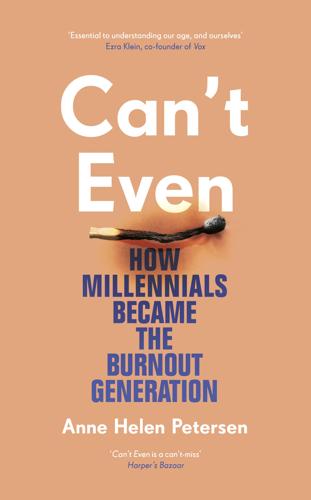
Can't Even: How Millennials Became the Burnout Generation
by
Anne Helen Petersen
Published 14 Jan 2021
“Work wasn’t just work; it was their life’s passion,” Martin explains, “and they devoted every waking hour to it, usually to the exclusion of nonwork relationships, exercise, sleep, food, and sometimes even personal care.” Psychologists at Lockheed, one of the preeminent companies in what would become Silicon Valley, dubbed the particularly desirable worker mentality “the sci-tech personality,” Martin says, and molded their work cultures around them: Work whatever hours you want, for as long as you want, in whatever clothes you want, and we’ll make it happen. At HP, they brought engineers breakfast “so they would remember to eat”—an early iteration of the cafeterias and free meals and snacks that have come to characterize startup culture.
…
And while there are women in politics and the business world who do advocate for these policies, either they do not occupy the positions of power to enforce them, or if they do, they often use their platforms to demonstrate that change isn’t needed. Marissa Meyer, formerly the CEO of Yahoo, famously refused to take more than two weeks of maternity leave after giving birth to her first child—a symptom of a work culture that will not accommodate the realities of parenthood, but also a symptom of her willingness to operate by and implicitly strengthen that same culture. There are exceptions, of course: Patagonia has led the way in establishing subsidized, on-site childcare; at the Gates Foundation, every employee received a full year of parenting leave (which was recently cut to six months, plus $20,000 to pay for childcare costs).

How to Stand Up to a Dictator
by
Maria Ressa
Published 19 Oct 2022
The more we did, the more we wanted to do. I began to understand the concept of a “workflow”: a standardized, step-by-step process for executing excellent stories. Every step required strict quality control. In the Philippines, there was a personal cost to calling out an error or demanding better in a work culture; SIR, or “smooth interpersonal relations,” had long been prioritized. So we created our own team and energized them with a vision of what we wanted our newscast to be. We wanted video with the tightest editing, sequenced properly to tell a story, instead of a B-roll that unfurled lazily and meaninglessly.
…
Our main base was in the capital, Manila, but we ran nineteen provincial stations and six overseas hubs: two in North America, one in the Middle East, and one each in Europe, Australia, and Japan. We distributed content on radio, TV, and the internet. I also managed the Philippines’ only twenty-four-hour local English cable news network, ANC, the ABS-CBN News Channel, which was also distributed globally. My first challenge at ABS-CBN was changing the work culture. The media was a microcosm of what our nation’s leaders had to deal with: when situational ethics and patronage politics determine whether you, your family, and friends are rewarded or not. I was used to a certain standard of performance at CNN, where loyalty didn’t trump merit and the group had to deliver or face the consequences.

The Meritocracy Trap: How America's Foundational Myth Feeds Inequality, Dismantles the Middle Class, and Devours the Elite
by
Daniel Markovits
Published 14 Sep 2019
cull less productive workers: The firm, being “driven by data,” will stop this only “if the data says it must.” Kantor and Streitfeld, “Inside Amazon.” Amazon also imposes: Kantor and Streitfeld, “Inside Amazon.” Apple, for example: See Ben Lovejoy, “Former Apple Managers Talk of the 24/7 Work Culture: ‘These People Are Nuts,’” 9to5Mac, October 1, 2014, accessed August 11, 2018, http://9to5mac.com/2014/10/01/former-apple-managers-talk-of-the-247-work-culture-these-people-are-nuts/. Recall also the law firm that tracks partners’ contributions in a database, updated every twenty minutes, that may be accessed by every partner, at any time and from anywhere, by computer or smartphone.
…
These accounts—right down to the gore—betray a monomaniac commitment to using, even abusing, oneself that is more familiar among elite athletes: they are white-collar versions of the NFL player Ronnie Lott’s decision to amputate a broken finger because surgery and a cast would have forced him to miss a crucial game. Even when meritocratic work culture pampers the body, it attacks the spirit. Amazon’s offices may be less brutal—less physically grinding—than its warehouse floors, but they are nevertheless pitiless and inhumane. The firm’s “leadership principles” call for managers to have “relentlessly high standards” and to “deliver results.” To achieve this, Amazon requires managers to challenge each other “even when doing so is uncomfortable or exhausting” and—borrowing a technique traditionally associated with cults and totalitarian states—to be “vocally self-critical, even when doing so is awkward or embarrassing.”
…
even banal: See, e.g., David Auerbach, “I’ve Worked Insanely Demanding Tech Jobs—and I Really Doubt Amazon Is Much Worse Than Google—or Even Microsoft,” Slate, August 17, 2015, accessed July 18, 2018, www.slate.com/articles/technology/bitwise/2015/08/amazon_abuse_of_white_collar_workers_i_worked_at_microsoft_and_google_and.html; Anne Weisberg, “The Workplace Culture That Flying Nannies Won’t Fix,” New York Times, August 24, 2015, accessed July 18, 2018, www.nytimes.com/2015/08/24/opinion/the-workplace-culture-that-flying-nannies-wont-fix.html?mcubz=0; “Depiction of Amazon Stirs a Debate About Work Culture,” New York Times, August 18, 2015, accessed July 18, 2018, www.nytimes.com/2015/08/19/technology/amazon-workplace-reactions-comments.html. not materially different: The language of worker competition changes across firms and over time. The particular phrases just rehearsed belong peculiarly to Amazon.

The Defence of the Realm
by
Christopher Andrew
Published 2 Aug 2010
One female member of staff recalls that when he came to office bridge evenings, ‘You would be his partner and he would not even talk to you.’60 FJ’s main visible enthusiasms were bird-watching and The Times crossword.61 The aloof management style of Hollis and FJ did little to diminish the sociable work culture of the rest of the Service, many of whose members never met the DG. One new recruit was told in 1953 by Bill Foulkes, a personnel officer in the newly founded B Branch, ‘One of the best things about working here is that the percentage of bastards is extremely low.’62 Extensive interviews with retirees and staff opinion surveys since the end of the Cold War63 strongly suggest that this has remained ever since the view of a considerable majority of the Service.
…
The declared number of dismissals in the civil service (which probably included resignations and reassignment to non-sensitive work) during the period from 1948 to 1954 was 124. The main impact of vetting, however, was at the point of entry. Almost certainly more were refused entry, or were deterred from applying, than were dismissed.82 The psychological impact was also considerable. Positive vetting was alien to the work culture of Whitehall. When Arthur de la Mare became head of the Foreign Office Security Department in 1955, it was still widely considered to be ‘unBritish’ and regarded by many diplomats with ‘contempt and derision’. He complained that many of the referees nominated by members of the Diplomatic Service who were being vetted ‘protested to us and their MPs at being interrogated by “snarks” on the background and integrity of their friends’.83 Far more remarkable than the distaste felt by the Diplomatic Service was the opposition within the Security Service to applying positive vetting to itself.
…
Thirdly, the lack of such a mechanism was ultimately the result of a managerial failure – particularly by FJ, who, despite his deep scepticism about the DRAT investigation, failed to appoint a Team B from within the Service to review the deeply flawed evidence on which it was based. Fourthly, the introverted work culture of the Service made it deeply reluctant to call in an experienced, senior figure from Whitehall to provide a second opinion. But that, in the end, a decade too late, is what it was forced to do. There was thus one long-term gain from the decade of otherwise futile and disruptive FLUENCY investigations.

How Not to Network a Nation: The Uneasy History of the Soviet Internet (Information Policy)
by
Benjamin Peters
Published 2 Jun 2016
Thus he resolved dozens of real-life conflicts within the actual social economy of formal appeals and complaints, including helping a grandmother campaign against alcoholism, speeding a mother’s request for an apartment, acquitting a decorated war veteran convicted of unspecified crimes, and restoring to his studies a graduate student found guilty of “hooliganry” for being found in a “nonsober” condition.38 At the same time that he was navigating this public trading zone between the superabundant conflicts of bureaucratic and real-life interests, he was developing the OGAS as a top-secret human-computer system proposal that would do the same—resolve informal conflicts at a national economic level. Next I look at how the informal behind-the-scenes work culture of these cyberneticists contextualizes this larger point. “Cybertonia”: From National Cyberculture to Local Counterculture Glushkov’s proposal to rationalize and automate the national economy in 1962 took shape just as his own institutional environment was being upgraded from a small computing center to a more ambitious formal setting of an academic institute, without losing its informal and, in after-work hours, almost countercultural work environment.
…
This chapter has offered a look at the institutional landscape and alliances that formed and then dissolved between Nikolai Fedorenko’s Central Economic-Mathematical Institute and Glushkov’s Institute of Cybernetics, their heydays as the leaders of economic cybernetics and networked cybernetic reform through the late 1960s, the informal work culture of the Kiev-based cyberneticists in the 1960s, and early bureaucratic barriers that slowed the advance of the OGAS Project in the Soviet military. Neither the Ministry of Defense nor the liberal economists wanted to collaborate and support the OGAS Project, perhaps because the country had endured four turbulent years, from 1962 to 1966.
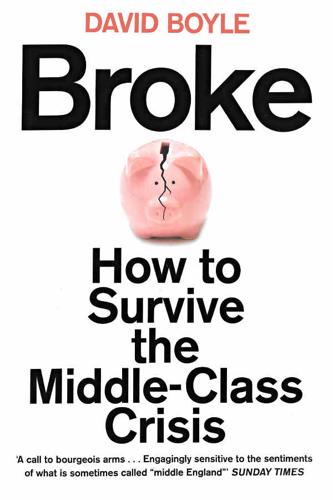
Broke: How to Survive the Middle Class Crisis
by
David Boyle
Published 15 Jan 2014
Then they turn that into the processes staff are led through on the screen. They also build in onerous reporting, box ticking and measurement systems to satisfy managers that the performance of every part of the process can be measured. ‘These are the assembly lines of the digital age,’ wrote Simon Head, one of the few academics to give this upheaval in work culture the attention it deserves, ‘complete with their own digital proletariat.’[14] A similar process was going on in the USA, though they came out the other side faster than we have in the UK. The American reform writer David Osborne, a trenchant critic of command-and-control, estimated that 20 per cent of American government spending was devoted to controlling the other 80 per cent, via armies of auditors and inspectors.
…
Their continued existence is vital for our own economic futures, for all the reasons that González de Cellerigo gave four centuries ago. But the English middle classes also stand for something, and even if this is no longer exactly thrift — as Patrick Hutber suggested in 1976 — it is also a series of connected values and ambitions about independence, work, culture, duty and the ability to make things happen. And paradoxically, also about the importance of values beyond money (even though they don’t always behave accordingly). Their presence is absolutely critical to a civilized life, not just for themselves, but for everyone. This book has been written like a kind of detective story.

The Problem With Work: Feminism, Marxism, Antiwork Politics, and Postwork Imaginaries
by
Kathi Weeks
Published 8 Sep 2011
Regardless of the wages, intrinsic appeal, or status of one’s work, it can serve as a means to assert one’s moral superiority and thereby legitimate one’s economic privilege over a series of racialized and gendered groups. Over the course of US history, there is a continuous calling into question of the work commitments and habits of different immigrant and racialized populations. Whether it was the panic about the inability of US corporations to compete with a more vigorous Japanese work culture or the ongoing debates regarding the supposed inadequacies of the work orientations of “inner city residents,” “the underclass,” “welfare mothers,” or “illegal aliens,” the work ethic is a deep discursive reservoir on which to draw to obscure and legitimate processes and logics of racial, gender, and nationalist formations past and present.
…
Gray, Anne. 2004. Unsocial Europe: Social Protection or Flexploitation? London: Pluto. Greenwood, Ernest. 1966. “The Elements of Professionalization.” In Professionalization, edited by Howard M. Vollmer and Donald L. Mills, 9–19. Englewood Cliffs, N.J.: Prentice-Hall. Gutman, Herbert G. 1977. Work, Culture, and Society in Industrializing America. New York: Vintage. Halberstam, Judith. 2005. In a Queer Time and Place: Transgender Bodies, Subcultural Lives. New York: New York University Press. Haraway, Donna. 1985. “A Manifesto for Cyborgs: Science, Technology, and Socialist Feminism in the 1980s.”
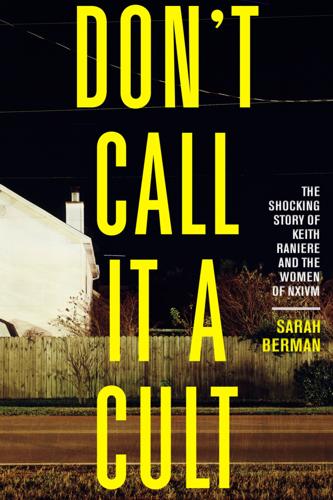
Don't Call It a Cult: The Shocking Story of Keith Raniere and the Women of NXIVM
by
Sarah Berman
Published 19 Apr 2021
She was swayed by the steady salary Raniere could offer, and was made to feel like family among his roommates and business partners. She left her marriage and moved to the Albany area to take a bigger role within the company. Like Gina, she didn’t know there was already a handful of secret girlfriends in Raniere’s life. According to Natalie, the day-to-day work culture at Consumers’ Buyline was charged with sexual innuendo and manic, stay-up-all-night energy. “You go in,” she recalled, “and there’s this flurry of young energetic people flying all over the place till two a.m. like it’s noon.” The office was decked out with hulking computers and whiteboards filled with equations, pulling off a proto-tech-startup vibe.
…
See collateral/collateral concept confinement, of Daniela conformity theory consent age of and bondage and branding issue of and sexual assault accusations Consumers’ Buyline complaints about creation of ends business growth KR’s defence of legal challenges of Natalie joins structure work culture of control techniques. See Raniere, Keith: discipline and control methods Cooper, Stephen creative writing cults accusation by E. Bronfman aspects of in NXIVM hallmarks of interventions NXIVM as Cuomo, Andrew D Dalai Lama Daniela attends first NXIVM meeting background becomes attracted to Myers confinement of confrontation with KR confronts KR about Camila contemplates suicide in confinement conversations with KR cuts hair desire for independent life desire to return to Mexico disillusionment with work at NXIVM education family’s belief in KR family’s rejection of first sexual experience with KR groomed by KR growing suspicions about KR hacking research and efforts impression of KR inability to apologize to KR intimidation techniques used on joins NXIVM KR discusses sex with life goals L.

This Is Service Design Doing: Applying Service Design Thinking in the Real World: A Practitioners' Handbook
by
Marc Stickdorn
,
Markus Edgar Hormess
,
Adam Lawrence
and
Jakob Schneider
Published 12 Jan 2018
There is a risk that they may fall in love with these ideas, so frame them as springboards for further ideation, or prototype them fast so they can fail and start to evolve. 16 Essentially, this is research. Indeed, many research techniques make great homework – such as autoethnography, service safaris, diary work, cultural probes, or interviews. 17 See http://www.theworldcafe.com. 18 But think twice before tasking all your participants to look at existing solutions, as this can actually reduce the diversity of their ideas. See for example Smith, S. M., Ward, T. B., & Schumacher, J. S. (1993). “Constraining Effects of Examples in a Creative Generation Task.”
…
The design team has first talks with the specific division in order to understand the scope of the “technical” project and identify user-centered design activities that could be executed as “integrated” UX or service design project. Such activities are categorized as “user experience design” or “service design” projects. In order to prevent a clash of working cultures, mindset, or terminology, the design team is free to decide on a different label and just refer to the scope as “improvement of the experience,” no matter if the project is concerned with the use of new products and services or the establishment of a customer relationship. This re-labeling is not just related to the terminology, but also reflected in the activities and tools used in the design phase.
…
→ Think about humans: People get motivated by taking on responsibility and meaningful work. We had intuitively applied these principles to our community, which on the one hand made it more attractive for colleagues to join and on the other hand provided a prototype of an organizational setup – hence, we became the symbol of the new working culture we were trying to establish. Management also realized our success, and we received support from our board – which was necessary in certain ways, especially to get backing for the 30% work-time issue. However, the management support we receive is by means of mentoring, not top-down decision making – we are still self-governed.
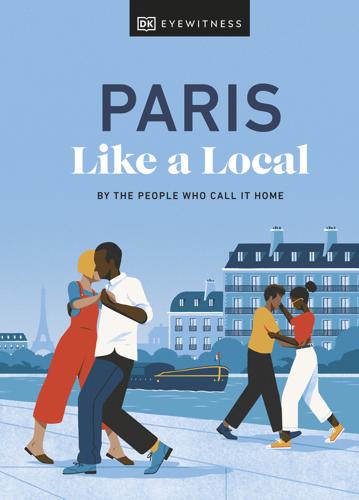
Paris Like a Local
by
Dk Eyewitness
g Contents ARTS & CULTURE Museum Lates Modern Art Esoteric Collections On Stage and Screen City History Community Projects Take a Tour: An afternoon exploring Paris’s art scene g ARTS & CULTURE g Contents Museum Lates Let tour groups, school children and chattering families take over the museums during the day. At night, these hubs belong to the locals, who get a post-work culture fix with the odd concert thrown in. g ARTS & CULTURE g Contents Museum Lates MUSÉE DU LUXEMBOURG CENTRE POMPIDOU MUSÉE D’ORSAY CITÉ DE L’ARCHITECTURE ET DU PATRIMOINE PALAIS DE TOKYO MUSÉE DU LOUVRE PALAIS GALLIERA MUSÉE DES ARTS ET MÉTIERS g Museum Lates g Contents Google Map MUSÉE DU LUXEMBOURG Map 1; 19 Rue de Vaugirard, 6th; ///moves.tumble.flexed; www.museeduluxembourg.fr Often overlooked by out-of-towners, this museum is highly revered by locals – most of whom drop by for a quiet, pre-dinner culture fix on Monday evenings.

When Work Disappears: The World of the New Urban Poor
by
William Julius Wilson
Published 1 Jan 1996
Because of the increasing shift away from manufacturing and toward service industries, employers have a greater need for workers who can effectively serve and relate to the consumer. Inner-city black men are not perceived as having these qualities. The restructuring of the urban economy could also have long-term consequences for inner-city black women. Neckerman argues that a change in work cultures accompanied the transformation of the economy, resulting in a mismatch between the old and new ways of succeeding in the labor market. In other words, there is a growing difference between the practices of blue-collar and service employers and the practices of white-collar employers. This mismatch is important in assessing the labor-market success of inner-city workers.
…
The position of inner-city black women in the labor market is also problematic. Their high degree of social isolation in impoverished neighborhoods reduces their employment prospects. Although Chicago employers consider them more acceptable as workers than the inner-city black men, their social isolation is likely to strengthen involvement in a work culture that has few supports allowing a move into white-collar employment. Also, impoverished neighborhoods, weak networks, and weak household supports decrease their ability to develop language and other job-related skills necessary in an economy that increasingly rewards employees who can work and communicate effectively with the public.

Neurodiversity at Work: Drive Innovation, Performance and Productivity With a Neurodiverse Workforce
by
Amanda Kirby
and
Theo Smith
Published 2 Aug 2021
You can then take some of this dialogue and debate back to your organization to initiate meaningful change by helping them to understand where positive interventions can be made and what the potential benefits are to both the employee and the employer. From an employer’s perspective it is worth noting that many employees (particularly from underrepresented groups including neurodiverse employees) value the ability ‘to bring your whole self to work’. Being able to openly express one’s self in a pluralist inclusive work culture leads to retention of staff, good team morale and increased productivity. However, bringing ‘your whole self to work’ doesn’t mean you need to reveal everything about yourself but choosing and knowing you can. This is not our novel concept and has been given close attention by Mike Robbins in his book Bring Your Whole Self to Work: How vulnerability unlocks creativity, connection, and performance.8 Google conducted an in-depth research project between 2012 and 2014 called Project Aristotle, aimed at determining the key factors that contribute to high-performing teams.
…
We must not underestimate how creative ideas, positive action and change can come from a wide variety of people. Having a group composed solely of those who identify as autistic or dyslexic could create its own ‘groupthink’ challenges. You could inadvertently create a group subculture, which is in its own way just as monolithic and singular as the wider work culture it is trying to influence. And, on a practical note, think about the logistics of the network meeting up: when, where and how. For example, try not to organize the first meet-up in a busy space with bright lights and poor noise reduction. Be considerate of those attending; you may want to offer different ways of engaging that suit different styles of communication.
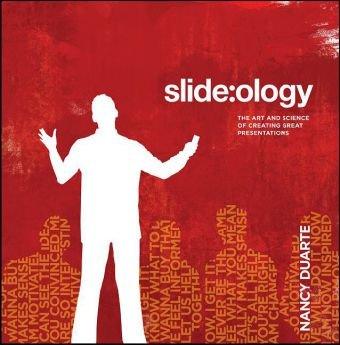
Slide:ology: the art and science of creating great presentations
by
Nancy Duarte
Published 15 Nov 2008
The term codependent was coined in the mid ’80s and initially used by Alcoholics Anonymous to describe the unhealthy psychological condition that occurs in a relationship when one partner suffers from an addiction. 218 slide:ology A codependent person ends up providing too much care—and often too much latitude—to someone who is unhealthy. You are in a codependent relationship with your slides if you are desperately addicted to them and unable to break away. You may even make excuses for their sad condition, which of course only perpetuates their dilapidated state. If you are in a work culture that enables this codependent relationship, it will be even tougher to transform yourself. The first step is to admit you have a problem. The second is to acknowledge that your slides have become unmanageable. Dense content on slides can be addictive. The default template settings in applications such as PowerPoint encourage you to put an enormous amount of text on each slide, which transforms the slide into a document rather than a visual aid.
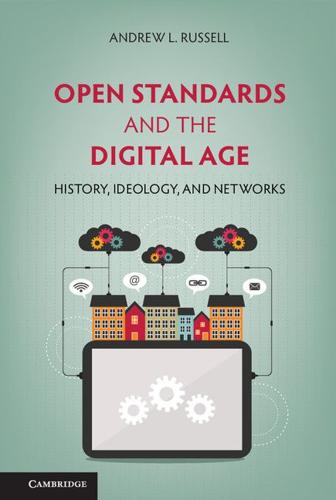
Open Standards and the Digital Age: History, Ideology, and Networks (Cambridge Studies in the Emergence of Global Enterprise)
by
Andrew L. Russell
Published 27 Apr 2014
If one of the founding ideals of OSI was to create a viable architectural alternative to IBM’s SNA, an equally important ideal was to ensure that future standards for computer networks be under the jurisdiction of computer professionals, not telecommunications professionals. Nevertheless, the convergence of computer and telecommunication technologies and services once again forced both groups to come together and try to reconcile the incompatibilities between their respective technical practices, work cultures, political economies, and motivations for creating international standards. Proponents of open and distributed systems were successful in creating their own forum for deliberations – SC16 – but they always operated under the explicit requirement to take the activities of telecom monopolies “into due account.”52 At its first meeting in February and March 1978, OSI leaders negotiated an agreement with members of CCITT Study Group 7 (the committee responsible for X.25) to share jurisdiction over proposed standards that would “have an impact on the basic design and features of Data Processing Systems.”
…
Its chief competitor was the Internet, sustained by a standardization process that was an exception to – and critique of – requirements for consensus, due process, and a balance of interests that were developed by voluntary consensus bodies such as the American National Standards Institute (ANSI) and ISO. Individuals, rather than companies or nation-states, were the only recognized participants. The Internet’s work culture – with its affinity for late-night bar meetings, informal hallway conversations, and benevolent elders – inverted the stiff diplomacy and representative democracy embodied in the formal procedures of the venerable national and international bodies. By the mid-1990s, the Internet political philosophy of “rough consensus and running code” – and its circumvention of monopolies, governments, and established channels for setting international standards – was widely admired and increasingly celebrated as a new norm and a new model of standardization for the information technology industries.

Lost Kingdom: The Quest for Empire and the Making of the Russian Nation
by
Serhii Plokhy
Published 9 Oct 2017
An internationalist by conviction and an opponent of all nationalism, including Russian, Bukharin toed the party line when in July 1934, in connection with the reintroduction of history into the school curriculum, he praised the notion of the Soviet motherland and Soviet patriotism. Nevertheless, he defined the latter in international terms as “love of work, culture, the historical future of humanity, love of the noblest ideas of the age.” Bukharin was one of the main promoters of the notion of the Soviet people, which for him was devoid of any particular national coloration. Within that paradigm, he felt as comfortable attacking what he saw as the negative features of the Russian national tradition as he did any other tradition in the USSR.
…
“In the past, the Russian people”: David Brandenberger, National Bolshevism: Stalinist Mass Culture and the Formation of Modern Russian National Identity, 1931–1956 (Cambridge, MA, 2002), 34. “Whoever raises his hand”: “Za rodinu,” Pravda, June 9, 1934. “That tsarist rule in Russia”: Iosif Stalin, “O stat’e Ėngelsa ‘Vneshniaia politika russkogo tsarizma,’” Bol’shevik, no. 9 (May 1931): 1–5. “love of work, culture”: Aleksandr Vdovin, Russkie v XX veke: Fakty, sobytiia, liudi (Moscow, 2004), 78. “Once I said to Lenin”: Ibid., 103. “I well understand”: Ibid., 89. “an attempt to exalt the robbers”: Viktor Danilov, Vlast’ i formirovanie istoricheskogo soznaniia sovetskogo obshchestva (Moscow, 2005), 116.

Work: A History of How We Spend Our Time
by
James Suzman
Published 2 Sep 2020
As a result, they don’t form part of the national conversation, or feature in news headlines, or result in grieving relatives demanding abject apologies from employers or action by governments. Even so, occasionally the problem has generated some profile. Over the course of the last decade, for instance, the CEO of France Telecom was forced to step down and several senior managers were put on trial charged with ‘moral harassment’, as a consequence of the toxic working culture they instilled at the company and which prosecutors insisted contributed to thirty-five suicides among staff members over the course of 2008 and 2009. There is now much more discussion about mental-health issues in the workplace in countries like Britain and the USA. And for good reason if the statistics are anything to go by.
…
Far more likely catalysts take the form of a rapidly changing climate, like that which spurred the invention of agriculture; anger ignited by systematic inequalities like those that stirred the Russian revolution; or perhaps even a viral pandemic that exposes the obsolescence of our economic institutions and working culture, causing us to ask what jobs are truly valuable and question why we are content to let our markets reward those in often pointless or parasitic roles so much more than those we recognise as essential. Conclusion When in the 1960s anthropologists began to work with contemporary forager societies like the Ju/’hoansi, BaMbuti and Hadzabe, they did so in the hope that their work might shed some light on how our ancestors lived in the deep past.

The People: The Rise and Fall of the Working Class, 1910-2010
by
Selina Todd
Published 9 Apr 2014
Schumann (eds.), Life after Death: Approaches to a Cultural and Social History of Europe during the 1940s and 1950s (Cambridge, 2003). 26. D. Kynaston, Family Britain, 1951–57 (London, 2010). 27. M. Young, ‘Distribution of Income within the Family’, British Journal of Sociology, vol. 3, no. 4 (1952). 28. See for example ‘An Investigation into Problem Families’, 1950, D495 (LI), R1, pp. 45–6, ULASC. 29. P. Ayers, ‘Work, Culture and Gender: The Making of Masculinities in Post-war Liverpool’, Labour History Review, vol. 69, no. 2 (2004). 30. Rowntree and Lavers, Poverty and the Welfare State, pp. 36–8. 31. On opinion polls see R. Lowe, ‘Modernizing Britain’s Welfare State’, in L. Black and H. Pemberton (eds.), An Affluent Society?
…
Todd, S., Young Women, Work, and Family in England, 1918–1950 (Oxford: Oxford University Press, 2005) White, J., Rothschild Buildings: Life in an East End Tenement Block, 1887–1920 (London: Routledge and Kegan Paul, 1980) ——The Worst Street in North London: Campbell Bunk, Islington, Between the Wars (London: Routledge, 1986) Zweiniger-Bargielowska, I., Austerity in Britain: Rationing, Controls, and Consumption: 1939–1955 (Oxford: Oxford University Press, 2000) HISTORIES AND COMMENTARIES (ARTICLES) Abrams, L., ‘“There was Nobody like my Daddy”: Fathers, the Family and the Marginalisation of Men in Modern Scotland’, Scottish Historical Review, vol. 78, no. 206 (1999) Alexander, S., ‘A New Civilization? London Surveyed 1928–1940s’, History Workshop Journal, vol. 64, no. 1 (2007) Ayers, P., ‘Work, Culture and Gender: The Making of Masculinities in Post-war Liverpool’, Labour History Review, vol. 69, no. 2 (2004) Bowden, S. and A. Offer, ‘Household Appliances and the Use of Time: The United States and Britain since the 1920s’, Economic History Review, vol. 48, no. 4 (1994) Clapson, M., ‘The Suburban Aspiration in England since 1919’, Contemporary British History, vol. 14, no. 1 (2000) Dale, P. and K.

Scots and Catalans: Union and Disunion
by
J. H. Elliott
Published 20 Aug 2018
Lee and G. C. Peden (eds.), The Transformation of Scotland: The Economy Since 1700 (Edinburgh, 2005), p. 40. 61. ‘. . . a comparison . . . that would merit further scrutiny’, in Devine and Wormald (eds.), Oxford Handbook of Modern Scottish History , p. 405. 62. William W. Knox, Industrial Nation: Work, Culture and Society in Scotland, 1800–Present (Edinburgh, 1999), p. 34. 63. Devine, Lee and Peden (eds.), Transformation of Scotland , ch. 3. 64. Knox, Industrial Nation , p. 36. 65. Devine and Jackson (eds.), Glasgow , vol. 1, p. 172. 66. Jaime Vicens Vives and Montserrat Llorens, Industrials i polítics del segle XIX (Barcelona, 2010, 1st edn., 1958), pp. 21–9; Devine, Lee and Peden (eds.), Transformation of Scotland , p. 51. 67.
…
Cambridge, 1999. Kidd, Colin. Union and Unionisms: Political Thought in Scotland, 1500–2000 . Cambridge, 2008. Kidd, Colin. ‘Eighteenth-Century Scotland and the Three Unions’, in T. C. Smout (ed.), Anglo-Scottish Relations from 1603 to 1900 . Oxford, 2005. Knox, William W. Industrial Nation: Work, Culture and Society in Scotland, 1800–Present . Edinburgh, 1999. Konetzke, Richard. ‘La legislación sobre inmigración de extranjeros en América durante el reinado de Carlos V’, in Charles-Quint et son temps . Paris, 1959. Lee, Maurice Jr. The ‘Inevitable’ Union and Other Essays on Early Modern Scotland .
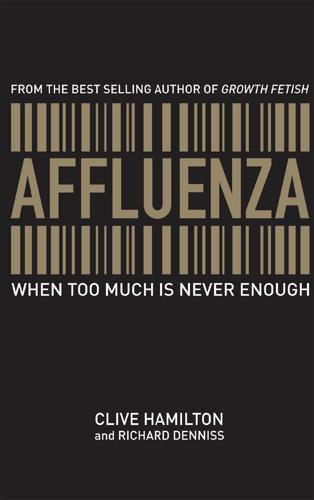
Affluenza: When Too Much Is Never Enough
by
Clive Hamilton
and
Richard Denniss
Published 31 May 2005
Withdrawal from community also reinforces the tendency among people who work long hours to mix almost exclusively with their workmates. There is nothing wrong with forming friendships with work colleagues, but problems do arise when individuals are unable to gain an external perspective on their work culture and the hours they are working. Community activity facilitates much broader mixing across socio-economic groups. Although hierarchies can exist in community and sporting groups, they are less likely to be based solely on income and profession. The broader an individual’s social network the less likely it is that they will see themselves at the bottom of the pecking order, because the definition of ‘success’ will differ widely across different organisations.
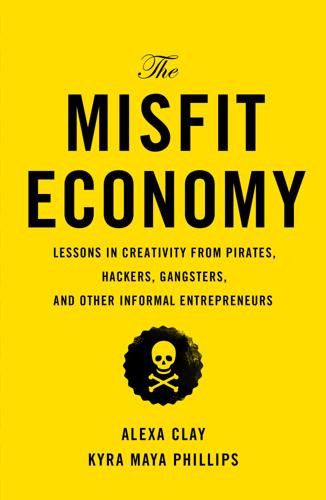
The Misfit Economy: Lessons in Creativity From Pirates, Hackers, Gangsters and Other Informal Entrepreneurs
by
Alexa Clay
and
Kyra Maya Phillips
Published 23 Jun 2015
“The pirate,” Rediker continues, “was thus a threat to property, the individual, society, the colony, the empire, the Crown, the nation, the world of nations, and indeed all mankind.”15 Centuries before the invention of the computer, pirates successfully demonstrated the power of the hack, the potency of studying the establishment, taking apart the system to understand its every component, then using this knowledge to better it. WHY HACK? Today the characteristics associated with hackers are informing expectations around a new culture of work. Hackers pioneered many principles of informality that have since come to infect mainstream work culture. These include: problem-based work, a culture of openness and transparency, reputational and peer-based accountability (instead of rigid hierarchies and managers), and the permission to act on new opportunities. In a letter to potential investors, Mark Zuckerberg of Facebook described the company’s culture and unique management approach, which he dubbed “The Hacker Way.”16 “Hacking,” Zuckerberg wrote, “is a means of building something or testing the boundaries of what can be done.”

Unleashed
by
Anne Morriss
and
Frances Frei
Published 1 Jun 2020
It was the ultimate after-hours activity, highly restorative while also improving his ability to do his day job. Improv made Jason more effective as a leader, but he wasn’t leading while up on stage, “yes, and …”-ing his fellow performers.* This is a simple but important distinction, which can sometimes get blurred in a work culture that has normalized Ping-Pong as a legitimate, on-the-clock activity. Jason was growing as a professional and recovering as a human being, but he wasn’t having impact as a leader until he got down off the stage and returned to the challenge of empowering other people. In our experience, it’s generally one or the other.

Futureproof: 9 Rules for Humans in the Age of Automation
by
Kevin Roose
Published 9 Mar 2021
The Second Industrial Revolution created the Gilded Age, a period of American history during the late nineteenth century that was marked by staggering corruption, bloody labor clashes, bitter racial injustice, and soaring income inequality. And the advances in communication technology during the Third Industrial Revolution generated huge productivity gains, but they also facilitated a new 24/7 work culture and introduced new sources of anxiety into white-collar workplaces, leading to unprecedented levels of burnout and job-related stress. History suggests that while periods of technological change often improve conditions for elites and capital owners, workers don’t always experience the benefits right away.

Technically Wrong: Sexist Apps, Biased Algorithms, and Other Threats of Toxic Tech
by
Sara Wachter-Boettcher
Published 9 Oct 2017
All you need to do is slough away the layers of self-aggrandizement and jargon, and get at the heart of how people in technology work—and why their decisions so often don’t serve you. In this book we’ll take a closer look at how the tech industry operates, and see how its hiring practices and work culture create teams that don’t represent most of us—no matter how many “diversity” events these companies put on. Then we’ll walk through ways these design and development teams create shallow perceptions of audiences and their needs, and how those perceptions lead to products that, at best, leave out huge percentages of users—and at worst, take advantage of our personal data and encode bias into systems that hold tremendous power over real people’s lives and livelihoods.

Survival of the Richest: Escape Fantasies of the Tech Billionaires
by
Douglas Rushkoff
Published 7 Sep 2022
While opinions vary on whether Burning Man has stayed true to its original ethos, the festival remains highly psychedelic, and has made the taking of acid, mushrooms, or even stronger entheogens into something of a rite of passage for the would-be enlightened tech executive. For twenty-first-century Silicon Valley operators, these psychedelic initiations serve a purpose analogous to the way alcohol was used by media and advertising executives in mid-century New York. Getting drunk and harassing women was not just a facet of chauvinist work culture, but a way for an executive to prove he had no scruples about fucking over consumers, either. Psychedelics are a way for modern-day tech executives to show they are willing to reformat their own cognitive hard drives, and daring enough to apply those insights to the world at large. They are ready to reprogram humanity.
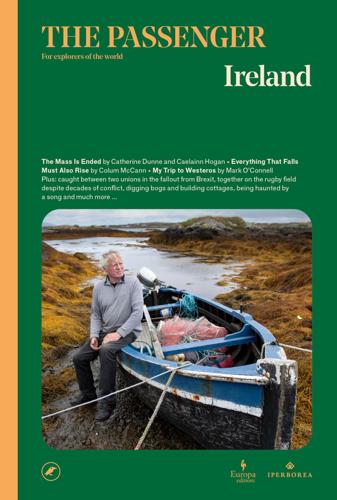
The Passenger
by
The Passenger
Published 27 Dec 2021
In 2019 Ireland’s Climate Action Plan conceded that the country was ‘way off course’ and vowed that by 2030 at least 70 per cent of its electricity would come from renewable sources, establishing the abandonment of peat fuel as national policy. The Bord had already announced in 2014 that it expected to stop extracting peat for fuel by 2030, but as climate breakdown has accelerated the company has been forced to scale back far more quickly than planned and has eliminated hundreds of jobs. The impact on the Midlands economy and working culture has already proved devastating, but even a radical transformation in energy policy will not undo the ecological damage that peat extraction has caused. ‘Fifty per cent of Europe’s raised bogs are in Ireland,’ Whyte told me as we walked back to the car. ‘We have a legal obligation to protect them, but less than 10 per cent are deemed worthy of conservation because they’ve all been impacted.’

The Rise and Fall of Nations: Forces of Change in the Post-Crisis World
by
Ruchir Sharma
Published 5 Jun 2016
In Mexico, the official retirement age is 65, but the typical Mexican man retires at 72. In France, the official retirement age is also 65, but the typical Frenchman actually retires before 60. Changing the official retirement age and the level of pension benefits can encourage people to stay on the job, but it can’t produce overnight changes in the work culture. In most countries, the duration of the retirement “golden years” continues to lengthen, weighing on the economy. In the thirty-four industrial countries that belong to the Organization for Economic Cooperation and Development (OECD), from China and South Korea to the United States and Britain, the gap between the age at which the average person retires and the age at which he or she dies is now fifteen years, having increased steadily from two years in 1970.
…
Since Xi took office in 2012 and started his crackdown, Mixer said, the new greeting is, “Have you been in yet?”—the word in refers to jail. By early 2015, more than 400,000 party members have been reprimanded and more than 200,000 prosecuted. Increasingly, the crackdown looks like a genuine effort to change the working culture of the party and cleanse it of corruption. That is a good sign for China. Country Total billionaire wealth/GDP Bad billionaires’ wealth/total billionaire wealth Inherited billionaires’ wealth/total billionaire wealth Brazil 8% 5% 43% China 5% 27% 1% India 14% 31% 61% Indonesia 7% 12% 62% Mexico 11% 71% 38% Poland 2% 44% 0% Russia 16% 67% 0% South Korea 5% 4% 83% Taiwan 16% 23% 44% Turkey 6% 22% 57% EM Average 9% 31% 39% Country Total billionaire wealth/GDP Bad billionaires’ wealth/total billionaire wealth Inherited billionaires’ wealth/total billionaire wealth Australia 5% 45% 41% Canada 8% 11% 47% France 9% 5% 67% Germany 11% 1% 73% Italy 7% 3% 51% Japan 2% 9% 14% Sweden 21% 5% 77% Switzerland 15% 29% 62% United Kingdom 6% 25% 32% United States 15% 10% 34% DM Average 10% 14% 50% Source: Forbes Billionaires List, March 2015 Why Bad Billionaires Matter Most The rubric of good versus bad billionaires is the most important part of this rule, because even if the superrich control an unusually large share of the wealth, and leading families face little competition, they can make a positive contribution to growth if their wealth is concentrated in productive companies.

Troublemakers: Silicon Valley's Coming of Age
by
Leslie Berlin
Published 7 Nov 2017
“That bathroom would have been worth $12,500,000,” Kurtzig later pointed out.37 Though many ASK employees may have had stock options, few, including even the earliest hires, owned significant amounts of stock. When ASK went public, Kurtzig’s shares were worth $40 million. She owned 3.6 million shares, seven times the combined stock of all other employees.II38 By the time ASK went public, it had many trappings of a classic Silicon Valley company. Its improvisational work culture featured jokes, first names, and dispersed authority. ASK’s board included the CEO of ROLM, one of the Valley’s most successful firms; the managing senior partner of a major investment bank; and an attorney from Wilson Sonsini Goodrich & Rosati, the law firm that Larry Sonsini had by now successfully built into a one-stop shop for entrepreneurs.39 Young programmers in jeans worked in ASK’s low-slung headquarters building.
…
One person recalls that even the women on the assembly line talked about the value of ROLM’s stock and where it might go.9 Fawn Alvarez’s mother, Vineta, who had not sold a single share of the stock for which she had paid $7,000 during her years at ROLM, discovered that her equity was worth $360,000 (nearly $830,000 in 2016 dollars).10 Fear quickly followed the elation. How would ROLM, with its 9,000 employees, retain its identity and “great place to work” culture after IBM, with 350,000 employees, absorbed it? At ROLM, many people wore jeans to work, and Friday-afternoon beer bashes were sacrosanct. On Halloween, ROLM’s vice president of marketing dressed as Supermanager, complete with red tights and a red cape. By contrast, IBM had an unwritten dress code (white oxford-cloth shirt, tie) and a corporate policy that forbade drinking on the job.11 IBM’s success with its personal computer—developed in secret by what was essentially an internal startup operation—offered some hope that the giant company would appreciate ROLM’s innovative and entrepreneurial spirit.

Let My People Go Surfing
by
Yvon Chouinard
Published 20 Jun 2006
HUMAN RESOURCE PHILOSOPHY A master in the art of living draws no sharp distinction between his work and his play; his labor and his leisure; his mind and his body; his education and his recreation. He hardly knows which is which. He simply pursues his vision of excellence through whatever he is doing, and leaves others to determine whether he is working or playing. To himself, he always appears to be doing both. —FRANÇOIS AUGUSTE RENÉ CHATEAUBRIAND Patagonia’s working culture can be traced to the origins of Chouinard Equipment. Ours was a small company designing and making the world’s best climbing equipment for its employees and their friends. The owners and employees were climbers; none considered themselves businesspeople. Working satisfied the creative urge to do something both useful and pleasurable, to make beautiful, functional climbing tools that the employees needed to pursue their own climbing.
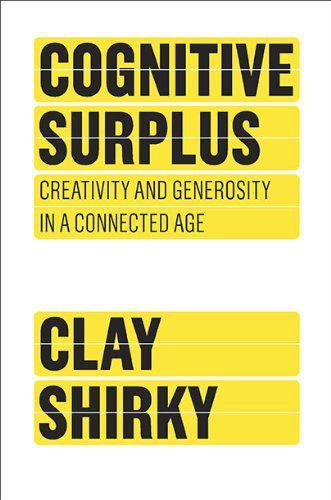
Cognitive Surplus: Creativity and Generosity in a Connected Age
by
Clay Shirky
Published 9 Jun 2010
“We are going to clean up market streets in Lahore, and in doing so make Pakistan a better place. By signing here, you agree to show up in Anarkali and clean from 10 A.M. to 2 P.M. on Saturday.” Put that way, it’s pretty easy to see why building something out of people’s intrinsic motivations plus their free time is slow and uncertain work. Culture can’t be created by fiat. (Little in the domain of cognitive surplus can be done by fiat.) But the task isn’t just to get something done, it’s to create an environment in which people want to do it. Working groups tend to accrue more governance as they grow, in part because the larger a group is, the more tension there can be between any two members of the group, and the greater the power imbalance between any member and the group as a whole.
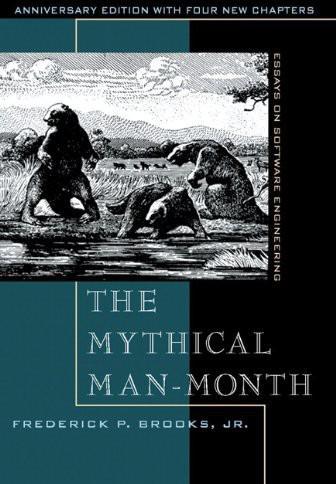
The Mythical Man-Month
by
Brooks, Jr. Frederick P.
Published 1 Jan 1975
In the classical in-house application development industry, schedule and the details of function were negotiable, development cost might not be; in the fiercely competitive open market, schedule and function quite dominate development cost. As one would expect, the starkly different economics have given rise to rather different programming cultures. The classical industry tended to be dominated by large firms with established management styles and work cultures. The shrink-wrapped industry, on the other hand, began as hundreds of start-ups, freewheeling and fiercely focused on getting the job done rather than on process. In this climate, there has always been a much greater recognition of the talent of the individual programmer, an implicit awareness that great designs come from great designers.

Rethinking Narcissism: The Bad---And Surprising Good---About Feeling Special
by
Dr. Craig Malkin
Published 6 Jul 2015
Some examples: •Your boss questions the quality of your analysis on a company’s equity, and then moves on to questioning whether or not you have what it takes to be a success at work. Can you help me understand how this helps me with the problems you see? What is it you want changed? •Your subordinate begins ranting about the abusive culture of the office (though you suspect he’s largely to blame). Can you help me understand how this improves our work culture? What specific solutions did you have in mind? •Your coworker starts blaming you for everything that’s gone wrong on a project. Can you help me understand how this helps our project move forward? I’m not sure what it is you’re asking for. Block the Pass If you’re feeling helpless or overwhelmed after an interaction with anyone at work, you’re likely at the end of an attempted hot-potato pass.
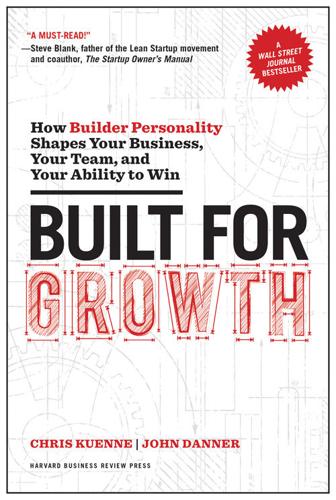
Built for Growth: How Builder Personality Shapes Your Business, Your Team, and Your Ability to Win
by
Chris Kuenne
and
John Danner
Published 5 Jun 2017
Later on, a candidate presumably has more choice in selecting where to apply his or her skills and therefore can be more demanding in fi nding the right alignment with you. * * * Too many ventures fail not because they have bad products, lousy business models, too little money, or uninterested customers, but because they don’t get the team dynamics and work culture right. As a builder, you may do a great job of selling and telling to get your businesses off the ground, but then flunk at gelling—developing an effective, high-performing team of talented people to grow that business to the scale worthy of its potential. Armed with the insights in this chapter, you can improve your odds of achieving what may be the most important fit of all: that between your Builder Personality and the team members you choose—and who, in turn, choose you—to build this business. 8 ATTRACTING YOUR BEST FINANCIAL SPONSORS Powering Vision with the Right Capital How important is Builder Personality to the financial sponsors of startups?
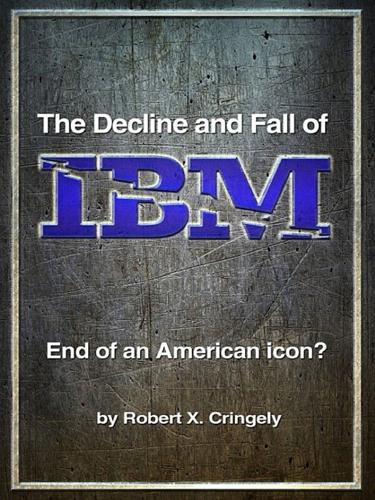
The Decline and Fall of IBM: End of an American Icon?
by
Robert X. Cringely
Published 1 Jun 2014
I wonder what would happen to the non-performers who grew so far by being loyal to managers. I do not even want to think about what would happen to the managers, who are technically challenged (not all, but most of them) and not fit for the outside industry. It is this very set of people who encouraged a low performance work culture here in India. The low performers who were loyal to the managers were rewarded and the high performers who come with some attitude were penalized. They were cutting the branch in which they were relaxing. Now the fun begins. STG IBM-India / August 18, 2013 / 8:39 am IBM in ‘death spiral’ Flashes of ENRON come to mind and I believe that the IBM Company will implode in less than five years from now; at ENRON (a big company), everyone thought the company would carry on indefinitely, regardless of what happened when the fraud was discovered.

The Creative Curve: How to Develop the Right Idea, at the Right Time
by
Allen Gannett
Published 11 Jun 2018
His grunge rock band developed a small measure of fame, but the life of a touring musician was a recipe for boredom, “I didn’t like it. It was very monotonous. It was three or four nights a week of the same exact thing.” He brainstormed different career options. What jobs would allow him to be at home, near his wife and, someday, his children? And could he avoid an office environment? He wanted a creative work culture, not one that reminded him of a random DMV. Hardesty hashed through various options and found a career that fit the bill: a painter! Artists practiced their trade from their homes or their studios, then shipped their work to galleries, where it was sold. As a fine artist, he would be near his wife and future children, far away from pale gray office ceiling tiles.
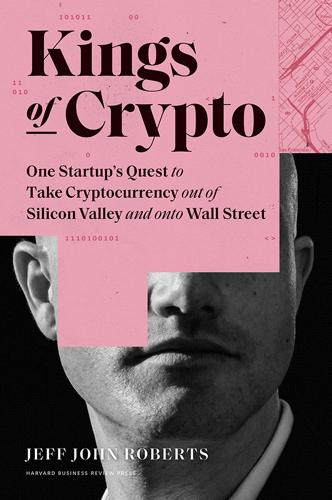
Kings of Crypto: One Startup's Quest to Take Cryptocurrency Out of Silicon Valley and Onto Wall Street
by
Jeff John Roberts
Published 15 Dec 2020
Fred and Brian persuaded Julian to come to San Francisco for a work trial. These work trials were part of Coinbase culture and amounted to a several-days test to see if a prospective employee would fit in. Julian fit in just fine but, for his part, he had two objections. The first was that Americans worked too much. He preferred a work culture that left more time for sipping beer. Julian’s other objection was the beer itself—more specifically, that Americans did not know how to make it right. He flew back to Germany. Coinbase had better luck with Charlie Lee. A stout, soft-spoken man who wears his jet-black hair in a sharp part, Lee had used his “20% time” at Google—a renowned perk that let employees spend a fifth of their work hours on personal projects—to create Litecoin, an early alternative to bitcoin.
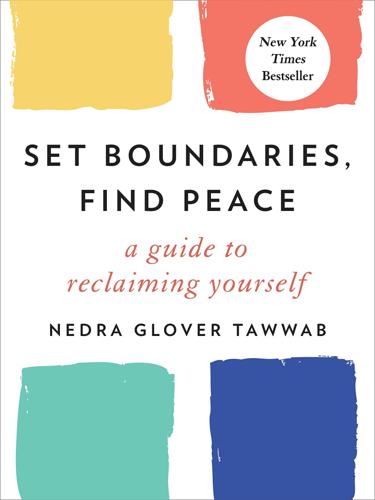
Set Boundaries, Find Peace: A Guide to Reclaiming Yourself
by
Nedra Glover Tawwab
Published 16 Mar 2021
Boundary issues at work look like Doing work for others Being asked about personal issues Taking on more than you can handle Not delegating Flirting Working without pay Not taking advantage of vacation days Saying yes to tasks you can’t responsibly complete Engaging in stressful interactions Working during downtime Doing jobs intended for more than one person Not taking needed time off Boundaries are not common sense; they’re taught. Sure, some people may be aware when they violate someone’s boundaries, but most likely, they don’t know. Boundaries are not common sense; they’re taught. In the workplace, they’re passed down by the HR department, the work culture, and the bosses. When people are in fear of losing their jobs, however, it’s hard to implement boundaries. * * * — In 2017, women began coming forward about sexual assault at the hands of the media giant Harvey Weinstein. He has allegedly assaulted at least eighty women, and for many years they didn’t come forward for fear of being blackballed in Hollywood.

McMindfulness: How Mindfulness Became the New Capitalist Spirituality
by
Ronald Purser
Published 8 Jul 2019
Gelles makes a bold claim: “Stress isn’t something imposed on us. It’s something we impose on ourselves.”9 Really? Failure to cope is often blamed on a dysfunction in one’s neural pathways or troublesome thoughts and emotions. His colleagues at the New York Times would beg to differ. In an exposé of Amazon’s sociopathic work culture, the newspaper quoted a former employee as saying that he saw nearly everyone he worked with cry at their desks.10 Would Gelles have offered his advice to these Amazon workers, telling them that they were imposing stress on themselves, or that they could have chosen not to cry — and that their lack of emotional self-control could be attributed to being hijacked by their amygdala?
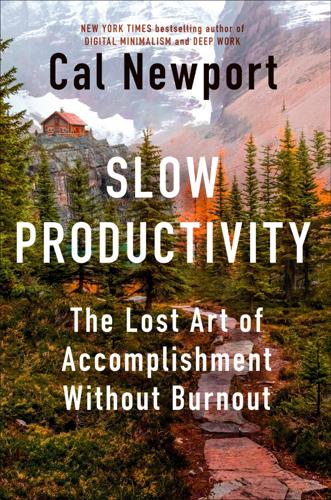
Slow Productivity: The Lost Art of Accomplishment Without Burnout
by
Cal Newport
Published 5 Mar 2024
It’s not just because overload is exhausting and unsustainable and a miserable way to exist—though it certainly is—but because doing fewer things makes us better at our jobs; not only psychologically, but also economically and creatively. Focusing intensely on a small number of tasks, waiting to finish each before bringing on something new, is objectively a much better way to use our brains to produce valuable output. But are such sparser workloads even possible anymore? So much of knowledge work culture seems built around juggling more and more work, with more and more “efficiency,” that the idea of doing fewer things, even if logical in the abstract, seems an impossible goal to pursue in practice. Before we begin exploring specific strategies for implementing this principle, in other words, we must first convince ourselves that it’s an approach that the modern workplace will even allow

The Soul of Wealth
by
Daniel Crosby
Published 19 Sep 2024
Want to totally lose your rapport with the younger crowd at the office? Go ahead and use that phrase when requesting a trip to the copy machine. The once-innovative technology company still holds a special nostalgic place in the hearts of the 50 and up group in corporate America, but ‘Xerox’ is no longer a verb. Back in the 1970s work culture, Xerox was among the most pioneering tech outfits around. It revolutionized the way modern offices at that time operated, through its leading copiers and printers. The Palo Alto Research Center (PARC), where Xerox originated, also developed other groundbreaking inventions such as the graphical user interface (GUI), the mouse, and the Ethernet.

Deep Time Reckoning: How Future Thinking Can Help Earth Now
by
Vincent Ialenti
Published 22 Sep 2020
Instead, they challenge us to ask: How can today’s societies better support the highly trained, prolific deep time reckoning experts already in our midst? Can existing deep time reckoning experts, the organizations that employ them, and the infrastructures, colleagues, and administrators working alongside them adopt new policies, programs, or working culture norms to foster long-termism? How can organizations with long-term impacts—from plastics manufacturers to chemicals companies to the fossil fuel industry to the financial services sector—reform their attitudes toward time? Future changes in lay and expert cultures alike are needed to avert planetary collapse.
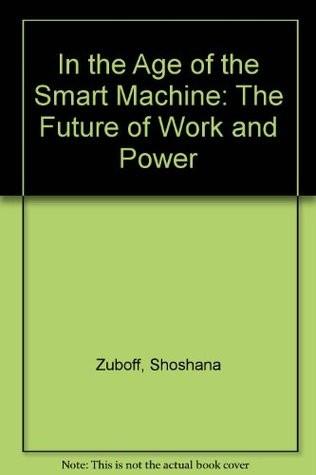
In the Age of the Smart Machine
by
Shoshana Zuboff
Published 14 Apr 1988
Sebastion DeGrazia, Of Time, Work and Leisure (New York: The Twentieth Century Fund, 1962), 197. 20. Pollard, Genesis of Modern Management, 161. 21. Ibid., 182. 22. Douglas Reid, liThe Decline of Saint Monday 1766-1876," Past and Present 71 (1976): 79. 23. Ibid., 78. 24. Ibid., 80. 25.Ibid. 26. Pollard, Genesis of Modern Management, 182. 27. Herbert Gutman, Work, Culture, and Society in Industrializing America: Essays in American Working-Class and Social History (New York: Alfred A. Knopf, 1976), 20. 28. Ibid. 29. Ibid., 38. 30. Pollard, Genesis of Modern Management, 189. Sidney Pollard has classified these measures in three categories: the negative sanctions for particular behav- iors, the positive inducements toward particular behaviors, and the general effort to create a "new ethos of work order and obedience."
…
By bidding the people to seek success as they did themselves, the employers manifested their abiding belief in the existence of a moral community regardless of class, for they proposed to measure the worth of each man by the same standard" (Reinhard Bendix, Work and Authority in Industry [Berkeley: Uni- versity of California Press, 1974], 115). 6. Daniel Rodgers, The Work Ethic in Industrial America: 1850-1920 (Chicago: University of Chicago Press, 1978), 9-10. 7. Sidney Pollard, The Genesis of Modern Management (Cambridge: Harvard Uni- versity Press, 1965) 123-26. 8. Rodgers, Work Ethic, 21; Herbert Gutman, Work, Culture, and Society in Indus- trializing America: Essays in American Working Class and Social History (New York: AlfredA. Knopf, 1976),20,37,58. 9. See the discussion in Frank W. Fox, liThe Genesis of American Technology 1790-1860," American Studies 17 (Fall 1976): 29-48. 10. Pollard, Genesis of Modern Management, 107-118.

The New Ruthless Economy: Work & Power in the Digital Age
by
Simon Head
Published 14 Aug 2003
He had fought hard for Brown but had failed to get her reinstated. I spoke to Brown soon after her dismissal. She was distraught at her treatment by AT&T, and has not worked since. There is substantial research showing that these examples of the harshness of working life at call centers are not isolated incidents but form part of a work culture characteristic of the industry as a whole. In 1999 the Radclyffe Group, business consultants whose clients have included CIGNA, Coca-Cola, and New York Life, undertook a survey of the call center industry and identified four factors that drove what it calls a "negative call center culture." With the detached, modular language of the business consultant, Radclyffe describes a work regime very similar to the one that RuthAnn Hogue and I came across in Arizona and Iowa.
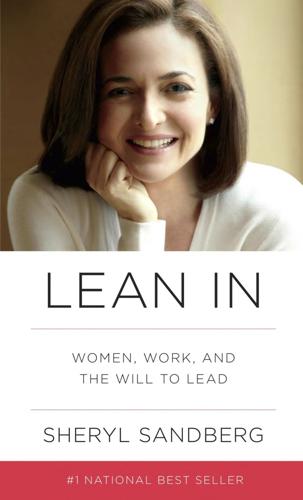
Lean In: Women, Work, and the Will to Lead
by
Sheryl Sandberg
Published 11 Mar 2013
Many women would have accepted it without even trying to carve out the time they needed for their families. Others would have turned it down, assuming that having dinner at home most nights was not negotiable. Being forthright led to opportunity. Every job will demand some sacrifice. The key is to avoid unnecessary sacrifice. This is especially hard since our work culture values complete dedication. We worry that even mentioning other priorities makes us less valuable employees. I have faced this too. As I described, once I had children, I changed my working hours to be home for dinner. But only fairly recently did I start talking about this change. And while the impact of my actually leaving work early was negligible, admitting that I went home at five thirty turned out to be kind of a big deal.
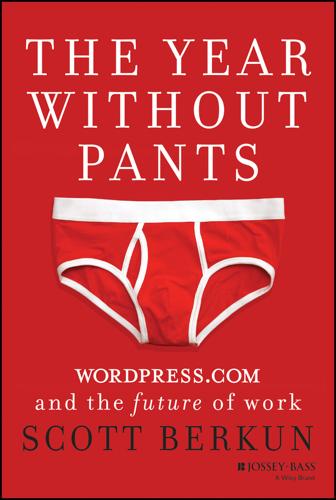
The Year Without Pants: Wordpress.com and the Future of Work
by
Scott Berkun
Published 9 Sep 2013
WordPress.com, where I'd work, was among the top fifteen most trafficked websites. Its success aside, its culture was unconventional. Employees were young and independent, and they worked from wherever in the world they wished. They rarely used e-mail, launched new work into the world every day, and had an open vacation policy. If a work culture qualified as being from the future, this was it. I told him I'd do it if I could write a book about my experience. He said yes, and here we are. This book has two ambitions: first, to share what I learned as an old dog in a futuristic workplace and, second, to capture the behind-the-scenes story of a good team at a fascinating company.

Humans as a Service: The Promise and Perils of Work in the Gig Economy
by
Jeremias Prassl
Published 7 May 2018
The platform economy, breathless futurologists assure us, is the future of work: with ‘freelancing [as] the new normal’,12 it will fundamentally reshape the organization of businesses, the economy, and our working lives. Not everyone agrees. Frank Kalman, editor of Talent Economy magazine, is ‘not buying it’.13 The gig economy, he argues, represents a tiny fraction of our labour markets, goes against the grain of corporate work culture, and imposes a host of hidden coordination and transaction costs on traditional businesses. In short, ‘gig work is likely to remain a small part of the overall labor force, both from an economic perspective and a cultural, performance and man- agement perspective’.14 How big, then, is the gig economy?

Scrum: The Art of Doing Twice the Work in Half the Time
by
Jeff Sutherland
and
Jj Sutherland
Published 29 Sep 2014
I’m sure you do too. If you don’t crow about it yourself, you know someone who does—the guy who does three projects at once, who drives and talks on his cell phone, who promotes his competence by complaining loudly about all the things he has to juggle every day. This sort of “busy-brag” is becoming part of our work culture. In job descriptions you now see requirements like “must be able to balance five projects simultaneously.” The ability to juggle seems so attractive—especially in an age in which information is flowing through a thousand different pipelines and “must do nows” are proliferating. We want to be that guy—the Super-Juggler.
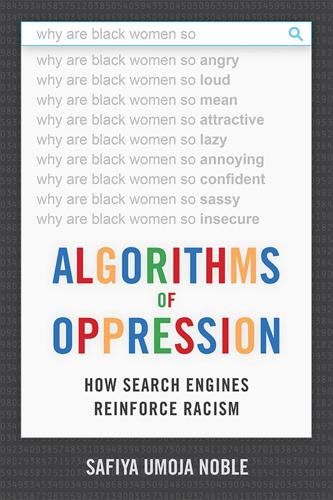
Algorithms of Oppression: How Search Engines Reinforce Racism
by
Safiya Umoja Noble
Published 8 Jan 2018
I do this by illuminating the case of Black girls, but undoubtedly, much could be written about the specific histories and contexts of these various identities of women and girls of color; and indeed, there is much still to question and advocate for around the commercialization of identity in search. In order to fully interrogate this persistent phenomenon, a lesson on race and racialization is in order, as these processes are structured into every aspect of American work, culture, and knowledge production. To understand representations of race and gender in new media, it is necessary to draw on research about how race is constituted as a social, economic, and political hierarchy based on racial categories, how people are racialized, how this can shift over time without much disruption to the hierarchical order, and how White American identity functions as an invisible “norm” or “nothingness” on which all others are made aberrant.

Do Nothing: How to Break Away From Overworking, Overdoing, and Underliving
by
Celeste Headlee
Published 10 Mar 2020
Even my doctor commented on the drop in my cortisol levels. I am less anxious than I was a year ago, and no less productive. On a personal level, the research has been useful and the experiment successful. But in the end, this isn’t really about me. It wasn’t my choices, ultimately, that overloaded my schedule. It was the hard-work culture that made me believe I was lazy if I stopped working for even short periods of time. So the solution cannot come from my choices but from a collective choice to change the paradigm. There is one aspect of early human history I hope we can reclaim: a celebration of what is most human about us.
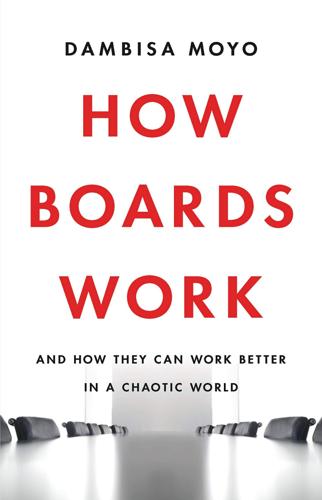
How Boards Work: And How They Can Work Better in a Chaotic World
by
Dambisa Moyo
Published 3 May 2021
Michael Moritz, the former managing partner of Sequoia, a leading venture capital firm in Silicon Valley, has penned a number of spirited articles highlighting the risk that the US technology sector will become less competitive than China’s. In an article titled “Silicon Valley Would Be Wise to Follow China’s Lead,” Moritz argued that differences in attitudes about work-life balance between US and Chinese companies place the former at a distinct disadvantage. The Chinese work culture in tech start-ups, which can involve putting in fourteen-hour days six or seven days a week, stands in stark contrast to California’s tech scene, where companies juggle parental leave demands and workers prioritize the need for greater work-life balance. The grueling schedule adopted by Chinese companies is known by the shorthand “996”—that is, 9:00 a.m. to 9:00 p.m., six days a week.
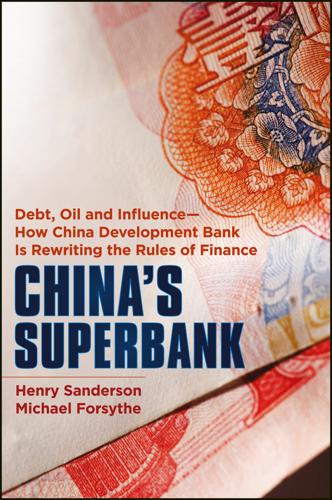
China's Superbank
by
Henry Sanderson
and
Michael Forsythe
Published 26 Sep 2012
“The government needs to leverage the investment for local development,” he said. Problems also lie in the different expectations of working hours, something Gamora mentioned during a 2011 meeting with the Chinese vice minister of commerce on his visit to the country. Chinese law favors the employer but Ethiopian law favors the employee, he said. “The Chinese working culture is very hard, working all day and all night—that is based on terms of culture, not skills,” he said. The Chinese manufacturing zones will be successful, as Brautigam points out, if they attract significant local and foreign investment, create African employment, promote exports, and elevate industrial competitiveness in an environmentally and socially sustainable manner.

Tomorrow's Capitalist: My Search for the Soul of Business
by
Alan Murray
Published 15 Dec 2022
Calls for workplace flexibility—which used to be called flextime—have been out there for decades, usually framed around family needs and work-life balance. However, in recent years, with the competitive demands of a fast-paced global economy, there has been less talk of flextime. In many industries, like tech and finance, workers have been afraid of requesting flextime for fear of looking lax. Many work cultures prided themselves on burning the midnight oil. However, because of the pandemic a widespread interest in flextime has emerged, based on the actual experience people have had working from home. The old stigma that being at home meant slacking off has all but disappeared, especially among knowledge workers.
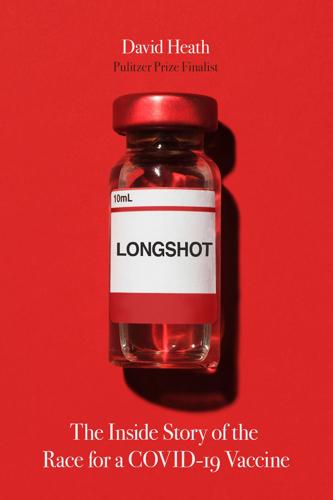
Longshot
by
David Heath
Published 18 Jan 2022
He forces the company to put his name on the patent.” Employees left scathing anonymous reviews of Moderna on the job website Glassdoor in the company’s first three or four years. In review after review, the employees would give the company one star out of five overall. The categories included work/life balance, work culture, and senior management. The comments were consistent. “The workloads are outrageous,” said one from October 2012. “Bad science practices, blame and finger pointing abound.” “This place is a disaster,” said another from the same month. “The CEO and CSO [chief scientific officer] have no respect for the employees.

Why Your World Is About to Get a Whole Lot Smaller: Oil and the End of Globalization
by
Jeff Rubin
Published 19 May 2009
Hence, the service sector’s share of employment, just like its share of GDP, may start to fall and in the process begin to reverse what had been previously thought to be an irreversible trend in our economy. This transition will not be a lay-up. The infrastructure, the technology, the training, even the work culture will have to undergo a massive overhaul to be anywhere near ready for a local economy. Many people who have not seen a lunch box since middle school, or who haven’t had a callous on their hands since the time they tried to build their own backyard fence, may soon become reacquainted with both.

Writing Effective Use Cases
by
Alistair Cockburn
Published 30 Sep 2000
Countervailing Forces: Business Setting, Social Interaction, Conflicting Cultures You want to introduce use cases, but run into the following situation / argument (I won't try to fix the argument, but you may enjoy recognizing you are not alone!): "We've always done it this other way..." With multiple cultures: 130 Chapter 11. Use Case Formats Page 131 - Forces affecting Use Case Writing Styles There is prejudice across teams, There are different work cultures, and people there simply "do things differently", The people writing the use cases use a different vocabulary than the people who will read the use cases. Level of Understanding Understanding is different at different times and places and among different people. You might choose to shift the recommended writing style due to: How much you know now ... ... about the domain .. about use cases in general Where in life cycle do you know it?

What's Mine Is Yours: How Collaborative Consumption Is Changing the Way We Live
by
Rachel Botsman
and
Roo Rogers
Published 2 Jan 2010
He had just left a tech start-up to work for himself. Neuberg enjoyed working from home, yet the experience was also isolating. He tried the de facto techie office, a coffee shop, but found it too noisy and distracting and devoid of meaningful interactions. Despite his complaints about the monotony and conformity of the nine-to-five cube-working culture, Neuberg discovered that he missed the social camaraderie of an office. To his surprise, watercooler conversations served a purpose. “It seemed I could either have a job that would give me structure and community,” he recalls, “or I could be freelance and have freedom and independence. Why couldn’t I have both?”

The Internet Is Not the Answer
by
Andrew Keen
Published 5 Jan 2015
Nonunionized Amazon workers in Pennsylvania, for example, have been subjected to such high warehouse temperatures that the company has ambulances permanently parked outside the facility ready to speed overheated workers to the emergency ward.50 In its Kentucky delivery center, Amazon’s hyperefficient work culture has created what one former manager described as the “huge problems” of permanently injured workers.51 In Germany, Amazon’s second-largest market, 1,300 workers organized a series of strikes in 2013 over pay and working conditions as well as to protest a security firm hired to police the company’s distribution centers.52 In Britain, a 2013 BBC undercover investigation into an Amazon warehouse revealed disturbingly harsh working conditions that one stress expert warned could lead to “mental and physical illness” for workers.53 But I don’t suppose the libertarian venture capitalists care much about the many casualties of this war of the one percent—such as Pam Wetherington, a middle-aged woman at Amazon’s Kentucky operation who suffered stress fractures in both feet through walking for miles on the warehouse’s concrete floor, yet received no compensation from Bezos’s company when she could no longer work.54 Or Jennifer Owen, a ten-year veteran employee at the Kentucky warehouse who was summarily fired after returning to work from an Amazon-approved medical leave after a car accident.55 While Amazon is a nightmare for nonunionized workers like Wetherington and Owen, it has been a financial dream for investors like Tom Perkins’s KPCB, whose original $6 million investment would, by 2014, be worth around $20 billion.
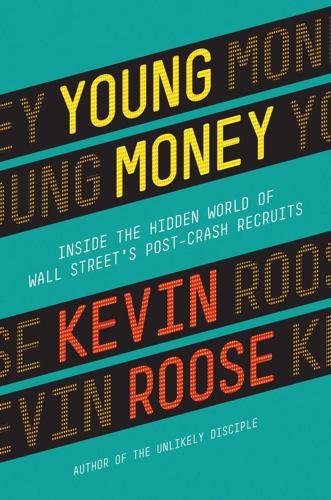
Young Money: Inside the Hidden World of Wall Street's Post-Crash Recruits
by
Kevin Roose
Published 18 Feb 2014
“U.S. banks made $141.3 billion in net income in 2012, according to the FDIC, their best year since 2006”: Jesse Hamilton, “U.S. Banks Had Second-Best Earnings Ever in 2012, FDIC Says,” Bloomberg News, February 26, 2013. “In the summer of 2013, a twenty-one-year-old summer intern in Bank of America Merrill Lynch’s London office dropped dead”: Shiv Malik and Ben Quinn, “Bank of America Intern’s Death Puts Banks’ Working Culture in Spotlight,” The Guardian, August 20, 2013. “Marina Keegan, the Yale senior who provided me with a glimpse into the campus recruiting culture after Occupy Wall Street, was killed in a car crash”: Marina’s obituary was written by William Alden and published in the New York Times on May 29, 2012.

Blitzscaling: The Lightning-Fast Path to Building Massively Valuable Companies
by
Reid Hoffman
and
Chris Yeh
Published 14 Apr 2018
In many cases, this leads to teams that are heavy on young, Caucasian men who went to a short list of elite colleges, which hinders the organization’s ability to innovate or serve a broader market. But even without such problematic practices, hiring for “fit” should not mean asking, “Do you fit into this box?” For example, many start-ups have a work culture where employees come to the office after 10 a.m., work late, and spend evenings socializing together at bars. In other words, an extended version of college! If your start-up has such a culture, you might avoid hiring employees who want to come in early and leave before 6 p.m., or who rarely socialize or go out at night.

Speed
by
Bob Gilliland
and
Keith Dunnavant
J., 214 skiing, 82, 108, 173 Skliar, Bill, 130 Skunk Works (Lockheed Advanced Development Projects): and A-1 Blackbird, 143; and A-11 Blackbird, 133; and A-12 Blackbird, 124–31; creation of, 99; and debriefings following test flights, 163, 177–78; efficiency of, 100–101, 102, 116–17, 141–42; engineering challenges faced by, 137–39; Gene Reynolds’s career at, 113, 160; independence of, 99; jet-powered aircraft developed by, 99–109; Kelly Johnson retiring from, 200; Lou Schalk’s career at, 70, 103, 111–12, 126, 128, 132, 149, 161; and Project Suntan, 142; RJG as test pilot at, 1–2, 119–22, 124, 127–31, 136, 149–53; RJG joining, 111–15; secrecy of work at, 99, 111–12, 119–22, 131, 134, 135–36; security at, 115, 185–86; technological innovations and designs of, 102–3, 140–51; test pilots of, 101–2, 111–12, 126–31; Tony LeVier’s career at, 101–2, 112, 114, 117, 171; and U-2 program, 116–18; work culture at, 99–100; and XP-80 development, 100. See also A-12 “Archangel” Blackbird (Lockheed); SR-71 Blackbird (Lockheed) Smith, H. R., 183–84 Smithsonian Institution, 209–10 Smoke Hall (Bancroft Hall, Naval Academy), 48 Society of Experimental Test Pilots (SETP), 131–32, 213 Solomon, Ken, 67–68, 73 sound barrier, 76, 84–88, 201, 218 Soviet Union: aerial reconnaissance of, 115–19, 131; and arms race, 133–35; and atomic bomb testing, 66, 115; during the Berlin Airlift, 55–56; during the Cold War, 66–67, 75–76, 121, 205–6; and ending of U.S. reconnaissance overflights, 125, 131, 190, 204–5; during the Korean War, 78–79; missile capabilities of, 135; in the space race, 122–23; SR-71 missions near, 205–6; submarines of, 205–6, 207; and sweptwing aircraft design, 76, 92; threats posed by, 55–56, 63, 66–67, 75–76, 121; titanium from, 144–45; and U-2 incident, 118; during World War I, 3 Sputnik, 122 SR-71 Blackbird (Lockheed): acronym changes of, 135–36; air-conditioning system of, 146; and black paint innovation, 145–46; camera and sensor systems of, 152, 181–82, 205, 207; and center of gravity problem, 166, 178–80, 181, 186; chemical ignition system of, 150; cockpit design of, 151; and competition against RJG’s F-104, 175–76; crashes of, 180–81, 182–86; cruise speed of, 147–48, 152; dangers and risks facing test pilots of, 1–2, 149–50, 166, 178–80; and deaths, 180–86; debriefings following test flights of, 163, 177–78; declassification of, 203; design modifications and features of, 151–52; ejection system of, 151, 162, 178–79; ending of testing program and development of, 200; enduring legacy of, 210–11, 216–17, 227–28; and engine design innovations, 147–50; engineering challenges in design of, 137, 143–51, 156, 181–82, 186; evasive capabilities of, 152, 192, 204; fictional portrayals of, 211; first test flight of, 152–53, 155–56, 160–71, 228; fuel blend of, 150; heat-related challenges of, 143–50; impact of U-2 incident on, 190, 204–5; inlet system of, 143–45, 147–50, 182, 183, 186; Kelly Johnson’s legacy in, 135, 142, 151; limited operational theater of, 204–5; Lyndon Johnson unmasking of, 135–36, 145, 206; missiles fired at, 191–92, 204, 208; and mission following Libyan airstrike, 208; and missions during the Cold War, 202–7; and missions targeting Soviet submarines, 205–6, 207; museums housing, 209–11, 227; nicknames of, 191; operational rollout of, 189–90; public fascination with, 146, 202–4, 206–7, 210–11, 227–28; radar system of, 181–82; reconnaissance features of, 152, 181–82, 205–6, 207; refueling of, 177, 192; RJG as chief test pilot of, 1–2, 136, 176–80, 226; and RJG’s joke on Toof Brown, 187–89; and RJG’s legacy, 208, 211–12, 231; secrecy of, 135–36, 170, 171–72, 177, 187–89, 195, 202, 203–4, 206; shape of, 146; speed records in, 207, 209; stealth technology design elements of, 146, 205, 211; taxi test of, 155, 163; technological innovations of, 143–51, 181–82, 227; testing program of, 149–50, 176–86; test pilot team of, 180; titanium used in, 143–45; twenty-fifth anniversary flight of, 208–9; unstarts of, 150, 178–79; U.S.
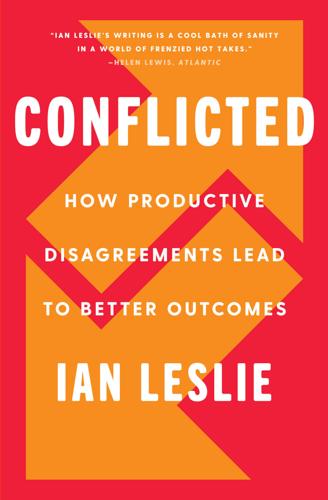
Conflicted: How Productive Disagreements Lead to Better Outcomes
by
Ian Leslie
Published 23 Feb 2021
For instance, when study respondents are presented with a diagram showing a scarf, a glove and a hand, and are asked to pick the two most closely related objects, Westerners tend to pick the scarf and glove, because both are pieces of winter clothing, while East Asians are more likely to pick the hand and glove, because of their close relationship to one another. Inspired by Henrich’s work, cultural psychologist Thomas Talhelm ran tests like this with groups of American conservatives and liberals. He found that liberals and conservatives think as though they are from completely different cultures – ‘almost as different as East and West’. Liberals are more WEIRD than conservatives: more analytical, readier to think in abstractions.

Super Founders: What Data Reveals About Billion-Dollar Startups
by
Ali Tamaseb
Published 14 Sep 2021
Move to Silicon Valley if it has the best talent for your type of company and if you can hire well there, but don’t limit your options: stay in a location or relocate to one where you would have an unfair advantage in either hiring great talent or striking partnerships. And, of course, some startups have opted to go fully distributed, and that can certainly work too. Given the expense of living and operating a business in Silicon Valley, recent shifts in remote work culture and distributed teams, and evolving startup ecosystems in other metros, more billion-dollar companies will likely be started outside Silicon Valley or as fully distributed in the next decade or so. Companies like Facebook, Twitter, Square, and Shopify now allow remote work, which will slowly but surely distribute senior talent outside Silicon Valley, accelerating this impact.

Monolith to Microservices: Evolutionary Patterns to Transform Your Monolith
by
Sam Newman
Published 14 Nov 2019
It’s Not One Size Fits All We started this chapter by discussing how your decision about whether to use microservices should be rooted in the challenges you are facing, and the changes you want to bring about. Making changes in your organizational structure is just as important. Understanding if and how your organization needs to change needs to be based on your context, your working culture, and your people. This is why just copying other people’s organizational design can be especially dangerous. Earlier, we touched very briefly on the Spotify model. Interest grew in how Spotify organized itself in the well-known 2012 paper “Scaling Agile @ Spotify” by Henrik Kniberg and Anders Ivarsson.

Road to Nowhere: What Silicon Valley Gets Wrong About the Future of Transportation
by
Paris Marx
Published 4 Jul 2022
After it was founded in 1993, the magazine engaged in “a cycle of mutual legitimation” with the ascendant Christian right wing, placing figures such as Newt Gingrich and anti-evolution telecommunications analyst George Gilder on its cover.26 As it declared Gingrich a “wired” politician, it also helped to legitimize calls for tax cuts, deregulation, and an embrace of a more “flexible” work culture, while imbuing the so-called “New Right” of the Republican Party with the countercultural ethos. As deindustrialization and globalization sent more jobs overseas, the push for project-based work that was in line with the long-standing libertarian opposition to the hierarchal corporate management structure continued.
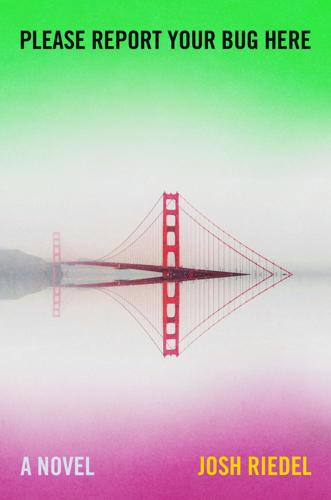
Please Report Your Bug Here: A Novel
by
Josh Riedel
Published 17 Jan 2023
I asked her my toughest content-policy questions, and she provided answers much more in-depth than the previous candidates. She was even familiar with the customer-support management system we used. At the end of the interview, I asked what questions she had for me, expecting the usual ones about benefits and pay and work culture. Instead, she asked me why I was working for DateDate. “You said you were an art history major?” I described the thrill of seeing a stranger on BART using DateDate. “An app we run out of this tiny office is changing the way people fall in love,” I said. “How can you not aspire to build that future?”

Jared Bibler
by
Iceland's Secret The Untold Story of the World's Biggest Con-Harriman House (2021)
This attitude surprised me when I moved to Iceland, after the more collaborative environments I was used to in the United States. But another strange feature of this attitude is that in general Icelanders do not view responsibility as accruing to the management, as I learned in my lunchtime conversation with the FME lawyers. In Icelandic work culture, the fact of a manager asking a direct report to do something is often taken as enough. The more senior the manager, the more imperative it is to follow his exact instructions, even if those instructions go against the best interests of the organization. Contrast this with Wall Street culture, which (say what you will about its overall ethics) at least is not anymore a place where senior management can command junior personnel to send cash offshore, no questions asked.

Uncomfortably Off: Why the Top 10% of Earners Should Care About Inequality
by
Marcos González Hernando
and
Gerry Mitchell
Published 23 May 2023
Christopher, an IT consultant with a top 3% income, when asked about his social/civic behaviour, replies: “As soon as we settle down – we’re quite nomadic at the moment – I would like to do something handson, something that makes a large societal shift and helps lots of people.” Others spoke of a working culture, particularly in large private corporations, that made it more difficult to develop connections with their community as less value was placed on activities such as volunteering. We also asked our respondents whether they thought the private sector had any responsibility for reducing inequality.

Who Will Defend Europe?: An Awakened Russia and a Sleeping Continent
by
Keir Giles
Published 24 Oct 2024
Critics say that this reflected a norm of complacency, during a time when the threat and the actions taken to meet it were supposed to be much further away than Europe’s doorstep. Driven by the absence of any sense of urgency, procedure and paperwork seemed at times to be the organisation’s primary outputs. NATO insiders time and again described a working culture dominated by the process, rather than the result, and the proliferation of highly-paid sinecures in a self-sustaining bureaucracy. A defining feature of NATO headquarters and institutions was the relaxed working hours, also reflecting a difference in cultures as well as in threat perception across the various countries that make up the alliance.
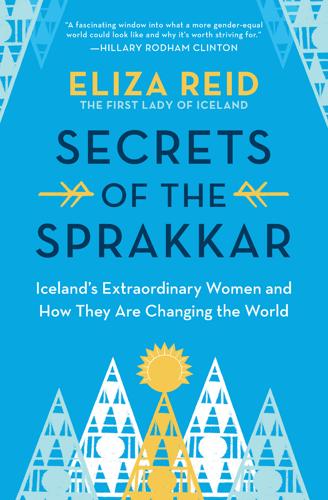
Secrets of the Sprakkar
by
Eliza Reid
Published 15 Jul 2021
Perhaps this is why I take so much pleasure in talking about the benefits of entrepreneurship in Iceland when I deliver speeches abroad as First Lady. I know from personal experience the joys and challenges of creating something new and what Icelandic society offers to help that process along. This is so ingrained now in our working culture that the challenge of balancing family and work life was not a prominent factor for Ragnhildur, Gudbjörg, and Fida—all of them mothers—when it came to evening the playing field in the corporate world. Two of Ragnhildur’s three preteen children have special needs and require additional care. Single mother Gudbjörg became a parent for the second time thanks to an anonymous sperm donor; she was not willing to wait around to find the perfect man to help her make her dreams come true.

The Manager’s Path
by
Camille Fournier
Published 7 Mar 2017
If you have a value of “happiness and positivity is a choice,” the teammate who pooh-poohs every idea and criticizes everything is going to have problems fitting in. Sometimes, people will change to adopt the values. “Happiness and positivity is a choice” is actually one of the core values of Rent the Runway, and I would not say that I came from a work background of happiness. In fact, I came from a fairly professional and critical work culture. But I learned to appreciate the value of looking at things in a positive light. That doesn’t mean that I lost my critical eye, and it was never the easiest value for me to adopt completely, but it wasn’t a deal breaker. Using the core values to coach people in areas where they are misaligned can help you articulate what otherwise may feel like just ambiguous friction.
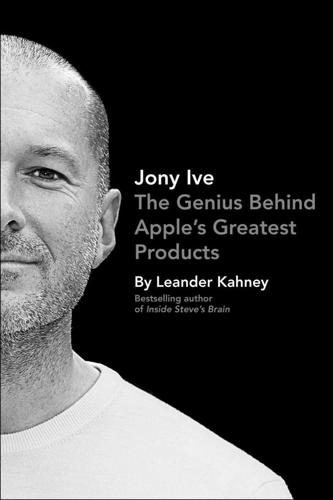
Jony Ive: The Genius Behind Apple's Greatest Products
by
Leander Kahney
Published 14 Nov 2013
We contacted more than two hundred people for this book, mostly current Apple staffers or those who had recently left the company. Some were willing to talk on the record, but many wanted to keep their names out of print. Apple did not respond to several requests for comment. Nonetheless, my research partners and I did get a number of people to talk, on and off the record, about Apple, Jony Ive and their unique work culture. Notably, we got some major players, including some who have worked closely with Jony for decades. They took us inside the studio and inside the minds behind Apple, in an unprecedented manner. The information they provided, and the details they were able to reveal about the company over many years, were immeasurably useful.
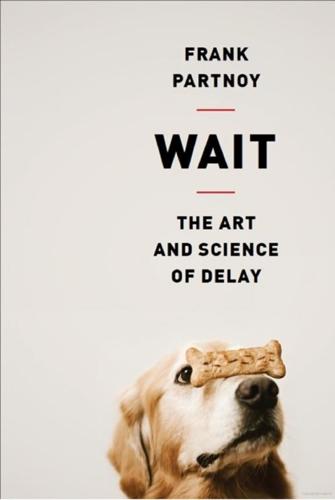
Wait: The Art and Science of Delay
by
Frank Partnoy
Published 15 Jan 2012
Management that is destructively critical when mistakes are made kills initiative. And it’s essential that we have many people with initiative if we are to continue to grow.19 The McKnight Principles were a truly radical policy to implement just after World War II, when most companies had a rigid nine-to-five work culture and managers were mostly men wearing blue suits and crisp white shirts. McKnight stepped aside as chairman of the company’s board in 1966, the same year Spence Silver joined the firm. But the culture he created lived on, shaping the firm.20 Fry and Silver were good people, with initiative. Their bosses had faith in them and gave them lots of responsibility.

The Connected Company
by
Dave Gray
and
Thomas Vander Wal
Published 2 Dec 2014
The important thing is that the values and rules are understood and the behavior is consistent with them. If the culture says everyone is equal, then the CEO better not have a reserved parking spot. Culture is built by establishing behaviors that the whole organization can and will adhere to consistently. For a podular system to work, cultural and technical standards are imperative. This means that a pod’s autonomy cannot extend to everything. Shared standards and protocols lose their value if they are not, well, shared. This kind of system needs a strong backbone that clearly articulates those standards and provides a way to evolve them when necessary.

Frugal Innovation: How to Do Better With Less
by
Jaideep Prabhu Navi Radjou
Published 15 Feb 2015
GE Ventures’ portfolio includes Rock Health (an accelerator of digital health-care start-ups), Stem (whose intelligent battery storage can reduce peak energy charges by 20%) and Mocana (a provider of embedded security systems for the industrial internet). Partnering with these start-ups not only gives GE access to disruptive technologies, but also creates a disruptive working culture. Comstock notes: Working with impatient 20-something entrepreneurs in T-shirts creates friction and tension within GE’s buttoned-up corporate culture. But it’s also energising. Start-ups’ enthusiasm is contagious. GE is also organising open innovation challenges, hosted on crowdsourcing platform NineSigma, inviting inventive minds worldwide to create affordable and sustainable solutions in its core health-care, energy and aviation businesses.

Barometer of Fear: An Insider's Account of Rogue Trading and the Greatest Banking Scandal in History
by
Alexis Stenfors
Published 14 May 2017
The incident and the background to it had already been erased from history, leaving behind many more questions than answers. But it added to the trading room folklore. However, it was not the extracurricular activities of certain traders that made me doubt that LIBOR was going to be a one-off scandal. It was activities within the working culture itself. Six months after the first batch of FX fines, Bank of America, Barclays, Citigroup, JPMorgan Chase, RBS and UBS were fined $5.6 billion for engaging in collusive practices in the same markets. According to the FBI, the activity involved criminality ‘on a massive scale’.3 Very few have since stepped forward to try to defend the behaviour leading up to the fines, which, when revealed to a wider public not familiar with FX trading ‘activities’, gave banks and traders even more of a headache.
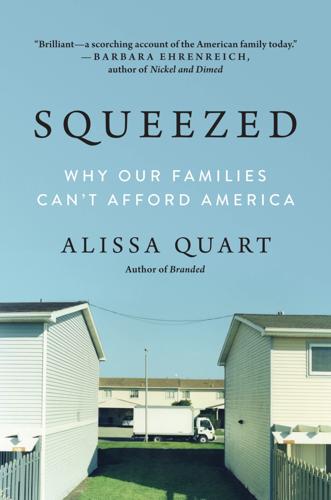
Squeezed: Why Our Families Can't Afford America
by
Alissa Quart
Published 25 Jun 2018
A finance worker originally from Hong Kong, with a young son, asked the navigators how to present herself. “Don’t let silence in an interview intimidate you,” said a navigator. “When you go in, talk for ninety seconds or two minutes to start with about yourself, no more.” “Admit you don’t know the work culture at the company.” “Can I lie about my age?” called out one woman, giggling. “You can’t hide that!” a navigator, clad in a long-sleeved dress covered with large pink tea roses, replied. Then three navigators explained, in chorus, how easily any job applicant might get caught out falsifying their age—there are now digital records of all individuals, as we live in a surveillance society enamored with coded archives.
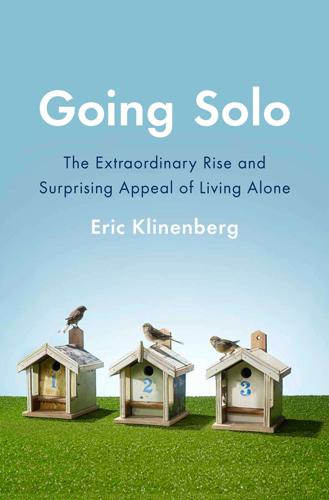
Going Solo: The Extraordinary Rise and Surprising Appeal of Living Alone
by
Eric Klinenberg
Published 1 Jan 2012
“But I sought out much younger women who were not interested in the answer to the dreaded five-word question: ‘Where is this relationship going?’ I wanted to be open to meeting the right woman. But I was also avoiding it because I prioritized my career and spent my social time with coworkers. I thought I’d have time for marriage and kids later on.” Mark is not the only one who has adapted to the 24/7 work culture by making the office the hub of his social life. One attorney we interviewed says that, after two years of seventy-hour work weeks, his gay colleagues had become his primary peer group. And Justin, the journalist we met in chapter one, says that he doesn’t mind the long hours because “it’s a social environment, you know?
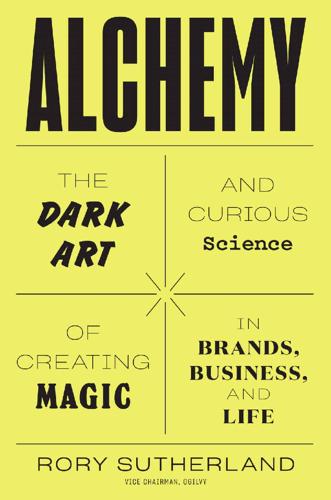
Alchemy: The Dark Art and Curious Science of Creating Magic in Brands, Business, and Life
by
Rory Sutherland
Published 6 May 2019
Take the case of an advertising agency pitching to potential clients. It’s common for clients at such pitches to be furnished with an ‘evaluation matrix’ or ‘scorecard’, designed to ensure the process is transparent and objective. The intention is that each agency’s presentation is marked on criteria such as quality of strategy, creative work, cultural fit, knowledge of sector and cost-competitiveness. The idea is that these things are scored independently and then totalled to determine the winning agency but if you ask anybody who’s been involved in this procedure, they will often admit that they simply decided which agency they wanted to win and back-filled all the numbers accordingly.

No Rules Rules: Netflix and the Culture of Reinvention
by
Reed Hastings
and
Erin Meyer
Published 7 Sep 2020
Jack, a manager in Springfield, Missouri, successfully revives a remanufacturing plant once owned by International Harvester. The plant is about to be closed but he raises money and stages a leveraged buyout. Then, in an effort to motivate his workforce, he sets himself two goals: Create a work culture of financial transparency, making every aspect of the business visible to every employee. Invest a substantial amount of time and effort training every staff member how to read and understand, in detail, the weekly operating and financial reports. Jack teaches his workforce, from the top engineer to the lowest worker on the shop floor, to read the company’s financial reports.
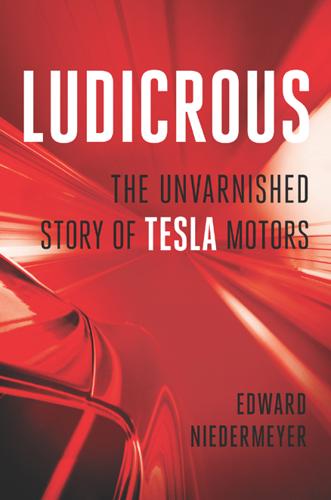
Ludicrous: The Unvarnished Story of Tesla Motors
by
Edward Niedermeyer
Published 14 Sep 2019
The scale and complexity of modern automobiles has made the car business the ultimate team sport, relegating all-powerful automotive auteurs to either tiny luxury-brand workshops or the history books. Tesla has a clear leader and it has a clear mission, but what it doesn’t have is what allows the best automakers to manage massive scale and complexity: clear cultural principles and practices. Tesla’s stated mission is profoundly motivating for many of its employees, and its work culture is correspondingly intense, but “accelerating the transition to sustainable transport” only explains the company’s ends, not its means—the why but not the how. As a result of this cultural vacuum, almost every decision that management makes at Tesla ends up coming down to a single consideration: Will Elon approve?

SEDATED: How Modern Capitalism Created Our Mental Health Crisis
by
James. Davies
Published 15 Nov 2021
As the British Psychological Society concluded: ‘The overall picture is one of burnout, low morale and worrying levels of stress and depression.’7 The report then quoted some typical declarations of unhappiness reported by IAPT staff: Being target-driven is the bane of our lives I am so disappointed, I have just resigned I carry my resignation letter in my diary now, as I feel that I’m on the verge of giving up the battle IAPT is a politically driven monster which does not cater for staff feedback/input in any way. All we are told is TARGETS!!! And work harder When you delve into this and other reports on the experience of working in IAPT services, a pattern begins to emerge regarding what is truly ailing its employees. We hear complaints about a working culture obsessed with form-filling, hitting targets and scoring high on outcome measures. We hear of staff under great pressure to get results in as few sessions as possible, and of distressed patients being discharged before the therapy is done. We hear of recovery being often poor or superficial, of staff having to manage cases beyond their expertise.
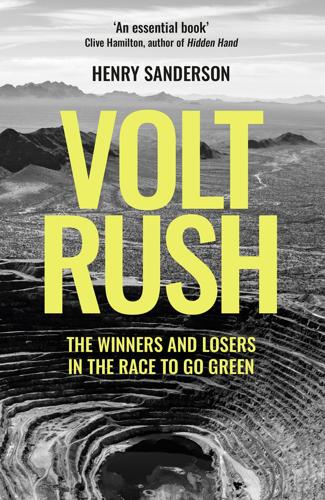
Volt Rush: The Winners and Losers in the Race to Go Green
by
Henry Sanderson
Published 12 Sep 2022
‘We are competing with gasoline cars,’ he said. ‘If we can’t win against gasoline cars, there’s no place for us in the market.’23 He ploughed money into R&D, spending more than his rivals. By 2019 CATL had over 2,000 patents in batteries and battery charging. CATL modelled itself on the hard-working culture and R&D focus of telecommunications giant Huawei, whose rise had led to growing political concerns in the US. Zeng knew that CATL could not always rely on Chinese subsidies for help. In an internal email in 2017 he referred to a Chinese allegorical saying: ‘the typhoon is coming, even the pigs can fly’, which suggested that with government support any company can do well.

The Highly Sensitive Person: How to Thrive When the World Overwhelms You
by
Elaine N. Aron
Published 1 Dec 2013
Or, more likely, we’ll swing back and forth between the two extremes or apply them in different areas of life (e.g., overdo at work, protect too much in intimate relationships; neglect mental health but overattend to physical health). Finally, you may have overcome all of this and be treating your body just fine. On the other hand, you who were securely attached may be wondering why you are struggling with these same two extremes. But our circumstances, culture, subculture or work culture, friends, and our own other traits can all also make us go too far either way. If you are unsure about which you do, review the box “Are You Too Out? Too In?” The Problem of Being In Too Much Some HSPs, perhaps all of us at times, get sidelined because of thinking that there is no way an HSP can be out in the world and survive.
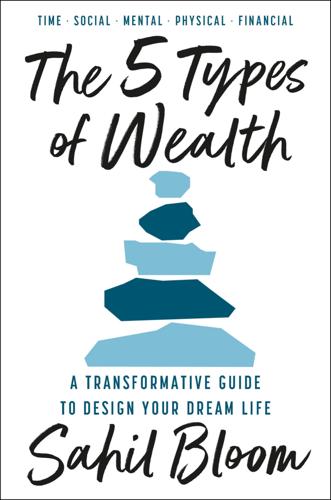
The 5 Types of Wealth: A Transformative Guide to Design Your Dream Life
by
Sahil Bloom
Published 4 Feb 2025
It always leaves me feeling healthy, happy, and creative. Implementation plan: Get outside and walk to start your day. Fifteen minutes is all you need. Leave your phone on silent (or leave it at home). Allow yourself to think freely and breathe. Morning Routine Principle 5: Focus Most people are not wired to work from nine to five. Modern work culture is a remnant of an earlier age—long periods of the same steady monotonous tasks. If your goal is to create, you must work like a lion. Sprint when inspired. Rest. Repeat. My application: I always start my day with two hours of focused work on the most important tasks. Implementation plan: Establish your most important tasks for the next day the night before.

Digital Dead End: Fighting for Social Justice in the Information Age
by
Virginia Eubanks
Published 1 Feb 2011
Surveillance and Security: Technological Politics and Power in Everyday Life. New York: Routledge. 250 References Morgen, Sandra. 1983. The Politics of “Feeling”: Beyond the Dialectic of Thought and Action. Women’s Studies 10:203–223. Morgen, Sandra. 1995. “It Was the Best of Times, It Was the Worst of Times”: Emotional Discourse in the Work Cultures of Feminist Health Clinics. In Feminist Organizations: Harvest of the New Women’s Movement, ed. Marx Ferree and Patricia Yancey Martin. Philadelphia: Temple University Press. Morgen, Sandra. 2002. Into Our Own Hands: The Women’s Health Movement in the United States, 1969–1990. New Brunswick, NJ: Rutgers University Press.

The Virgin Way: Everything I Know About Leadership
by
Richard Branson
Published 8 Sep 2014
Some of the interesting ideas we heard about were the Netflix initiative of unlimited vacation days, meditation classes to combat stress, sleeping pods for afternoon naps and truly flexible working hours and locations. All of these innovations could and should be replicated by businesses all over the world and there’s good reason to do so – it’s good for business. Today’s twenty-four-hour work culture means it’s more important than ever before to look after our people. Arianna Huffington has made ‘wellness’ integral to working life at the Huffington Post where she wants her team not just to succeed but also to thrive – so she’s introduced healthy snacks, mindfulness training and, with the introduction of the Virgin Pulse Wellness Programme, Huffington Post employees are now fitter and more productive than ever before.
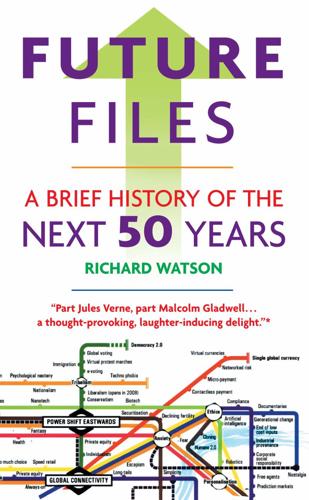
Future Files: A Brief History of the Next 50 Years
by
Richard Watson
Published 1 Jan 2008
Decisions will be made using prediction markets and innovation will be run using open or distributed innovation principles. Work/life balance Instead of working less and enjoying a leisure society, we are working more. We are also commuting for longer periods. Being busy is a modern mark of prestige. This will all change. The open-all-hours work culture will be challenged by parents seeking more time with their kids and there will be law suits and regulation concerning the social costs of long work hours. Companies will be forced to pay for ruined marriages, stress-related illnesses and dysfunctional children caused by a culture of endless work, unrealistic targets and disappearing evenings and weekends.

Work Less, Live More: The Way to Semi-Retirement
by
Robert Clyatt
Published 28 Sep 2007
Sources: Bureau of Labor Statistics, Economic Policy Institute, and American Management Association Why Work Seems Stale Before making the leap into semi-retirement, nearly every person steeled his or her personal resolve to do it by passing through a very low period—a place of being world-weary, sick of the stress and pace and compromises of the get-and-spend, live-for-work culture. Your work situation may still be pleasant and comfortable. However, if it is not, a candid look at the current state of the American working life may give you context for your feelings of dissatisfaction and help you see that leaving the rat race behind can be a mark of eminent good sense. chapter 1 | Figure Out Why You Want to Do This | 41 And in case you start feeling guilty or uncertain, realize that through history and across cultures, people have organized their lives in ways that look very much like semi-retirement.
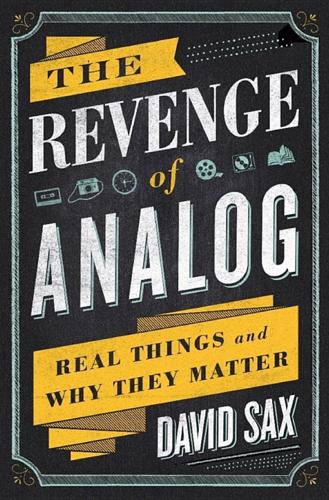
The Revenge of Analog: Real Things and Why They Matter
by
David Sax
Published 8 Nov 2016
“Others at the company said ‘We are a digital company and we communicate via digital means,’ Ben and I just got a bit antsy and wanted to make stuff,” Katigbak said. “Part of this was our frustration over an obsession with data and metrics. Early on it was an attempt to humanize the brand for an internal audience, and to humanize the user.” They began making signs for the workplace with slogans about Facebook’s hacker-derived work culture: “If It Works, It’s Obsolete,” “Is This a Technology Company?” “Move Fast and Break Shit,” and every possible variation on the word hack and its use in a phrase. Employees began noticing these signs hanging on cubicle walls and in hallways, and requested their own. Eventually, word got around to Mark Zuckerberg, who asked that the two produce hand-printed signs for Facebook’s annual app developer conference.

Bezonomics: How Amazon Is Changing Our Lives and What the World's Best Companies Are Learning From It
by
Brian Dumaine
Published 11 May 2020
See also Alexa Bezos and development of, 49, 111 goal of becoming part of people’s lives with, 14–15 Internet of Things and, 123–24 introduction of, 26 Prime Video use with, 26 shopping assistance with, 115–16 Amazon Flex, 23, 172–73 Amazon 4-star stores, 24, 167 AmazonFresh, 170–71, 189 Amazon Go stores, 13, 24, 111, 139–41, 143, 167 Amazonia (Marcus), 41 Amazon Lending, 13, 233–34 Amazon Music, 10, 26, 80, 97, 98, 100, 220, 260 Amazon Pay, 234 Amazon Prime, 93–105, 109 addictive nature of, 98–99 AI flywheel and, 94, 99, 102, 115 Alexa and, 115 all-you-can-eat aspect of shipping and services with, 99 Amazon ecosystem around, 94 Amazon’s income from, 154 Amazon’s sale of its own products and, 153 annual fee for, 14 Bezos’s focus on shortening delivery time by, 22 corporate synergy with other Amazon services, 98 cross-category spending in, 100 customer data from, 101 customer service and selection in, 104–5 decision to launch, 95–96 free delivery options from, 4, 10, 14, 22, 80, 98, 101, 154, 171, 186 free services with, 97, 101–2 free shipping debate over, 96–97 growth in number of members of, 94 health-care purchases and, 226 household percentage having, 15 merchant’s expenses for, 146 naming of, 96 number of shoppers in, 14 1-Click design and, 18, 98, 232–33 Prime Video and new members in, 102–3 shopping behavior change with, 98 spending by members of, 95, 100 as stand-alone business within Amazon, 97–98 streaming music service with, 26 streaming video service with, 25 Whole Foods discount with, 97, 101, 168, 260 Amazon Prime Air, 179 Amazon Prime Now, 22, 171 Amazon Restaurants food delivery business, 64 Amazon Robotics Challenge, 138 Amazon Studios, 101–2 Amazon Visa card, 234 Amazon Web Services (AWS), 51–52 Bezos’s creation of, 7, 218 Bezos’s long-term vision for, 63–64 medical records using, 225 Prime with free storage space on, 97 profitability of, 25, 64, 65 small business use of, 10–11 ambient computing, 111 American Civil Liberties Union (ACLU), 36 American Culture and Faith Institute, 240 Anderson, Chris, 18 Anderson, Joel, 186 Anderson, Sterling, 175 Andreessen, Marc, 248 Android operating system, 14, 64, 225 Android TV, 237 Ant Financial, 198, 234–35 antitrust law, 257–68, 271 academic arguments for breakup under, 258–59 Amazon lobbyists on, 247 congressional testimony on, 258 critics and proposed breakup of Amazon under, 255, 257–58, 261, 263–64, 266–67 Department of Justice review in, 257, 267 European investigations under, 259 evidence showing lack of violation of, 259–60 historical background to, 264–66 Apollo software platform, 176 Apple AI skills and customer knowledge of, 8, 114 brand value of, 16 corporate campus of, 75 economic power of, 265–66 global wealth gap and, 271 health-care innovation and, 90, 222, 225 identification with founder, 53 iOS operating system of, 225 iWatch from, 222 Jobs’s working culture at, 55 Siri voice assistant app from, 108 Apple Music, 26, 98 Apple Pay, 234, 235 Apple TV, 237 Arcadia Group, 223 Aronowitz, Nona Willis, 16–17 artificial intelligence (AI) Alexa and voice recognition and, 108–9, 111, 112–13 Amazon’s application of, 270 Amazon smart speakers and, 109–10 Bezonomics and companies’ adaptation to, 125 black box and, 91, 147 business plans driven by, 4, 6, 86, 125, 269–70 buying model and, 85–87 coining of term, 107 connected devices and, 124 disruptive nature of, 125 doctors’ diagnosis using, 27 early voice recognition and, 108 Echo’s use of, 26 expectations for future of, 112–13 flywheel model and, 5, 88.

100 Years of Identity Crisis: Culture War Over Socialisation
by
Frank Furedi
Published 6 Sep 2021
‘The fastest way to change a culture’, advises a commentator in Forbes.738 With the exception of references to aboriginal exoticised people, culture tends be a target of change rather than preservation. One of the by-products of the cultural turn was a redefinition of culture itself. It has become downgraded, rendered shallow and deprived of normative content. Phrases like a ‘culture of bullying’, ‘negative organisation culture’, ‘toxic work culture’ or a ‘canteen culture’ both trivialise and render culture meaningless. Typically, this usage of the term ‘culture’ serves as an invitation to changing it to, for example, a ‘culture of learning’ or an ‘inclusive workplace culture’. The acculturation of the anti-cultural and the spirit of the counter-culture are integral features of the contemporary zeitgeist.

Masters of Scale: Surprising Truths From the World's Most Successful Entrepreneurs
by
Reid Hoffman
,
June Cohen
and
Deron Triff
Published 14 Oct 2021
And yet, we’re all supposed to believe “that 90 percent of traders should be white men because they’re just better at it, and 86 percent of financial advisors should be white men because they’re just better at it. So it’s supposedly a meritocracy at work—oh, except for that financial crisis. Except for that.” Sallie is on the front lines of creating a diverse work culture, not only in terms of gender and race but also cognitive diversity. The idea is that you need differing perspectives that can inform each other and lead to deeper insight. Sallie’s strong belief in cognitive diversity is partly rooted in her experience working in one of the least cognitively diverse cultures there is.

Vanishing Frontiers: The Forces Driving Mexico and the United States Together
by
Andrew Selee
Published 4 Jun 2018
Most that have done so have flourished—and helped American communities along the way. Fernando Villanueva, who runs DeAcero’s US operations from Houston and once lived in southeastern Missouri overseeing the Poplar Bluff plant directly, has come to have a great appreciation for the professionalism of American workers. “There is a work culture here that is very deeply ingrained.” He loved his time in Missouri and came to respect the American colleagues he worked with day in and day out. But he also notes that in many ways, American industry seems to have become a bit complacent in the face of foreign competition. He believes that DeAcero brought from Mexico not only capital to invest and the ability to integrate operations across the border but also the drive to innovate and succeed in the global marketplace.

Winners Take All: The Elite Charade of Changing the World
by
Anand Giridharadas
Published 27 Aug 2018
Corporate types from the energy and financial industries were drafted into charitable projects to protect the world from climate change, even if their way of thinking about profit, as practiced in their day jobs, was a big part of why climate change was happening. Business leaders were drafted into strategizing for women’s rights, even if their tools were to blame for the always-on work culture that made it harder for so many women to claim their rights and for the tax avoidance that made women-friendly policies like universal daycare more elusive. And, as at the Soros event, they were viewed as essential to increasing equality, even if their analytical frameworks and their atomizing of the realities of workers and communities had helped to increase inequality.

The Truth Machine: The Blockchain and the Future of Everything
by
Paul Vigna
and
Michael J. Casey
Published 27 Feb 2018
Even government bond traders march to the drum of delayed, audited releases of financial information, in their case economic indicators on estimates of inflation, unemployment, and GDP growth. What happens to this industry when all financial and economic data is being updated, automatically and indisputably in real time? What happens to the people who lose their jobs? What happens to the work culture? If the future foreseen by this book comes to pass, we’ll witness the biggest employment shakeup the world has ever seen. And this time, the most vulnerable jobs are not the usual suspects: the factory workers, the low-level clerks, or the retail store assistants. Now it’s the accountants, the bankers, the portfolio managers, the insurers, the title officers, the escrow agents, and the trustees—and, yes, even the lawyers.
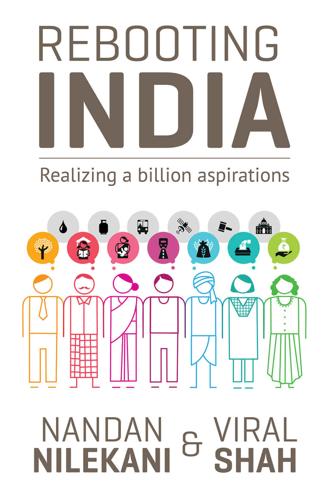
Rebooting India: Realizing a Billion Aspirations
by
Nandan Nilekani
Published 4 Feb 2016
In her book Vikram Sarabhai: A Life, Amrita Shah writes: By 1970, his list (of space applications) had expanded to include agriculture, forestry, oceanography, geology, mineral prospecting and cartography . . . This was Vikram’s dream: linking technology with development, serving the needs of the masses while nurturing a highly sophisticated work culture and scientific abilities. One of his favourite phrases was ‘leapfrogging’. It referred to his great faith, along with Bhabha and Nehru, in the ability of technology to enable developing countries to circumvent the long, arduous processes followed by the Western world.18 India’s self-sufficiency in foodgrains and milk are also the results of start-ups: the Green Revolution, powered by scientists like Norman Borlaug and bureaucrats like M.S.
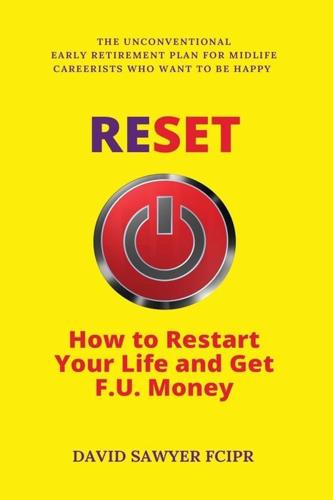
Reset: How to Restart Your Life and Get F.U. Money: The Unconventional Early Retirement Plan for Midlife Careerists Who Want to Be Happy
by
David Sawyer
Published 17 Aug 2018
Too many of us earn loads of money, but have no idea what’s in our pension or when we can retire. We employ cleaners and childcare providers and skip the queue with private healthcare. Either our kids are at private school or we pay £100k more on our mortgage for a good catchment area: same difference. Too many of us are so beaten down by an always-on working culture that we spend half our free time de-stressing. Too many of us like what we do, but don’t like our boss. Too many of us take the occasional Monday or Friday off sick because we have a bug just can’t face going in. Too many of us have problems sleeping or wear gumshields to stop our teeth grinding during the night.
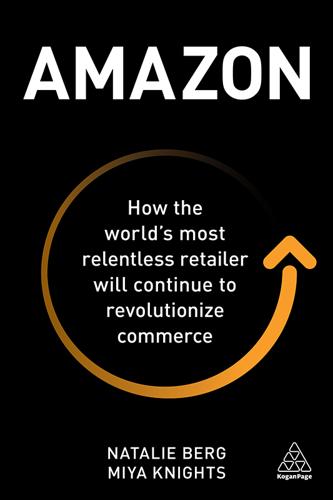
Amazon: How the World’s Most Relentless Retailer Will Continue to Revolutionize Commerce
by
Natalie Berg
and
Miya Knights
Published 28 Jan 2019
By 2020, there are expected to be more than 26,000 shared office spaces in the US, hosting 3.8 million people – which is phenomenal considering the trend was virtually unheard of as recently as 2007.11 ‘In cities, we have been paying particular attention to the new ways space and time are used, which are radically changing consumer behaviours. The lines between work, culture and fun are being blurred, creating a new way of living.’ Jean Paul Mochet, CEO of convenience banners at Casino Group, 201812 The rise in remote working, co-working spaces, hot-desking and third spaces is transforming consumers’ lives – and creating opportunities for retailers in the process.

A Year of Living Danishly: My Twelve Months Unearthing the Secrets of the World's Happiest Country
by
Helen Russell
Published 14 Sep 2015
If anyone plays the martyr card, staying late or working too much, they’re more likely to get a leaflet about efficiency or time management dropped on their desk than any sympathy.’ ‘Blimey!’ This makes a change from London life. Back home, answering an email at midnight or staying at your desk until 8pm was considered a badge of honour. But in Danish work culture, this implies that you’re incapable of doing your work in the time available. Desks are all fitted with hydraulics so that staff can work standing up if they prefer, something that’s been proven to be better for your health (according to research published in the Journal of Social Psychological and Personality Science) as well as facilitating swifter, more dynamic informal meetings or ‘stand ups’ as they’re called.

Ghost Work: How to Stop Silicon Valley From Building a New Global Underclass
by
Mary L. Gray
and
Siddharth Suri
Published 6 May 2019
Due to the legal liabilities associated with “curating a workforce,” as was discussed in Some platforms provide guidance in the form of ratings or a reputation score, as described in chapter 2, those employing workers can’t provide on-the-job training. As a result, those doing ghost work bear the costs of learning how to navigate not only the task but also the work culture, and they have no chance to ask questions or get feedback from requesters. 7 TO 10 ON THE PAIN SCALE: NOT GETTING PAID WHEN TECHNICAL FAILURE OR HUSTLE IS SPUN AS MALFEASANCE Even after a person has cleared the hurdles of finding good ghost work, learning the platform’s quirks, and completing the task, they still run the very real risk that they won’t be paid for their work.

The Coming of Neo-Feudalism: A Warning to the Global Middle Class
by
Joel Kotkin
Published 11 May 2020
Many people have come to regard children as a luxury, since the costs associated with childrearing, including school and housing, have risen far faster than incomes.36 This is true not only in the United States, but in virtually all wealthy countries, including those with extensive welfare states.37 In East Asia today, a powerful work culture appears to be undermining the long-existing familial culture. “In Singapore, women work an average of 53 hours a week,” observes Wolfgang Lutz, a demographer. “Of course, they are not going to have children. They don’t have the time.”38 This echoes what Alvin Toffler in 1970 described as a growing immersion in work at the expense of family life.

Why the Dutch Are Different: A Journey Into the Hidden Heart of the Netherlands: From Amsterdam to Zwarte Piet, the Acclaimed Guide to Travel in Holland
by
Ben Coates
Published 23 Sep 2015
Agendas were sacrosanct, and in the workplace it was impossible to order so much as a new box of paperclips without first holding several meetings to debate the merits of doing so. (I once asked a senior oil company executive who had moved from Houston to The Hague what the main difference between the two working cultures was. ‘In the Netherlands we have a lot more meetings,’ she said. ‘A lot more.’) While many licentious behaviours would go unchallenged, anyone inadvertently breaching accepted social codes would soon know about it. In Amsterdam, I once saw a sixty-something prostitute in a gold bikini come out from behind her window to berate a man smoking in the street.
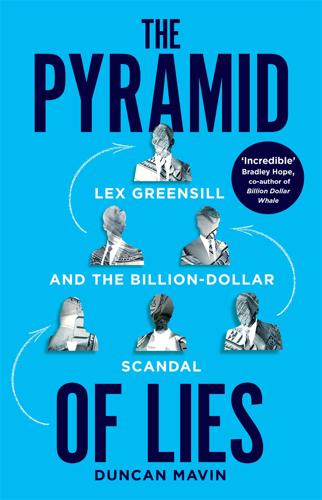
The Pyramid of Lies: Lex Greensill and the Billion-Dollar Scandal
by
Duncan Mavin
Published 20 Jul 2022
The whole programme ran on a privately owned, third-party technology platform called PrimeRevenue that carried out most of the heavy lifting, processing the invoices and matching payments. PrimeRevenue was a relatively tiny tech start-up and Morgan Stanley was a key client for the firm. There was a sort of co-dependency. PrimeRevenue needed Morgan Stanley because the bank was its biggest client. Lex needed PrimeRevenue to make TReFS work. Culturally, though, the two organizations were miles apart, and the laid-back techies mocked Lex for his fake British accent, and his uptight behaviour. The TReFS team remained small, but Lex acted as though they were already a big deal. He and his team would fly around the world, meeting with top-level executives at major companies in New York, Tokyo, Hong Kong, Sydney.
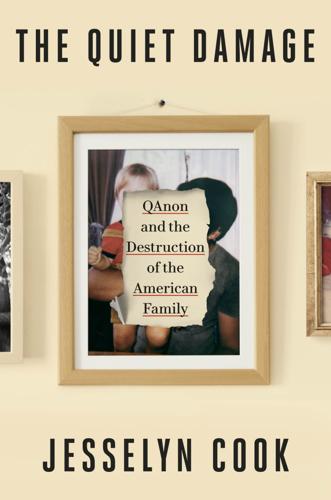
The Quiet Damage: QAnon and the Destruction of the American Family
by
Jesselyn Cook
Published 22 Jul 2024
Why not try to forge a new path and see where it took him? What did he have to lose? Two things, to start: The first was his marriage. He found a lawyer to file the paperwork as soon as he was discharged, with no resistance from Andrea. She was still involved with her most recent affair. Next was his job. When he had described his work culture—and Joseph and Dawn—during a group sharing session at the hospital, people had literally gasped at some of the details. It sounded more like a religious cult than a workplace, observed one man, who was himself a Christian. Matt’s plan was to find a new job first, but the decision was quickly taken out of his hands.

Empire of Cotton: A Global History
by
Sven Beckert
Published 2 Dec 2014
Rathbone, like some of his contemporaries, had a hopelessly romanticized view of women’s cotton work.23 Thanks to long-standing biases, women’s labor was much cheaper. Historians found that “women often earned as little as 45 to 50 percent of males’ wages under fixed wage structures.” Yet women were not just cheaper workers, they also were less rooted in older work cultures that often regulated the work of male artisan textile workers, work cultures that could and did become the basis of resistance against factory owners. Women’s work patterns, along with those of their children, were more easily molded to fit the ceaseless rhythm of machine production.24 The availability of women was crucial to the early cotton manufacturers.

The Railways: Nation, Network and People
by
Simon Bradley
Published 23 Sep 2015
Uniforms – the property of the company, not of the wearer – implied a status something between that of the armed services and the liveried servants of the upper classes. Some lines indeed preferred the term ‘livery’ for the dress of their traffic staff. On the Great Western, this derived in turn from Sir Robert Peel’s new Metropolitan Police: tall hats, and tailcoats with big brass-gilt buttons. Everything about this working culture encouraged acceptance of the principle that dangerous errors committed at work were a matter of personal responsibility, rather than a direct and foreseeable consequence of cost-trimming exploitation directed from the top. Besides, many workers were financially dependent on overtime work, especially when this came to be paid at higher rates, and took all the hours they could get.
…
The management certainly wished the men under their control to think themselves fortunate to hold their posts. On their part, the workers would not have signed up in the first place had the railways not offered an attractive combination of secure and decently paid employment, usually with some prospect of promotion. Changes to these attitudes depended on wider shifts in working culture and class consciousness: the railwayman of 1850 and his descendant of 1910 might have the same job to do, but they conceptualised it in different ways. The long loose-coupled trains assembled by the shunters required considerable skill to operate safely. Responsibilities were split between the locomotive driver and the goods guard, who travelled in a brake van at the back.
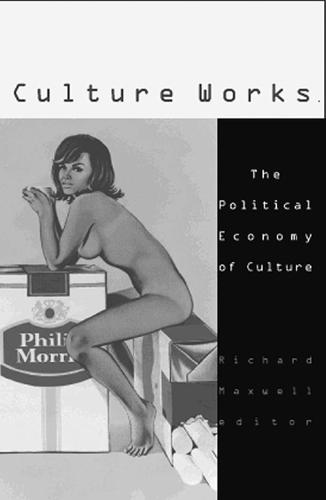
Culture works: the political economy of culture
by
Richard Maxwell
Published 15 Jan 2001
Culture Works Cultural Politics A series from the Social Text Collective 18. Culture Works: The Political Economy of Culture Richard Maxwell, editor 17. Out at Work: Building a Gay–Labor Alliance Kitty Krupat and Patrick McCreery, editors 16. SportCult Randy Martin and Toby Miller, editors 15. Perry Anderson: The Merciless Laboratory of History Gregory Elliott 14. Cosmopolitics: Thinking and Feeling beyond the Nation Pheng Cheah and Bruce Robbins, editors 13. Changing Life: Genomes, Ecologies, Bodies, Commodities Peter J. Taylor, Saul E. Halfon, and Paul N. Edwards, editors 12. Will Teach for Food: Academic Labor in Crisis Cary Nelson, editor 11.

The Industries of the Future
by
Alec Ross
Published 2 Feb 2016
Japan is a place where one is expected to socialize with lots of alcohol after work; it’s an indispensable part of upward mobility in the Japanese workforce, and it almost always excludes female work colleagues. Basically, if you are a mother (or father, for that matter) who wants to see your kids, this work culture works against you. China’s rise and Japan’s stagnation have been an embarrassment to the Japanese. With some coaching from Hillary Clinton, Prime Minister Shinzo Abe has begun to try to change this. At the core of his Abenomics economic plan, implemented after his election in December 2012, was a new place for women in the Japanese economy.
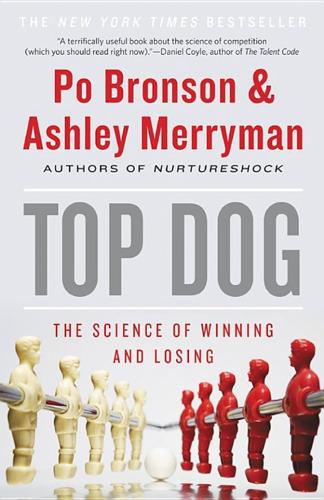
Top Dog: The Science of Winning and Losing
by
Po Bronson
and
Ashley Merryman
Published 19 Feb 2013
The threat of losing honor, the drive to not be beaten on home turf, has surged. These companies have a shared value: to build high-end, complex machines that are extremely reliable. They’ve bought parts from similar suppliers, also in the region. The firms are closely tied in other ways—they steal employees from one another, with 10% turnover every year. It’s a work culture where there’s no slacking off, where employees genuinely care, all the way down to the machine-shop floor. As one engineer told Boari, “Some of our rivals sent charming ladies here, trying to steal our best technicians, but they did not succeed. Here we are able to make beautiful machines and to motivate our technicians.”

Risk: A User's Guide
by
Stanley McChrystal
and
Anna Butrico
Published 4 Oct 2021
pay the phony returns: “Ponzi Schemes,” U.S. Securities and Exchange Commission, accessed October 6, 2020, https://sec.gov/fast-answers/answersponzihtm.html. defrauded $15 million: Nolen, “Ponzi Scheme.” fourteen company-wide cultural values: Upon hearing complaints from employees about Uber’s toxic work culture, the company hired a prestigious law firm to conduct an investigation on the workplace and offer recommendations. This quotes the report, and can be found in Meghann Farnsworth, “Read the Full Investigation into Uber’s Troubled Culture and Management,” Vox, June 13, 2017, https://vox.com/2017/6/13/15794412/read-entire-investigation-uber-culture-management-ethics-eric-holder.
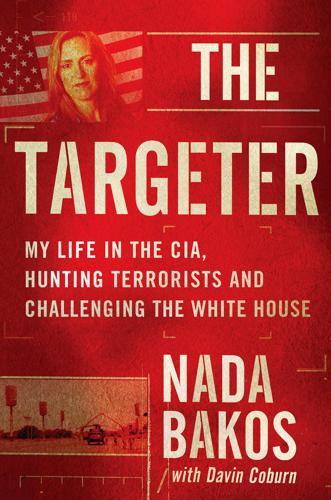
The Targeter: My Life in the CIA, Hunting Terrorists and Challenging the White House
by
Nada Bakos
Published 3 Jun 2019
The underlying tension between al Qaida and Zarqawi’s network was mirrored within the walls of CTC. The AQ department still didn’t see Zarqawi’s organization as a serious threat, and, like most of us, they felt the Iraq invasion was distracting us from our initial task of going after al Qaida—those responsible for 9/11. The work culture within the office was strained—get any group of hard-charging men and women in the same suite of rooms and you can expect tensions to reach the boiling point. Furthermore, in a compartmentalized bureaucracy like the CIA, it was common for two teams with similar overarching national security objectives to approach the same overlapping targeting scenario from very different angles—and subsequently stomp on each other’s toes.

Nomad Capitalist: How to Reclaim Your Freedom With Offshore Bank Accounts, Dual Citizenship, Foreign Companies, and Overseas Investments
by
Andrew Henderson
Published 8 Apr 2018
If you are not interested in micro-managing people, then the Philippines may not the best place for you to hire, but that does not mean that it is not the right fit for another business or that Filipinos are lazy and incompetent — just different. And that kind of different may even be perfect for you if you can learn to adapt to the work culture. Wherever you go, learn to respect the culture and make an effort to understand how it works outside of the normal business culture you are used to. You may learn a thing or two. More Reasons to Stay Whether you are doing business in Vietnam, hiring VAs in the Philippines, buying real estate in Ecuador, or adapting to the local culture, the counsel to avoid being dogmatic affects everything in the Nomad Capitalist lifestyle.

Drunk: How We Sipped, Danced, and Stumbled Our Way to Civilization
by
Edward Slingerland
Published 31 May 2021
What if he were a recovering alcoholic, a Muslim or Mormon, a designated driver, or a single parent who needed to get up early and clearheaded to see the kids off to school? A helpful piece about the role of alcohol in the tech industry by Kara Sowles, a community manager at a tech company in Portland, Oregon, lays out the inclusivity concerns that arise when work culture is permeated by alcohol, and is worth quoting at length. In the tech industry, alcohol is currency. It’s used to grow event attendance, to bribe participants, to reward employees and community members. Informal interviews are conducted in bars, to see if potential employees are likable in a social setting, or can hold up under heavy drinking with clients.

Pure Invention: How Japan's Pop Culture Conquered the World
by
Matt Alt
Published 14 Apr 2020
As for the female otaku of Japan? Number one went to Gundam, because some things never change. * * * — JAPAN HAS PROBLEMS. The ongoing cleanup from the Fukushima meltdown. A suicide rate that is, while on the decline as of 2019, still one of the highest among industrialized nations. A work culture that remains infuriatingly hostile to career women and young mothers. Never-ending regional tensions with China and the Koreas. And the problems of a super-aged society manifest in ways both heartbreaking and bizarre. There are increasing numbers of citizens who die alone and aren’t discovered for months or years; as the countryside hollows out from a migration of young people seeking their fortunes in cities, those left behind yearn for companionship.

Insight Guides Iceland
by
Insight Guides
Published 6 Dec 2024
Over the road from the soccer stadium is the sculpture gallery Ásmundarsafn § [map] (Sigtún; https://reykjavik.is/asmundarsafn), a third part of the Reykjavík Art Museum, dedicated to the sculptor Ásmundur Sveinsson (1893–1982) and based in the artist’s self-built studio-home. Several of his large Cubist-inspired early works, inspired by Icelandic folklore and working culture , stand in the garden, so you can get a taster before heading inside. The New Reykjavík Since World War II the capital has been expanding to the east. In the 1980s, as it approached a six-digit population, more modern and grandiose architecture appeared on its skyline. A new commercial and cultural centre was built entirely from scratch some 4km (2.5 miles) east of the old centre, including not only the large indoor shopping mall, Kringlan (www.kringlan.is), but also a complex to house the Reykjavík City Theatre company (www.borgarleikhus.is).
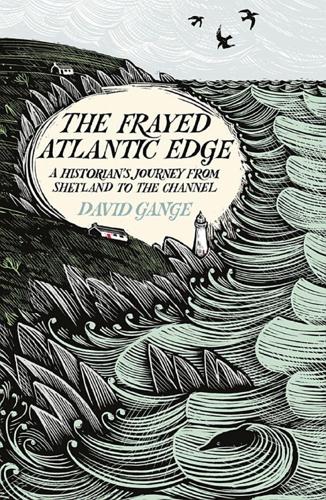
The Frayed Atlantic Edge: A Historian’s Journey From Shetland to the Channel
by
David Gange
Published 10 Jul 2019
Foster, Nature in Ireland: A Scientific and Cultural History (1997). 12 Richard Pine, ‘The Cartography of the Soul’, Irish Literary Supplement (1987). 13 Tim Robinson, Connemara: the Last Pool of Darkness (2008). 14 Tim Robinson, Stones of Aran: Pilgrimage (1986). 15 Just as for Blasket, there is an extraordinary range of literature from and about Aran; Mairead Conneely, Between Two Shores: Writing the Aran Islands 1890–1980 (2011) provides a good introduction. MUNSTER 1 Fiona Green, ‘Your Trouble is Their Trouble: Marianne Moore, Maria Edgeworth and Ireland’, Symbiosis (1997). 2 Nessa Cronin, ‘Maude Delap’s Domestic Science: Island Spaces and Gendered Fieldwork in Irish Natural History’ in N. Allen, N. Groom and J. Smith (eds), Coastal Works: Cultures of the Atlantic Edge (2016). 3 Geoffrey Moorhouse, Sun Dancing: A Medieval Vision (1998). BARDSEY TO THE BRISTOL CHANNEL 1 Like most towns on the Atlantic coastlines, hefty tomes of local history detail the lost glories of each of these places, Lewis Lloyd, Pwllheli: Port and Mart of Llyn (1991) providing particularly rich coverage of a town transformed by the transition from maritime industry to tourism. 2 Peter Brown, The Rise of Western Christendom (1996); Brendan Smith, Colonisation and Conquest in Medieval Ireland (1999) and Brendan Smith (ed.), Britain and Ireland, 900–1300: Insular Responses to European Change (1999); these kind of phrases echo an earlier tradition in, for instance, Halford Mackinder, Britain and the British Seas (1902).

The Swerve: How the Renaissance Began
by
Stephen Greenblatt
Published 31 Aug 2011
Even in the elaborate bath complexes that Romans loved, reading rooms, decorated with busts of Greek and Latin authors, were carefully designed to make it possible for educated Romans to combine care for the body with care for the mind. By the first century CE there were distinctive signs of the emergence of what we think of as a “literary culture.” At the games in the Colosseum20 one day, the historian Tacitus had a conversation on literature with a perfect stranger who turned out to have read his works. Culture was no longer located in close-knit circles of friends and acquaintances; Tacitus was encountering his “public” in the form of someone who had bought his book at a stall in the Forum or read it in a library. This broad commitment to reading, with its roots in the everyday lives of the Roman elite over many generations, explains why a pleasure palace like the Villa of the Papyri had a well-stocked library.

Decoding Organization: Bletchley Park, Codebreaking and Organization Studies
by
Christopher Grey
Published 22 Mar 2012
And if mistakes were made (as of course they were) by ignorance or negligence, the remedy was found not nearly so much in reprimands, or witch-hunts for the delinquent, as in the mortification decent persons felt at having let things down7. I will consider in the following chapter this and other examples of ‘management style’ and their significance, but for now the issue is to appreciate the contrast between a relatively free and trust-based work culture at Hut 3 (and also some other huts) and that of a military camp where some, at least, spent their off-duty hours and how experience was thus ‘splintered’. One very important part of the civilian–military distinction indeed lay in accommodation arrangements. These were crucial because for most people at BP, except when on leave, their lives consisted largely of work and billets, the various organized recreational activities referred to in the previous chapter notwithstanding.
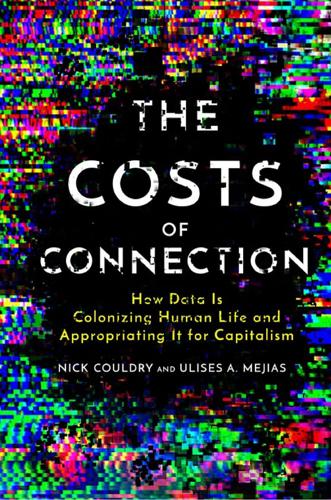
The Costs of Connection: How Data Is Colonizing Human Life and Appropriating It for Capitalism
by
Nick Couldry
and
Ulises A. Mejias
Published 19 Aug 2019
For a novel that reflects on this, see Flannery, I Am No One. 45. Eggers’s novel is only the latest in a long line of imaginative critiques of corporate life, starting perhaps with Kafk a, but it gains a particular force by having been written in San Francisco, close to the physical location of the power appropriations and work cultures that Eggers dissects. China’s data platforms have yet to attract a novelistic treatment. 46. Eggers, The Circle, 187. 47. Rössler, Value, 146. 48. Fried, Anatomy of Values, 144. 49. Quoted in Lin and Chin, “Tech Giants.” 50. Altman, “Privacy Regulation”; and Prosser, “Privacy.” Counterarguments are unconvincing.

For Profit: A History of Corporations
by
William Magnuson
Published 8 Nov 2022
For the most part, this meant adding new and better features. The Accel investment from 2005 had allowed Facebook to ramp up its hiring of engineers and coders. Most new hires, at least at the beginning, were recent college graduates or people who had worked a year at a bigger company. They swiftly became initiated into the work culture at Facebook, which prioritized speed over precision. Most tech companies at the time would only “push out” new code after months of work and multiple layers of review. Facebook would do it several times a day. This was an unheard-of pace and often led to errors. Engineers broke the website so often that a tradition started of congratulating them when did they so.

The Equality Machine: Harnessing Digital Technology for a Brighter, More Inclusive Future
by
Orly Lobel
Published 17 Oct 2022
Every year, I teach employment law and policy, and I regularly serve as an expert witness in cases about corporate culture and employment discrimination. It’s not an easy field. It can get frustrating. How is it that for years we’ve had laws on the books demanding equal treatment, and yet discrimination, unequal pay, harassment, and hostile work environments persist in every industry? How can we overcome years of exclusion, toxic work cultures, and glass ceilings? Human processing, by its very nature, discriminates—distinguishing between different categories and making decisions according to classifications and schemas that we’ve developed in our minds. Most of these processes are beneficial and efficient, the result of thousands of years of cognitive evolution allowing humans to make quick decisions.

Rich White Men: What It Takes to Uproot the Old Boys' Club and Transform America
by
Garrett Neiman
Published 19 Jun 2023
And even returns from optimizing elite productivity are running dry: I don’t think it’s a coincidence that, after decades mining the 99 percent and the 1 percent, the world’s two richest men have become obsessed with colonizing new planets. Some rich white men say that the neoliberal grind is necessary for America’s global competitiveness. In a 2018 Financial Times piece titled “Silicon Valley Would Be Wise to Follow China’s Lead,” billionaire venture capitalist Michael Moritz idealizes a work culture within the Chinese technology industry where executives work eighty-to-one-hundred-hour weeks. He laments how “the [California] blogosphere has been full of chatter about the inequity of life” and cites the prevalence of topics like “the appropriate length of paternity leave or work-life balances” as reflective of “the concerns of a society that is becoming unhinged.”
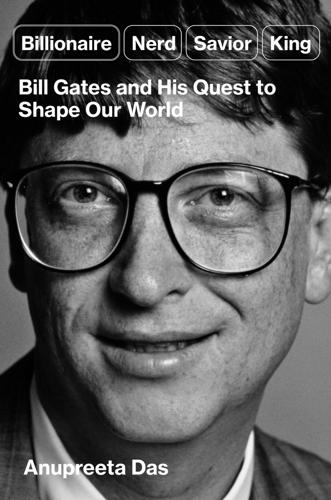
Billionaire, Nerd, Savior, King: Bill Gates and His Quest to Shape Our World
by
Anupreeta Das
Published 12 Aug 2024
Conspiracy theories are therefore comforting to people and can make them feel grounded. In particular, for disaffected groups, it is often easier to accept the idea that an anonymous power is orchestrating events—a dark state with an agenda, a cabal of billionaires pulling the strings—than settling for the reality of chaotic societies, tectonic shifts in work culture, and messy governments.8 One study of letters published in The New York Times and The Chicago Tribune between 1890 and 2010 found that conspiracy theories were prevalent, but that they increased during periods of rising inequality and diminishing trust in institutions.9 There were a multitude of conspiracy theories in circulation in the early twentieth century, a time of great inequality spurred by the Industrial Revolution.

Tripping on Utopia: Margaret Mead, the Cold War, and the Troubled Birth of Psychedelic Science
by
Benjamin Breen
Published 16 Jan 2024
Marrying Gorer was not appealing to her, she said, but was “an entertainable idea” given the circumstances. Meanwhile, she wrote to Benedict, “I miss you very much.” The more or less openly gay Gorer was, in other words, a potential beard. He was also a new partner in her work with Benedict on a project officially known as Research in Contemporary Cultures. Benedict and Mead informally called the work “culture cracking”—picking the lock of a society’s psyche like a safe. It boiled down to trying to decode, at a distance, the conscious and subconscious motives of entire nations. That work required security clearances and government approval. And that required a clean public reputation, no suspicion of deviance, no radical opinions.
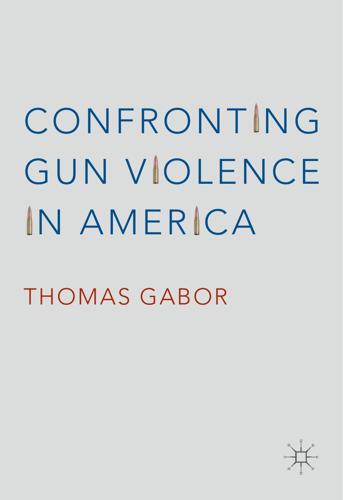
Confronting Gun Violence in America
by
Thomas Gabor
Published 12 Sep 2016
He states that we need to get young adults engaged in the political process and in organized activities. Civics education is essential, as is the involvement of young people in community service. Labor law should encourage employers to be family and community friendly. Cities and towns should be designed so as to reduce the time spent commuting to work. Cultural activities that bring people together and transcend our differences need to be emphasized. Putnam asserts that a major challenge is to harness the power of the Internet and social media to encourage face-to-face interactions rather than building an alternative virtual world. Some of these community-building initiatives would be in the medium to long term.
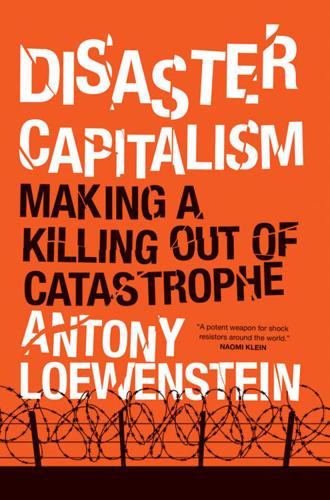
Disaster Capitalism: Making a Killing Out of Catastrophe
by
Antony Loewenstein
Published 1 Sep 2015
None of these benefits ever materialized in Australian facilities. In 2013 a Serco source leaked a cache of internal documents to me that detailed massive price-gouging of the federal government by the multinational, extreme rates of self-harm among detained refugees across the country, the non-reporting of mistakes to avoid government abatements, and a work culture designed to ignore the rights of asylum seekers in order to maximize profit. My contact, Sean (not his real name), who asked for anonymity due to the sensitivity of his revelations, had worked within senior Serco management in Canberra for a number of years. He told me that, when Serco had won the detention center contract in 2009, it was a relatively well-managed arrangement with the Immigration Department.

Work Won't Love You Back: How Devotion to Our Jobs Keeps Us Exploited, Exhausted, and Alone
by
Sarah Jaffe
Published 26 Jan 2021
These tech prodigies were justified by such hype in hiring little clones of themselves, in never questioning how it was that everyone who was a genius was also white and male, never asking why the number of women who left tech jobs was double the number of men. 27 The reality is that the work—like most creative work, ruthlessly romanticized—is a slog. A New York Times story on Amazon’s work culture featured employees who’d been told that when they “hit the wall,” the solution was to climb it. They spoke of emails arriving in the middle of the night, and followed by angry text messages if they did not answer immediately. The staff faced an annual cull of those who purportedly couldn’t cut it.

A People's History of the United States
by
Howard Zinn
Published 2 Jan 1977
New York: Random House, 1973. Gutman, Herbert. “The Buena Vista Affair, 1874–1875,” Workers in the Industrial Revolution: Recent Studies of Labor in the United States and Europe, ed. Peter N. Stearns and Daniel Walkowitz. New Brunswick, N.J.: Transaction, 1974. ______. Work, Culture and Society in Industrializing America. New York: Random House, 1977. ______. “Work, Culture and Society in Industrialising America, 1815–1919,” American Historical Review, June 1973. Headley, Joel Tyler. The Great Riots of New York, 1712–1873. Indianapolis: Bobbs-Merrill, 1970. *Hofstadter, Richard, and Wallace, Michael, eds. American Violence: A Documentary History.

Culture and Prosperity: The Truth About Markets - Why Some Nations Are Rich but Most Remain Poor
by
John Kay
Published 24 May 2004
Large enterprises emerged in activities where economies of scale could be derived from the division of labor-Smith's pin factory-or where the activity required coordination of the specialist functions of many individuals-railroads and oil companies. The invention of steam power provoked a shift from work- Culture and Prosperity { 87} shop to factory organization in textiles because one engine could power many looms. And factory organization promoted many technical innovations. This is a particularly important example of the coevolution of technology and institutions. The gains from specialization were believed to be limitless.

The Spider Network: The Wild Story of a Math Genius, a Gang of Backstabbing Bankers, and One of the Greatest Scams in Financial History
by
David Enrich
Published 21 Mar 2017
Attorney’s Office, 311–12 Manufacturers Hanover, 26, 28 market making, 17–18, 155–56 Martin, Jeremy, 143–44 Massachusetts Institute of Technology (MIT), 184, 185 Matsumoto, Yugo, 238, 290 Mayweather, Floyd, 134–35, 136 Mccappin, Brian, x background of, 3 Hayes firing, 302–3 Hayes job offer, 229–30 Hayes and Libor manipulation, 280–81, 284, 291–92, 298, 299, 300, 338 Hayes wedding, 265 at Japanese getaway, 2–3 karaoke singing of, 3, 229–30 SFO criminal charges, 383 SFO investigation, 314 update on, 446 work culture of UBS, 275 McCarran International Airport, 135–36 McGonagle, Vincent, xii, 198–203 background of, 199 Libor investigation, 201, 203, 205, 257, 313 McInerney, Denis, xiii, 268–69, 323, 362, 367, 368 Meaney, Patrick, xiii, 345–46, 350–52, 356, 408 Meister, David, xii, 311–13, 400 background of, 311–12 at CFTC, 312–13, 322–23 Mercedes, 321, 381, 393–94 Merrill Lynch, 121, 220 Bank of America acquisition of, 164, 170, 320 Stenfors “mismarking” books, 163, 214–17 Merriman, Alex, 76, 79 MGM Grand Garden Arena, 134–36 Microsoft Excel, 23, 89 Miliband, Ed, 358 Milken, Michael, 311–12 Millwall F.

Framing Class: Media Representations of Wealth and Poverty in America
by
Diana Elizabeth Kendall
Published 27 Jul 2005
One interviewee said, “The No. 1 draw for a person with a family is that the school systems are wonderful, and the general ethics and morals of the community and area in itself.” Another worker told the reporter, 9781442202238.print.indb 177 2/10/11 10:47 AM 178 Chapter 6 “People believe in a fair day’s labor, a fair day’s wage. I think the work culture is one that is a participatory culture. They will pitch in to get the job done.” Although based on people’s perceptions about their own communities, these statements also suggest that individuals living in the region share good middle-class moral values and a belief in the work ethic. National and regional news coverage about a community’s values are not unique.

If You're So Smart, Why Aren't You Happy?
by
Raj Raghunathan
Published 25 Apr 2016
Shortly thereafter, he was having problems with everyone: his landlord, girlfriend, and neighbors. And to cope with these problems, he started to drink. Within three years of coming to the United States, my friend was forced to go back to India because he got fired from literally every job he took up. Going back to India was a major blow for him because he much preferred the work culture in the United States and had also gotten used to the creature comforts of the West. But because he had burned bridges with every employer, he wasn’t able to get anyone to even write him a reference letter, let alone hire him back. His despondence at not being able to get back to the United States, and his growing dependence on alcohol to cope with it, were starting to take a toll on him.

Imaginable: How to See the Future Coming and Feel Ready for Anything―Even Things That Seem Impossible Today
by
Jane McGonigal
Published 22 Mar 2022
How do we create more resilient ways of making those essential supplies? What are more equitable ways of distributing them during an emergency? How much of the current suffering and burnout around everyday work is preventable? What are we willing to do to prevent it? What kinds of work cultures and worker protections would bring more security, humanity, and dignity to our jobs? Are we ready for a universal four-day workweek? Are we ready for universal “right to disconnect” laws, which would safeguard workers against after-hours communications and work demands? What would a less efficient, less productive world look like?

Factory Man: How One Furniture Maker Battled Offshoring, Stayed Local - and Helped Save an American Town
by
Beth Macy
Published 14 Jul 2014
Some Mexican businessmen worried about the end of the traditional siesta, as the hard-charging, American-style business pace threatened to put a dent in two-hour lunches and naps. But as discussions about trade deals between NAFTA partners and China began to grab headlines, no one brought up the Asian work culture or the pace. In a 1994 Gallup poll, 68 percent of the Chinese population said that “work hard and get rich” was their overarching personal philosophy of life. JBIII knew all about what Larry Moh had accomplished in Taiwan, Singapore, and Hong Kong. He followed the progress when Moh made his strategic opening salvo in China, in a coastal area outside Beijing called Tianjin.

The Cult of We: WeWork, Adam Neumann, and the Great Startup Delusion
by
Eliot Brown
and
Maureen Farrell
Published 19 Jul 2021
After all, WeWork was making a lot more on individual locations than landlords would. Members were coming for the community, not just a desk, he said. Dunlevie, meanwhile, saw WeWork more like a services startup. Just as companies pay monthly fees for outsourced services like accounting, here they were paying for outsourced offices and work culture. With Dunlevie a strong advocate, the Benchmark partners made their bet. Neumann would find a way to make WeWork giant. He was a winner, full stop, and they knew they’d be kicking themselves in a few years if they turned him down. As Dunlevie said later, the thinking was, “Let’s give him some money and he’ll figure it out
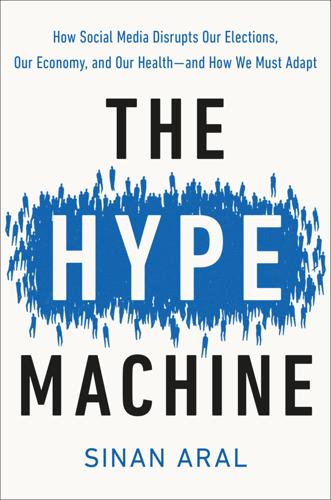
The Hype Machine: How Social Media Disrupts Our Elections, Our Economy, and Our Health--And How We Must Adapt
by
Sinan Aral
Published 14 Sep 2020
In September of that year, it added high school networks. In October it expanded to international school networks. In May 2006 it added workplace networks. Each of these networks was a tight-knit group in which many people already knew each other, had friends in common, or could relate to each other’s experiences of having the same school or work culture. Social connection or proximity among Facebook users was high, while it was very low among MySpace users. When Facebook opened its doors more broadly in September 2006, it had 12 million users, to MySpace’s 100 million. But the social connections between Facebook users looked very different.

Like, Comment, Subscribe: Inside YouTube's Chaotic Rise to World Domination
by
Mark Bergen
Published 5 Sep 2022
Its leader, Andy Rubin, a brilliant programmer and robotics nerd, built his Google fiefdom by giving free operating software to the legion of phone makers trying to rival Apple. (In return, Android required phone makers to preload Google apps.) Android staff ate in their own special cafeteria at Google—with custom Japanese fare, Rubin’s favorite—and practiced a work culture, like Apple’s, maniacally centered on one man. Tall and lean, with a bald pate and glasses, Rubin even looked like Jobs. Stories emerged of Rubin’s similar tech-genius tirades. Far worse would come later. Rubin had recruited a few staff from YouTube, including Levine, its first lawyer, to create a digital store for music and movies, a foil to Apple’s iTunes.

Make Your Own Job: How the Entrepreneurial Work Ethic Exhausted America
by
Erik Baker
Published 13 Jan 2025
Do things exactly the way you want.” The sad fact, however, was that entrepreneurship was simply “not a feasible reality for a vast majority of people.”46 These Redditors are not the only disaffected workers who have come to see entrepreneurship as a way to escape from a toxic, oppressive mainstream work culture. The resignation boom, it turns out, was accompanied by a similarly unprecedented spike in applications for new businesses. “‘The Great Resignation’ is creating more entrepreneurs,” Yahoo’s news service trumpeted. NBC was even more emphatic: “The coronavirus pandemic has created a landscape in which entrepreneurs and startups can thrive and new innovations can break ground.”

Rocket Dreams: Musk, Bezos and the Trillion-Dollar Space Race
by
Christian Davenport
Published 6 Sep 2025
CHAPTER 18 277 “Guys, if you’re willing”: Micah Maidenberg and Doug Cameron, “Jeff Bezos and Blue Origin Crew Discuss Their Experience in Space,” The Wall Street Journal, July 20, 2021, https://www.wsj.com/articles/jeff-bezos-and-blue-origin-crew-discuss-their-experience-in-space-11626813845. 279 Jeff Bezos’s employees: Christian Davenport, “Inside Blue Origin: Employees Say Toxic, Dysfunctional ‘Bro Culture’ Led to Mistrust, Low Morale, and Delays at Jeff Bezos’ Space Venture,” The Washington Post, October 11, 2021, https://www.washingtonpost.com/technology/2021/10/11/blue-origin-jeff-bezos-delays-toxic-workplace/. 280 Alexandra Abrams: Christian Davenport, “Blue Origin Fired a Senior Executive, Citing Inappropriate Behavior. Current and Former Employees Say It’s Part of the Company’s Toxic Culture,” The Washington Post, September 30, 2021, https://www.washingtonpost.com/business/2021/09/30/blue-origin-sexist-work-culture/. 280 posted by the whistleblower site Lioness: Alexandra Abrams, “Bezos Wants to Create a Better Future in Space. His Company Blue Origin Is Stuck in a Toxic Past,” Lioness, September 30, 2021, https://www.lioness.co/post/bezos-wants-to-create-a-better-future-in-space-his-company-blue-origin-is-stuck-in-a-toxic-past. 281 an exodus of talent: Michael Sheetz, “Turmoil at Bezos’ Blue Origin: Talent Exodus Came After CEO’s Push For Full Return To the Office,” CNBC, October 1, 2021, https://www.cnbc.com/2021/10/01/jeff-bezos-blue-origin-talent-exodus-ceo-pushed-return-to-office.html. 282 “reasonably good”: Richard Waters, “Elon Musk: Interview with FT’s Person of the Year,” Financial Times, December 15, 2021, https://www.ft.com/content/a7f75d25-d710-4aaa-9f57-49e24d67744d. 283 “If that went wrong”: Christian Davenport, “The Path Forward: Private Space Travel with Jared Isaacman,” The Washington Post, October 3, 2022, https://www.washingtonpost.com/washington-post-live/2022/10/03/transcript-path-forward-private-space-travel-with-jared-isaacman/. 284 “If it was an airplane”: Space Titans: Musk, Bezos, Branson, Discovery and Science Channels, November 4, 2021, https://www.imdb.com/title/tt16102738/. 288 SpaceX, meanwhile: Elizabeth Howell, “SpaceX in 2021: Elon Musk’s Space Company Set Records for Reusability and More,” Space.com, December 28, 2021, https://www.space.com/spacex-record-breaking-2021-year. 288 “The Raptor production”: Michael Sheetz, “Elon Musk Tells SpaceX Employees That Starship Engine Crisis Is Creating a ‘Risk of Bankruptcy,’ ” CNBC, November 30, 2021, https://www.cnbc.com/2021/11/30/elon-musk-to-spacex-starships-raptor-engine-crisis-risks-bankruptcy.html#:~:text=%22The%20Raptor%20production%20crisis%20is,every%20two%20weeks%20next%20year.%22. 289 “Physics does not care”: Walter Isaacson, Elon Musk (Simon & Schuster, 2023), chap. 59, Kindle. 290 “We think, and so”: Christian Davenport, “Jeff Bezos’ Blue Origin Will Get a Second Chance to Compete in NASA’s Moon Program,” The Washington Post,March 23, 2022, https://www.washingtonpost.com/technology/2022/03/23/nasa-moon-lander-blue-origin-spacex/. 290 “If Mr.

Civilization: The West and the Rest
by
Niall Ferguson
Published 28 Feb 2011
That is the reason why agitators are so absolutely necessary. Without them, in our incomplete state, there would be no advance towards civilization … [But] the fact is that civilization requires slaves. The Greeks were quite right there. Unless there are slaves to do the ugly, horrible, uninteresting work, culture and contemplation become almost impossible. Human slavery is wrong, insecure, and demoralizing. On mechanical slavery, on the slavery of the machine, the future of the world depends.32 Yet the revolution feared by Wilde and eagerly anticipated by Marx never materialized – at least, not where it was supposed to.

The death and life of great American cities
by
Jane Jacobs
Published 1 Nov 1961
A generalized neighborhood park that is not headquarters for the leisured indigent can become populated naturally and casually only by being situated very close indeed to where active and different currents of life and function come to a focus. If downtown, it must get shoppers, visitors and strollers as well as downtown workers. If not downtown, it must still be where life swirls—where there is work, cultural, residential and commercial activity—as much as possible of everything different that cities can offer. The main problem of neighborhood park planning boils down to the problem of nurturing diversified neighborhoods capable of using and supporting parks. However, many city districts do already possess precisely such ignored focal points of life which cry out for close-by neighborhood parks or public squares.

One Less Car: Bicycling and the Politics of Automobility
by
Zack Furness
and
Zachary Mooradian Furness
Published 28 Mar 2010
He writes, “The way our space is arranged carries on the disintegration of people that begins with the division of labour in the factory. it cuts a person into slices, it cuts our time, our life, into separate slices so that in each one you are a passive consumer at the mercy of the merchants, so that it never occurs to you that work, culture, communication, pleasure, satisfaction of needs, and personal life can and should be one and the same thing: a unified life, sustained by the social fabric of the community.” Murray Bookchin, whose work is also heavily influenced by Karl Marx, makes a similar point: “City planning is an expression of mistrust in the spontaneity of contemporary social relations, and for good reason.

Winning the War on War: The Decline of Armed Conflict Worldwide
by
Joshua S. Goldstein
Published 15 Sep 2011
The UN’s internal problems are perhaps overemphasized by those who find the UN an easy target. Pérez de Cuéllar complains that the Secretariat “frequently has been maligned as incompetent, overpaid, lazy, and even corrupt. None of this is true.” The staff, drawn from 150+ countries, “represent highly disparate work cultures and management styles” but share “the impartiality that is the duty of an international civil servant.” UN success, however, still depends on a few highly qualified, highly motivated individuals. The ideal Special Representative of the Secretary-General (SRSG) “must be able to ‘walk on water, swim with the piranha fish, and fly with the angels.’

Them And Us: Politics, Greed And Inequality - Why We Need A Fair Society
by
Will Hutton
Published 30 Sep 2010
Harry Hopkins, Roosevelt’s chain-smoking, high-energy confidant who ran the WPA, passionately believed in the value of work and the destructive consequences of living on benefit. ‘Give a man a dole and you save his body and destroy his spirit,’ he once said. ‘Give him a job and you save both body and spirit.’ Roosevelt’s government became America’s employer of last resort, underwriting its working culture and building its infrastructure in a vast win-win. Britain’s government should assume the same role in the 2010s with the same degree of imagination to provide a key building block in a new flexicurity social system. Essentially, Wilthagen wants to change social security from a passive system of risk management based on compensation and job protection to a proactive system of risk management in which individuals are given the insurance, income, assets and skills that will allow them to manage their careers and employment actively.
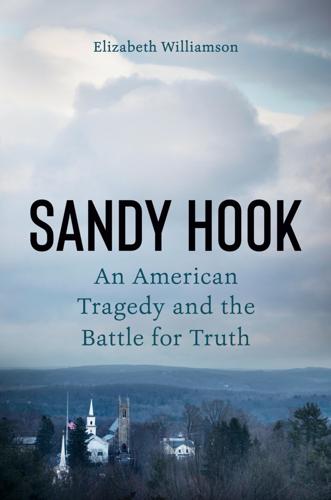
Sandy Hook: An American Tragedy and the Battle for Truth
by
Elizabeth Williamson
Published 8 Mar 2022
See also specific family members, including Pozner, Lenny Fancelli, Julie Jenkins, 432 Farid, Hany, 209–10, 422 Farrar, Kyle, 316, 317–18, 319, 322, 323 Farrar & Ball, 310, 314, 316–18, 324, 401, 412, 413 Federal Bureau of Investigation (FBI), 170–71, 220, 251, 252 Feinberg, Kenneth R., 52–53 Feinstein, Emily, 401 Fellowship of the Minds (blog), 106 Fetzer, James, 105–6, 115, 137, 138, 139, 147, 175–76, 193, 201, 202–3, 391–410, 412 First Amendment protections, 204–10, 314, 322, 350, 370–71, 423 First Baptist Church in Sutherland Springs, Texas, 326–27 Fontaine, Marcel, 309 Ford, Julian, 28 Forsman, Jennifer, 167–68, 172 Forward, 143–44 Fox News, 253, 286 Frank, Monte, 186, 188–90, 192, 200 Fredericks, Grant, 119–20 freedom of speech, 204–10, 333–36, 384–85, 428 Free Speech Systems, 271, 308, 320, 346 Friesen, Dan, 83–84, 90, 196, 294, 295, 432 G Gamble, Maya Guerra, 430 Gaston, Dan, 275 Gates, Bill, 371 Gay, Josephine, 235 Gay, Michele, 235, 338 Gentzkow, Matthew, 241 Gersh, Tanya, 346–47 Giuliani, Rudy, 433 globalism/globalists, 71, 72, 79, 115, 214, 258, 259, 261, 298 Gnandt, Greg, 8 Goebbels, Paul Joseph, 74 GoFundMe, 200 Goldman, Adam, 248 Google, 193, 206, 320, 374 Graham, Ginnie, 130–31, 132 Gravois, John, 397 “great replacement theory,” 74 Greene, Marjorie Taylor, 251 Grenier, Richard, 395 Gucciardi, Anthony, 268, 362 Gun Owners of America, 89 gun policy debate: and Congressional testimony of Sandy Hook families, 288–89; groundswell against gun violence, 308; and gun control legislation, 88, 89; and gun lobby, 88, 89; and Heslin, 288–90; Jones’s speculation about, 72, 73, 413–14; Lafferty’s work in, 329–30; and Obama administration, 153; and Parkland school shooting (2018), 308; and reactions to Sandy Hook massacre, 89; Ryan’s perspective on, 339; and universal background checks, 88; and Watt, 135 H Haas, Lori, 86 Halbig, Erik, 182–83 Halbig, Wolfgang: background of, 182–83; and Clinton, 274; donations solicited by, 164, 170; and Fetzer, 176; Frank on, 192; harrassment of Sandy Hook families, 183, 382; HONR’s efforts to combat, 193, 200; on identity of massacre survivor, 185, 186, 200, 382; inability to acknowledge errors, 427; on Infowars, 100–101, 138, 297; Johnson’s debate with, 177–80; lawsuit against, 410; in Newtown, 147–48, 184, 186–88; Pozner’s efforts to inform, 392; Pozner’s lawsuit against, 200, 302–4; and Pozner’s lawsuit against Fetzer, 404, 408–9, 410; profiting from conspiracy content, 180; public records campaign of, 181, 185–90; Sandy Hook families’ lawsuit against, 328, 332, 382; “Sandy Hook Justice” website, 100–101, 148; threats to dig up victims’ graves, 143; and Watt, 137 Hamman, Buckley, 210, 266 Hammond, Natalie, 5 Hannity, Sean, 253 Hao, Karen, 341–42 Harmony Square online game, 423–24 Hassinger, Cristina, 51–52 Hawley, Josh, 386–87, 434 Henson, Weldon, 268 Heslin, Neil: author’s tour of Newtown with, 7–8, 10, 26, 31–32; and conspiracy theorists, 287, 289, 372; on cradling Jesse’s body, 22–23, 284–85, 287, 296–97, 299, 310, 311, 334; and death of Jesse, 18; engagement of, 435–37; on Fairfield State Hospital, 12; and funeral for Jesse, 23, 24–26; grief of, 9–10, 287–88; and gun violence, 288–90; and immediate aftermath of massacre, 14–15, 17, 22; and Infowars, 287, 290, 296–97, 299, 301, 310, 414; and Jesse’s room, 372, 436–37; and Kelly’s interview with Jones, 283, 284–85, 287; Lanza’s father’s meeting with, 29–31; last day with Jesse, 13–14; lawsuit against Jones, 307, 309–12, 320, 325, 340, 369, 412, 429; search for meaning following massacre, 11; testifying before Congress, 288–89; on Trump, 437–38 Hill, Jessica, 33–34 Hill, Mark, 304 Hirono, Mazie K., 385–86 History on Trial (Lipstadt), 191 Hochsprung, Dawn Lafferty, 4–5, 51, 62, 63, 257, 328 Hockley, Dylan, 5 Hofstadter, Richard, 151 Hogg, David, 327, 363 Holder, Eric, 105 Holocaust deniers, 189, 190–92, 342–43, 344 HONR website: and Amazon, 201; combating hoaxers, 193, 194; and copyright/takedown notices, 199–200, 224, 239, 290, 304–6; establishment of, 171–72; and Infowars, 197; and Johnson, 175; mission of, 172, 444–45; and Mollygirl (troll), 229, 230; and Pozner’s lawsuit against Jones, 351; volunteers staffing, 173, 193 Hunt, Brendan, 103–4 I immigration rhetoric, 261–62 Independent Media Solidarity, 177, 226–27 Infowars: audience of, 91, 216, 239; and author’s interview with Jones, 366–67; and Bidondi, 185–86; and Branch Davidians, 75; and Capital insurrection of January 6, 2021, 433; and Chobani lawsuit, 278–80, 320; “citizen journalists” of, 81; claims massacre was a hoax, 83–84, 89–90, 111, 118, 120–22, 196, 198, 264–65, 311–12, 413–14; on Clinton, 243; college professors on, 113–15; content procured by, 196–97; on Cooper’s interview with Veronique, 118–20, 157, 196, 310, 311; and copyright/takedown notices, 197–98, 199, 200, 277, 290, 297–99; on coronavirus pandemic, 415; and day of Sandy Hook massacre, 71–72, 74, 82; deplatforming of, 374–75, 377, 379, 380; and Facebook, 342, 343, 345; founding of, 75–76, 358; on gun policy, 90; and Halbig, 101, 147, 180; headquarters of, 72, 266–67, 366–67; on Heslin’s last moments with Jesse’s body, 287, 290, 296–97, 299, 301, 310, 311, 334, 414; and Hogg, 327; internet traffic shaped by, 77–78, 197; and Johnson-Halbig debate, 177–80; Jones’s success with, 75–81; Kelly’s involvement in, 358–59; Lafferty targeted by, 330; lawsuits against, 309, 311, 313–14, 345–46, 347–52; in Newtown, 147–48, 184; and NSA Utah Data Center, 268–69; Obama as target of, 82–83; Owens’s employment with, 260–61, 265–66, 267–71, 291–92, 293–94; and Pakistan-massacre conspiracy, 196–97, 277, 302; and Parker’s press conference, 95–98, 118, 196, 198, 238–39, 267–68; and Parkland school shooting (2018), 308–9, 313–14; and Pizzagate video, 243, 249–50, 254–56, 277, 320; and Pozner, 77, 81, 121–22, 198–99; and presidential election of 2016, 271–73; and September 11, 2001, terrorist attacks, 78; and Shroyer, 286, 287, 290–97; and social media platforms, 345; store and product lines, 78–79, 81, 90, 201, 268, 307, 317, 360, 361, 370, 433; Tracy’s interview on, 111, 113–15; traffic of, 90, 91, 258, 265, 309; and Trump, 212–17; and Watson, 113–15; and We Need to Talk filmmakers, 177, 225; work culture of, 266–67, 270–71; and WWE model, 81 Inside the NRA (Powell), 88, 89 Instagram, 250 internet: bad actors on, 207–10; disinformation/misinformation of, 423–24; and First Amendment protections, 206–10; harm done by, 210; as medium of conspiracy theories, 160, 416, 417; search engines on, 193; and Section 230 protections, 205, 207, 422.

Andrew Carnegie
by
David Nasaw
Published 15 Nov 2007
AC to Lauder, March 14, 1853, vol. 1, ACLC. 8. AC, Autobiography, 62. 9. Pennsylvania Railroad Company, “Organization for Conducting the Business of the Road,” 7. 10. Walter Licht, Working for the Railroads: The Organization of Work in the Nineteenth Century (Princeton: Princeton University Press, 1983), 84–85, 87. 11. Herbert Gutman, Work, Culture and Society in Industrializing America (New York: Vintage, 1977), 296. 12. AC, Autobiography, 78. 13. Ibid., 70. 14. AC to Lauder, March 14, 1853, vol. 1, ACLC. 15. PRR minutes books, vol. 90, March 14, 1855, 56. 16. The stock certificates are dated April 11, April 17, 1856; the notes are from May 17, 1856, and November 1, 1857; the mortgage is dated March 27, 1858; vol. 1, ACLC. 17.
…
Princeton: Princeton University Press, 1962. GREGG, ORMSBY O., Isaac Gregg, and Moses F. Eaton. Pittsburgh, her advantageous position and great resources, as a manufacturing and commercial city: embraced in a notice of sale of real estate. Pittsburgh: Johnson & Stockton. 1845. GUTMAN, HERBERT.Work, Culture and Society in Industrializing America. New York: Vintage, 1977. HALSEY, FRANCIS WHITING.American Authors and Their Homes. New York: James Pott & Co., 1901. HAMILTON, GAIL.Biography of James G. Blaine. Norwich, CT: Henry Bill Publishing Co., 1895. HAMMER, D. A. John Morley: Liberal Intellectual in Politics.
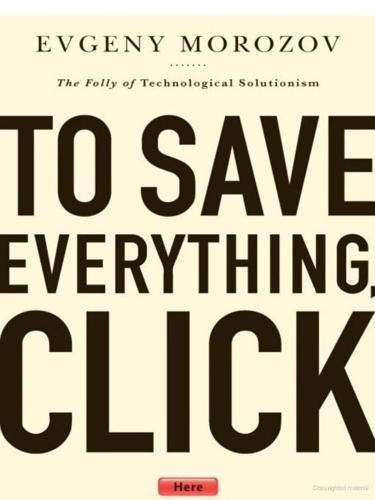
To Save Everything, Click Here: The Folly of Technological Solutionism
by
Evgeny Morozov
Published 15 Nov 2013
For example, we might discover that something like liberalism is unthinkable without an array of technologies to support it. Most liberal reformers have never shied away from the technological toolbox. Oscar Wilde was right: mechanical slavery is the enabler of human liberation. Or, as he himself put it, “unless there are slaves to do the ugly, horrible, uninteresting work, culture and contemplation become almost impossible. Human slavery is wrong, insecure, and demoralizing. On mechanical slavery, on the slavery of the machine, the future of the world depends.” Chris Otter, a historian specializing in technology and science in Victorian Britain, convincingly argues that Victorian values like punctuality, cleanliness, and attentiveness presuppose the existence of reliable watches, running water, and eyeglasses and would not have emerged without them.

Culture and Imperialism
by
Edward W. Said
Published 29 May 1994
In thinking of Carlyle or Ruskin, or even of Dickens and Thackeray, critics have often, I believe, relegated these writers’ ideas about colonial expansion, inferior races, or “niggers” to a very different department from that of culture, culture being the elevated area of activity in which they “truly” belong and in which they did their “really” important work. Culture conceived in this way can become a protective enclosure: check your politics at the door before you enter it. As someone who has spent his entire professional life teaching literature, yet who also grew up in the pre–World War Two colonial world, I have found it a challenge not to see culture in this way—that is, antiseptically quarantined from its worldly affiliations—but as an extraordinarily varied field of endeavor.

Future Politics: Living Together in a World Transformed by Tech
by
Jamie Susskind
Published 3 Sep 2018
In fact, as many of the examples in this book show, there’s plenty of evidence to suggest that digital technology is too often designed from the perspective of the powerful and privileged. As time goes on, we will need more philosophical engineers worthy of the name. And it will become even more important for the rest of us to engage critically with the work of tech firms, not least because tech working culture is notorious for its lack of diversity. Roughly nine out of every ten Silicon Valley executives are men.9 Despite the fact that African-Americans make up about 10 per cent of computer science graduates and 14 per cent of the overall workforce, they make up less than 3 per cent of computing roles in Silicon Valley.10 And many in the tech community hold strong political views that are way outside the mainstream.

Beyond the Wall: East Germany, 1949-1990
by
Katja Hoyer
Published 5 Apr 2023
Erich Honecker travelled to Japan himself in May 1981 on a full state visit where the two countries concluded trade deals totalling $440 million. Japan would deliver a car clutch plant as well as an iron foundry to East Germany. The GDR would in return send machinery to Japan. Honecker was also deeply impressed by Japanese work culture which valued discipline and efficiency while retaining a sense of collective effort over individual careerism. He marvelled at the automation processes which used robots to make high-end products. When he returned from his visit, he began to push for industrial modernization. Political pressure to achieve tangible economic progress was immense.

For the Win
by
Cory Doctorow
Published 11 May 2010
The Mouse has already shipped Disney Dollars, an abortive home-wares line, a disastrous fine-art chain, and oversaw the collapse of the collectible cel-art market. With “visionaries” like Page at the helm, the company can’t help but notch up more “successes.” Death was deep into the story now. The Brazilians had forked off their own ride—they’d had their own New Work culture, too, centered in the favelas, so they had different stories to tell. Some of the ride operators imported a few of their scenes, tentatively, and some of the ride fans were recreating the Brazil scenes on their own passes through the ride. It was all in there, if you knew where to look for it, and the best part was, no one had written it.

The Zionist Ideas: Visions for the Jewish Homeland—Then, Now, Tomorrow
by
Gil Troy
Published 14 Apr 2018
Vibrant interaction and interconnection among members, and with that, preventing any one individual from dominating others. The ideals of equality of labor and gender equality, in all their manifestations, at work, in education, and within the community. Nurturing the individual to flourish in the community and at work, culturally and spiritually, while valuing creative self-expression. A deep connection to Jewish tradition that nevertheless allows the individual a wide range of approaches, including innovative ones. Our kibbutz is a critical part of the Zionist enterprise, whose central mission is the Jewish people’s national, spiritual, and cultural renewal.

The Code: Silicon Valley and the Remaking of America
by
Margaret O'Mara
Published 8 Jul 2019
.: Stanford University Press, 2000), 131; “Salesforce: 100 Best Companies to Work For 2015,” Fortune, September 21, 2015, http://fortune.com/best-companies/2015/salesforce-com-8/, archived at https://perma.cc/96UG-X9LH. 13. Bylinsky, The Innovation Millionaires, 160. 14. Judy Vadasz to Leslie Berlin, The Man Behind the Microchip: Robert Noyce and the Invention of Silicon Valley (Oxford, U.K.: Oxford University Press, 2005), 214. I also gained useful perspective on industry work culture during this period from interviews with several former employees of Intel and other firms. 15. Ann Hardy, interview with the author, April 20, 2015, Stanford, Calif. 16. Noyce quoted in Berlin, The Man Behind the Microchip, 210. 17. Marty Goldberg and Curt Vendel, Atari Inc.: Business Is Fun (Carmel, N.Y.: Syzygy Press, 2012), 101–3. 18.

Elon Musk
by
Walter Isaacson
Published 11 Sep 2023
Some people need to be good at selling, others need the emotional skills of good managers, and some are merely uploading user videos and don’t have to be superstars. Plus, cutting to the bone risked having the system fail if anyone got sick or fed up. Musk did not agree. He wanted deep cuts not only for financial reasons but also because he wanted a hardcore, fanatic work culture. He was willing, indeed eager to take risks and fly without a net. James, Andrew, Ross, and Dhaval began meeting with Twitter’s managers and asking them to meet Musk’s targets of getting rid of up to 90 percent of their employees. “They were pretty unhappy,” Dhaval says. “They argued that the company would just crash.”

The Great Post Office Scandal: The Fight to Expose a Multimillion Pound Scandal Which Put Innocent People in Jail
by
Nick Wallis
Published 18 Nov 2021
It was cheaper and easier for all concerned to blame a Subpostmaster (and then go after them for a discrepancy with threats), rather than spend time and money digging into allegedly dodgy code. Richard eventually got out, fed up dealing with angry and upset Subpostmasters, and fed up with Fujitsu’s work culture. He retrained as a chiropractor and set up a practice in Reading. On 7 February 2011, as Richard sat eating his dinner, he watched Seema, Jo and David’s story being told, and he resolved to do something. ____________________ 1 A contract, or series of contracts and agreements which have never been made public.
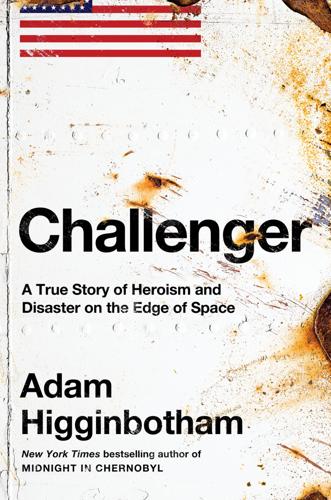
Challenger: A True Story of Heroism and Disaster on the Edge of Space
by
Adam Higginbotham
Published 14 May 2024
Over the next twenty-two years, he learned that there were a million things that could go wrong with a rocket engine—and discovered that at any moment, a single lousy twenty-five-cent part could cost you the whole ball game; it could go wrong, and there was nothing you could do about it. But that was the price of progress. Now, as Center Director, Lucas adopted the same management approach he had learned from his mentor, drawing on a working culture developed while building missiles for Hitler: hierarchical and conservative, with a reputation for secrecy and a reluctance to share information with colleagues beyond the fence in Huntsville. To the German engineers who had come to America with von Braun, this had felt like teamwork; to others, it looked like iron discipline, rigid and unforgiving, and an environment in which no individual felt free to take action without explicit approval from above.

The Wealth of Networks: How Social Production Transforms Markets and Freedom
by
Yochai Benkler
Published 14 May 2006
It does require, however, that liberal theory at least be able to diagnose different conditions in the practical cultural life of a society as more or less attractive from the perspective of liberal political theory. 508 The efforts of deliberative liberal theories to account for culture offer the most obvious source of such an insight. These political theories have worked to develop a conception of culture and its relationship to liberalism precisely because at a minimum, they require mutual intelligibility across individuals, which cannot adequately be explained without some conception of culture. In Jurgen Habermas's work, culture plays the role of a basis for mutual intelligibility. As the basis for "interpersonal intelligibility," we see culture playing such a role in the work of Bruce Ackerman, who speaks of acculturation as the necessary condition to liberal dialogue. "Cultural coherence" is something he sees children requiring as a precondition to becoming liberal citizens: it allows them to "Talk" and defend their claims in terms without which there can be no liberal conversation. 99 Michael Walzer argues that, "in matters of morality, argument is simply the appeal to common meanings." 100 Will Kymlicka claims that for individual autonomy, "freedom involves making choices amongst various options, and our societal culture not only provides these options, but makes them meaningful to us."

The Rise of the Network Society
by
Manuel Castells
Published 31 Aug 1996
Figure 6.3 displays schematically the spatial logic of this model, elaborated on the basis of empirical evidence gathered by a number of researchers in different contexts.32 A key element in this locational pattern is the decisive importance of technological innovation production complexes for the whole system. This is what Peter Hall and I, as well as the pioneer in this field of research, Philippe Aydalot, called “milieux of innovation.”33 By milieu of innovation I understand a specific set of relationships of production and management, based on a social organization that by and large shares a work culture and instrumental goals aimed at generating new knowledge, new processes, and new products. Although the concept of milieu does not necessarily include a spatial dimension, I argue that in the case of information technology industries, at least in this century, spatial proximity is a necessary material condition for the existence of such milieux because of the nature of the interaction in the innovation process.

The True and Only Heaven: Progress and Its Critics
by
Christopher Lasch
Published 16 Sep 1991
Crowley, This Sheba, Self: The Conceptualization of Economic Life in Eigbteenth-Century America (1974); Meyers, Jacksonian Persuasion; Kaufman, Capitalism, Slavery, and Republican Values; Howe, American Whigs; Sean Wilentz, Chants Democratic: New York City and the Rise of the American Working Class (1984); Eric Foner, Free Soil, Free Labor, Free Men: The Ideology of the Republican Party before the Civil War (1970); and the published reports of the New York constitutional convention of 1821. Herbert Croly's misgivings about wage labor can be found in Progressive Democracy (1914). My discussion of labor history rests on E. P. Thompson, The Making of the English Working Class (1964); Herbert G. Gutman, Work, Culture, and Society in Industrializing America (1976); Eric Hobsbawm, Primitive Rebels (1959); Craig Calhoun, The Question of Class Struggle: Social Foundations of Popular Radicalism during the Industrial Revolution (1982); William H. Sewell, Jr., Work and Revolution in France (1980); Robert J. Bezucha, The Lyon Uprising of 1834 (1974); Joan Wallach Scott, The Glassworkers of Carmaux (1974); Edward Berenson, Populist Religion and Left-Wing Politics in France, 1830-1852 (1984); Alan Dawley, Class and Community: The Industrial Revolution in Lynn (1976); Bruce Laurie, Working People of Philadelphia (1980); Steven J.
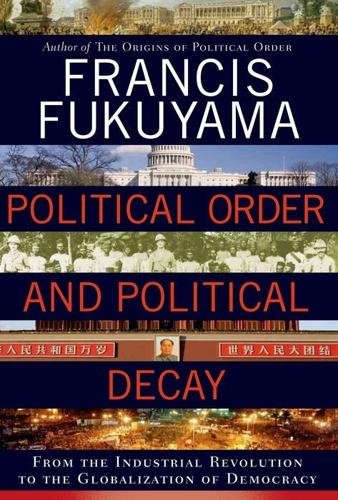
Political Order and Political Decay: From the Industrial Revolution to the Globalization of Democracy
by
Francis Fukuyama
Published 29 Sep 2014
There was a real precedent for the story of the Tower of Babel in the Bible: as humans spread to Europe, Asia, South Asia, Oceana, and eventually to the Americas, their languages and cultural practices began to differentiate as they settled into a wide variety of ecological niches. But there was at the same time a process of general political evolution at work: culturally diverse peoples had to solve similar problems, and they therefore came up with parallel solutions even though they had limited or no physical contact with one another. I have described a number of major transitions in political institutions that have taken place across diverse societies around the world: ° from band-level to tribal-level societies ° from tribal-level societies to states ° from patrimonial to modern states ° the development of independent legal systems ° the emergence of formal institutions of accountability These political transitions occurred independently in societies with very different cultural norms.

Iron Curtain: The Crushing of Eastern Europe, 1945-1956
by
Anne Applebaum
Published 30 Oct 2012
As one historian explains, some people saw right from the beginning that the system could provide them with a clear path to upward mobility, regardless of their background and regardless of their abilities, if they played by the rules: They were active in the party, they always had something to say at meetings and consultations—and it was always something “in line” and “correct” as we said back then. They defended the position of the directors and the party organization, they took part in after-work “cultural” activities and made other social contributions. Whatever the quality of their work and their professional training, they advanced quickly, though not necessarily in the workplace. More often they were promoted into the administration, or sent away on courses … sometimes they wound up in the party apparatus.44 A glance at the sociological backgrounds of the Eastern European communist leadership in the 1980s reveals that many activists from modest backgrounds did eventually climb to the very top.
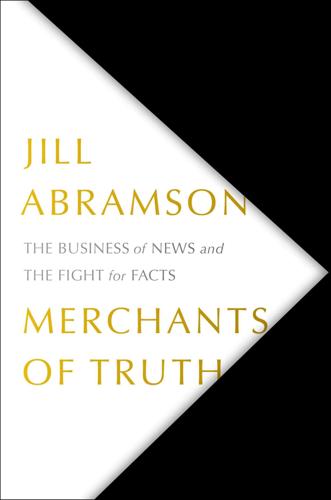
Merchants of Truth: The Business of News and the Fight for Facts
by
Jill Abramson
Published 5 Feb 2019
When Trump became president and aimed frequent tweets at Bezos and Amazon, blasting the paper as “the Amazon Washington Post” with false claims about its tax collections and burdens on the U.S. Post Office, the Post, along with everyone else, covered them. The Times ran a definitive investigation of the punishing work culture at Amazon, with grizzly anecdotes about employees crying at their desks and burning out because of the unrelenting pressure to fill orders and grow. Bezos attacked the story as anecdotal and unfair on the open website Medium. Baquet responded, defending the piece. Open digital platforms such as Medium now replaced the private conversations and postpublication confrontations that used to take place in editors’ offices.

Zbig: The Life of Zbigniew Brzezinski, America's Great Power Prophet
by
Edward Luce
Published 13 May 2025
Parsons’s “structural functionalism” claimed to foresee the USSR’s political future—in spite of the fact that he, like many of his sociological peers, spoke no Russian and had not yet visited the country.29 Such scholarship fueled Brzezinski’s mounting disenchantment with academia. His skepticism had been piqued in the mid-1950s by publication of a study by Inkeles, Kluckhorn, and Raymond A. Bauer, How the Soviet System Works: Cultural, Psychological, and Social Themes, based on the Refugee Interview Project, in which the US Army had given Harvard scholars access to thousands of Soviet refugees in Germany. From their interviews, the authors concluded that nationality and language played almost no role in the self-perceptions of Soviet people.

Scandinavia
by
Andy Symington
Published 24 Feb 2012
Norrköping Top Sights Arbetets MuseumB3 KonstmuseumD5 Louis de Geer KonserthusB4 StadsmuseumB3 Sleeping 1Hotel DrottB2 2Hotell HörnanC4 Eating 3BagarstuganC3 4Cafe BroadwayB2 5Jolla Choklad & DessertC4 6KnäppingenB3 7Pappa Grappa Bar & TrattorianC3 Arbetets Museum MUSEUM (Laxholmen; 11am-5pm) Sweden’s Museum of Work is just across the bridge from the Stadsmuseum in a 1917 building designed to mirror the island it sits on; named Strykjärnet (flatiron), it has seven sides, seven floors and a total of 7000 sq metres of floor space. The permanent displays on work culture over the years are engrossing for kids and adults alike; don’t miss the permanent exhibit about political cartoonists, primarily Ewert Karlsson, or EWK, whose work appeared in the New York Times and Le Monde . Louis de Geer Konserthus CONCERT VENUE ( 15 50 30; www.louisdegeer.com; Dalsgatan 15) A modern addition to the riverside scenery is this extraordinary 1300-seat concert house, in a former paper mill.

The Age of Surveillance Capitalism
by
Shoshana Zuboff
Published 15 Jan 2019
See also adolescence Genesis Toys, 266 genocide, 353, 356, 359, 365 Gentile, Giovanni, 354 Gentzkow, Matthew, 507 Geofeedia, 387–388 geofencing, 242 geotags, 242 Germany: commitment to democracy in, 517; Federal Commission for Data Protection, 143; Federal Network Agency, 267; responses to terrorism in, 114, 386; Street View in, 142, 143–144, 148–149; totalitarianism in, 355, 359 Gilded Age robber barons, 16–17, 52, 105–107, 524 Global Internet Forum to Counter Terrorism, 386 Gmail, 47, 139, 141, 161, 400 God’s eye view (observation from a distance), 418–419, 430, 434, 436; Facebook’s use of, 459–460, 470 Goebbels, Joseph, 355 Goethe, Johann Wolfgang von, 404, 481 Goffman, Erving, 471–472 “good samaritan” blocking of offensive material, 111 Google: 2017 user and device statistics, 400–401; campaign of influence over academic work/cultural conversation, 122, 125–127; concentration of AI talent at, 189, 190; and content moderation, 509; as content provider, 132, 506–507; continuous experimentation by, 298; corporate governance structure, 101–102, 511; declarations of conquest, 179, 341; and digital dispossession, 98–101; and disinformation, 507–508, 509–510, 511; and “for-profit cities,” 228–232; fortification strategies, 122–127, 341–342; founding of, 67; funding Pentland’s research lab, 417; grants to antigovernment groups, 126; and hyperscale operations (material infrastructure), 188–189, 500; and instrumentarianism, 401–402; and intelligence agencies, 115–120; involvement in electoral politics, 122–124; lack of cooperation with investigations/democracy, in Street View violations, 144–148; and lawlessness of cyberspace, 104–105; lawsuits against, 64, 139, 144, 146–147; lobbying by, 122, 124–125; manipulation of reality through algorithms that select and order information, 186–187; market capitalization of, 500; market share in Europe, 487; and Nest thermostat, 6; patents filed by, 77–80, 150; and Pentland, 417; personnel migrating to/from Obama administration, 122, 124; as pioneer/inventor of surveillance capitalism, 9–10, 18–19, 63–67; quantity of “products,” 129; relationship with users, 88; response to terrorism, 386; retaining search histories, 15; revenues of, 87, 93, 405; and “right to be forgotten” ruling, 27, 57–61; search for capitalism, 71–74; secrecy of, 64, 88–90; on “smart” products, 239; study of surveillance capitalist practices of, 24; and telematics, 217–218; tracking by, 136, 161, 168, 243–244; and voice recognition, 263; and wearables, 246; work on machine intelligence, 65.

Money and Power: How Goldman Sachs Came to Rule the World
by
William D. Cohan
Published 11 Apr 2011
Aron was a good idea. Whitehead had asked Steve Friedman to analyze the deal and make a recommendation. He did not see the fit between J. Aron and Goldman Sachs. “I looked at it and I basically thought, ‘Culturally—I’m a merger guy, I know how difficult it is to make cultures work—I don’t see this working culturally at the senior levels,’ ” Friedman said. “And we’re paying a heck of a price, in terms of goodwill.” Friedman had no problem with Goldman being in the commodities trading business but preferred the approach of finding the right people and building the business the Goldman way. Friedman thought that approach would be less costly—financially and culturally.